LAUNCH PAD: New Ford Courier, MAXUS eDeliver 7, WEVC-ETRUX & OHM 35 BEV



DIARY DATE: Connacht Truck Show 2023, Claremorris

INTERVIEWS: With Schmitz Cargobull UK & Geotab UK Executives

REPORTS: CBRE 2023 Logistics Index & Network International Cargo Forum
REVIEW: CV Show 2023, NEC, Birmingham
ARCTIC VAN TEST: Volkswagen ID.Buzz Cargo EV vs Toyota Proace Diesel
IRELAND'S LEADING COMMERCIAL VEHICLE MAGAZINE INSIDE
MAY/JUNE 23 €4.50 STG £3.75 inc.V.A.T Freeze
for Mercedes-Benz
Inside!
a Breeze
eActros LongHaul & eActros 300!
TRANSPORT
www.fleet.ie
www.fleet.ie


Engaging Connectivity
Engaging Connectivity
AWARDS 2024
leading Awards Programme for the Irish Road Transport and Haulage Industry
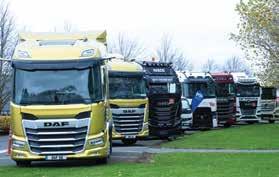
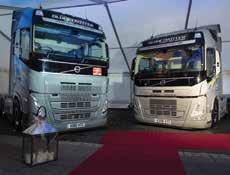



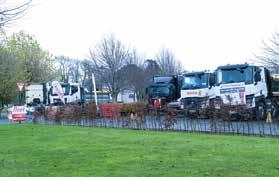
The




SAVE THE DATE:
Date: Thursday 9th November 2023
Venue: Johnstown Estate Hotel, Enfield, County Meath
n Create opportunities, build your brand and achieve a return on your investment
n Most valued and respected Awards programme in the transport industry
n Be associated with a high quality, popular event
n Widen customer contacts through networking at the event

n Meet and network with the key decision makers from the road transport industry
n Be part of an ongoing social media campaign
SPONSORSHIP OPPORTUNITIES: www.fleet.ie

For further information on sponsorship opportunities please contact: Orla Sweeney - +353 86 2439239 orla@fleet.ie Mary Morrissey - +353 87 2178495 mary@fleet.ie
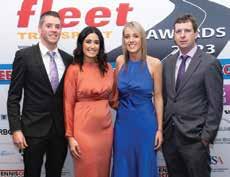
Fleet Transport Magazine, D’Alton Street, Claremorris, Co. Mayo, Ireland. F12 E7P2
Tel: +353 (0)94 9372819/ 9372826
Fax: +353 (0)94 9373571 | Email: enquiries@fleet.ie

Editor: Jarlath Sweeney - editor@fleet.ie

Contributors: Cathal Doyle, Sean Murtagh, Paul White, Donal Dempsey, Howard Knott, Kirsty Adams, Gianenrico Griffini, Rob Van Dieten, Juho Kauranen, Matti Aarnio, Kai Knïvilä
Photography: Jarlath Sweeney, Paul White, Cathal Doyle, Howard Knott, ASO, Newspress, Mercedes-Benz Trucks, David Murphy Photography, Kirsty Adams, UKWA, Gianenrico Griffini, Juho Kauranen, Tero Räsänen
Administration: Orla Sweeney
Email: enquiries@fleet.ie
Advertising: Mary Morrissey
Email: mary@fleet.ie
Design: Crackerjack Design House

Printed in Ireland
II Part 2 of 231 reg trucks
18 N EW F LEET III

Award winning Dennis Eagle eCollect for Thorntons
20 R EPORT I
Network International Cargo Event, Dublin
22 R EPORT II
50 T RAILER
Schmitz Cargobull opens new UK factory
52 COMMENT
Brexit pains continue
54 P REVIEW
Truck spotlights to shine on RTX EXPO 2023
55 S UPPLY C HAIN
Wenko counts on IT
58 R EPORT III
UKWA Conference 2023, Stratford-upon-Avon
60 R EPORT IV
Geotab’s new Innovation Hub in High Wycombe
61 R EPORT V
SEAI Energy Show 2023, RDS, Dublin
62 P OLAR T EST
MAN eTrucks tastes Arctic Circle snow!
64 F IRST D RIVE
Testing a fleet of new Ford LCVs
Fleet Transport/ Fleet Car/ Fleet Bus & Coach/ Fleet Van & Utility/ Fleet Trailer & Body Builder/ Fleet Maritime/ Green Fleet Management are published by JJDS Publications Ltd.

Registered Office: D’Alton Street, Claremorris, Co. Mayo. Co. Reg. 368767
Directors: Jarlath Sweeney, Sean Murtagh.
2023
Disclaimer: Fleet Transport Magazine management can accept no responsibility for the accuracy of contributed articles or statements appearing in this magazine and any views or opinions expressed are not necessarily those of Fleet Transport management, save where otherwise indicated. No responsibility for loss or distress occasioned to any person acting or refraining from acting as a result of the material in this publication can be accepted by the authors, contributors, Editors or publishers. The Editor reserves the right to make publishing decisions on any advertisements or editorial article submitted to the magazine and to refuse publication or to edit any editorial material as seems appropriate to him. Professional legal advice should always be sought in relation to any specific matter.
CBRE Kingspan Ireland Logistics & Confidence Index 2023
24 AWARDS N EWS Fleet Transport Irish Haulier of the



68 O FF -R OAD
Ford Ranger Raptor Experience, UK
69 A RCTIC VAN T EST
Exclusive van comparison Diesel v Electric
72 P ROTOTYPE
Free wheelin’ on the Freeway with Freightliner
& Freight Newsletter

38 F LEETIN g S HOTS
Merc Arocs, Ram EV & Allison/Sany featured
41 AWARDS

Fleet Transport Irish Haulier of the







75 N EWS
Industry and sector developments
Ford goes Exploring and beyond!
77 I NTERVIEW
With David Savage, Geotab
78 T EST I
New Renault Megane E-Tech
79 T EST II
New Nissan X-Trail E-Power
80 L AUNCH PAD
Arrivals from Alfa, BYD, VW, Jeep, Mercedes & Cupra
82 CONTEMPLATIONS
BIK and the Grey Fleet threat
CONTENTS – I SSUE 3 2023
www.fleet.ie | 3
Fleet Transport
Irish
the International Truck of the
Contents MAY/ JUNE 2023 follow us on twitter.com/fleettransport 4 N EWS Introducing new Ford Courier – Gen II Sign up for the Connacht Truck Show 2023 MAXUS adds eDeliver 7 to EV LCV fleet 10 I NTERVIEW With Schmitz Cargobull Executives 12 COVER Mercedes-Benz eActros in the Arctic Circle 14 N EW F LEET I First of three feature pages on new truck sales 16 N EW F LEET
Official
Jury Member of
Year Award
Year
categories
26
CV
30
REMIERES Launches from WEVC & ETRUX and OHM 32 LCV MAN VAN DAY – TGE 3600 - Spain 34
LEET M ARITIME Shipping
Awards –
announced
R EVIEW I
Show 2023, NEC, Birmingham
P
F
Year Awards Entry Form 46 F INANCE Crystal Ball gazing 48 O PINION Boom v Recession 49 S AFETY Health & Safety Authority Advice
Official Irish jury member of the International Intralogistics & Forklift Truck Awards
Keep up to date with all the latest news and views from the transport industry in our weekly ezine or daily on www.fleet.ie
The all-electric E-Transit Courier is part of the new second generation compact van family from Ford Pro, designed to deliver new levels of capability, efficiency and value to business customers. An all-round larger vehicle than its predecessor, new Courier aims to serve a broad selection of clientele with three drivetrains: petrol, diesel and electric.
Transit Courier’s high bonnet line, upright grille with integrated headlights, signature LED light bar and broad grille create a distinctive new look. An exciting design project, according to Amko Leenarts, Design Director, Ford Europe: “The new Transit Courier is a clean-sheet design that puts Ford Pro’s cutting-edge technologies and hard-working nature into a compact, modern van. The front end emphasises its toughness and capability, while the visor-like windscreen and high belt line give it a trustful stance. The spacious cabin is designed to declutter drivers’ days and be a connected, productive sanctuary to help them get the job done.”
Just like the exterior, the E-Transit Courier’s cabin features unique elements including a ‘Squircle’ steering wheel for increased legroom and visibility. It features a new ‘digiboard’ with 12” digital cluster and 12” SYNC 4 touchscreen (8” 0n the ICE engined versions). The floating instrument panel has been designed to provide improved space and visibility. Greater storage and organisation solutions are provided with a class-unique foldaway flat surface that is large enough for a laptop or pad, a space-saving electric handbrake and column-mounted gear shifter, plus a new, large centre console with configurable storage and removable elements to easily and securely organise devices, clipboards and smaller items. Standard

Ford Pro’s Generation II Transit Courier – New Crossover Van?
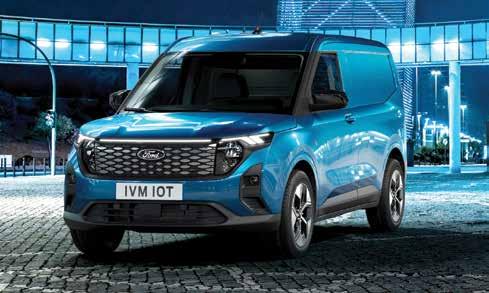
keyless start, rear-view camera, and front and rear parking sensors help make urban driving easier, while a 10.7-metre kerb-to-kerb turning circle and overall length under 4.4 metres improves manoeuvrability and access to tight spaces.
New Transit Courier’s load area is larger in every dimension than the outgoing model and can now carry two Euro pallets – made possible by a new rear suspension design that increases the width between the wheel arches by over 200 mm. On the electric model, a 44-litre frunk is standard on all E-Transit Courier models and is ideal for holding small items like charging cables and a first aid kit.
The petrol and diesel Transit Courier models offer a standard payload of up to 750 kg. Maximum trailer towing weight is 1,100 kg for the diesel and 1,000 kg for petrol powered variant. Customers can specify Ford’s advanced 1.0-litre EcoBoost petrol with 100 PS or 125 PS, or a 1.5-litre EcoBlue diesel with 100 PS. A six-speed manual transmission is standard, while the 125 PS petrol engine is also available with a new seven-speed, dual-clutch automatic gearbox. Auto Start-Stop and an Active Grille Shutter are standard for maximum efficiency. Meanwhile the E-Transit Courier is fitted with an all-new electric 100 kW (136 PS/290 Nm) powertrain.
E-Transit Courier’s all-electric powertrain helps contribute to a significant reduction in service cost of ownership, at least 35 percent lower than on diesel-powered Transit Courier models, according to Ford. Ford Pro
ETelematics takes live data from the vehicle and displays easy-to-understand actions and insights that help optimise EV fleet management. Operators can also receive collision and vehicle break-in alerts and fleet managers can remotely enable and disable the vehicle to help prevent theft or unauthorised use outside of work hours.
Transit Courier was designed and engineered by teams in Ford Otosan’s Sancaktepe Research & Development Centre, Türkiye, in partnership with the Ford Pro commercial vehicle specialists in Dunton, UK, and Cologne, Germany. All Transit Courier models will all be produced in Craiova, Romania. The Turkish company has announced a 3-year, €490 million investment plan to expand production. With the addition of the Craiova plant, Ford Otosan’s total annual production capacity is set to exceed 900,000 vehicles by 2025.
COMMENT
What’s most interesting is that Generation II Courier, with its broader and wider dimensions, will eat into the next-in-line Ford Transit Connect. The fact that the latter model is now supplied by Volkswagen Commercial Vehicles, (as a rebadged Caddy) under a collaboration agreement, means that Ford can maximise its productivity and profitability with a stronger hand, with products that cross between the compact and small van segments.
FLEETTRANSPORT | MAY 23
| NEWS 1
4 | NEWS I
Drive quality
with the Power of Volvo
Wherever you go, Genuine Volvo Parts deliver tried-and-tested performance – precision crafted to keep you moving, no matter the driving conditions. Enjoy true peace of mind, with the Power of Volvo behind you.*
Contact your local Volvo Trucks dealer to find out more about Genuine Volvo Parts

* Terms and Conditions apply and are available upon request from your local Volvo Trucks dealer. #DriveConfident Volvo Trucks. Driving Progress.
Connacht Truck Show returns to Claremorris for 2023 – Saturday 3 June
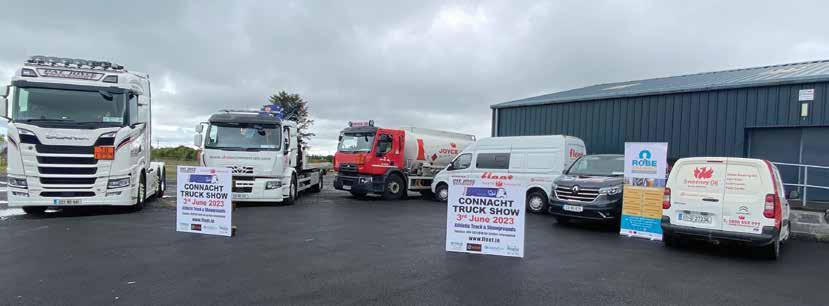
*Returns to Athletic Track & Showgrounds
*New Designated Charity – Mayo-Roscommon Hospice
*New Date *Health Checks
The third running of the Connacht Truck Show will be held at Claremorris Athletic Track & Showgrounds on Saturday 3 June (June Public Holiday weekend). Event organiser Fleet Transport magazine has selected a new date at a venue used previously in order not to clash with other locally held events. Mayo Roscommon Hospice has been selected as the designated charity for this popular event.
“The Claremorris Athletic Track & Showgrounds, situated 1km from Claremorris town centre, was once the venue of horsepower of a different kind, as the vast site was a popular Racecourse in the early part of the last century. A poster promoting the Claremorris Races on 3 June 1904 was subtitled ‘The Great Annual Re-Union of the West’, a feat that the Connacht Truck Show aims to emulate on 3 June. “It is the perfect location, offering ample display areas for the trucks, and trade stands, plus plenty of space for kiddies activities,” explained Jarlath Sweeney, Group Editor, Fleet Publications.
Connacht Truck Show 2023 will have a number of interesting elements, including gleaming Haulage Trucks displays and Classic & Vintage Trucks Jamborees, while there will be a number of top prizes on offer for the most impressive exhibits.
The one-day gathering will feature trucks of all ages, shapes and sizes. Not only will it feature vehicles from road transport operators from all around the province, but many exhibitors will be travelling from further afield. That will include a number of hauliers crossing the Irish Sea to come to the ‘Heart of the West’ to exhibit their everyday working trucks. The big prize - ‘Top Truck of the
Show’ – selected by show visitors, will once again be dedicated to local truck driving legend, the late Paddy Kelly.
A selection of food trucks, mobile coffee units and ice cream vans will also be on site, in addition to clothing and merchandise stalls, plus vehicle care products.
Looking forward to the event, Martina Jennings, CEO, Mayo Roscommon Hospice commented: “We are absolutely delighted to be chosen as the partner charity for the Connacht Truck Show. We fund palliative care services through fundraised income so events like this are vital to ensuring we can continue to do this. We are so grateful to Fleet Transport and all involved, and wish them the very best of luck with what we are sure will be a very successful day!”
Two themes will run throughout this one day event: Truck Driver Welfare and Business Networking.
As truck drivers can be susceptible to various health issues because of the nature of their work, there will be a
health check clinic hosted in association with the Hospice and the Order of Malta open to show visitors throughout the day, with advice on blood pressure, prostate and skin cancer, diabetes, heart problems etc.
In addition, the trade stands exhibiting inside and outside the indoor facility are there to do business with truck drivers, fleet operators and show visitors on the day.
“Interested parties are urged to register in advance of the event in order to assure entry, which is open to tractor-units and rigid trucks only. Trade stands are also welcome to register at this time,” added Jarlath.
The Connacht Truck Show 2023 sponsors include Pat Joyce Transport, Claremorris & Joyce Oil/Sweeney Oil (Claremorris & galway), Capital Flow Finance, Robe Training, Ballinrobe and Western Truck & Trailer, Claremorris

FLEETTRANSPORT | MAY 23 | NEWS 1
6 | NEWS II
Pictured left to right at the launch of the Connacht Truck Show 2023 were: Andrew Grennan, Western Truck & Trailer, Claremorris; Gerry Lynch and Marty Grogan, Truck Show Committee; Darragh Coen, Capital Flow; Ciara Naughton, Order of Malta; Jarlath Sweeney, Fleet Transport; Martina Jennings, Mayo Roscommon Hospice; Cathal Doyle, Fleet Transport; Michael Coughter, Shaw Commercials, Castlebar; Pat Joyce, Pat Joyce Transport, Claremorris; Martin Delaney, Sweeney Oil; Jack Doyle, Joyce Oil, Claremorris and Elaine Tiernan, Robe Training, Ballinrobe.
2023 Faymonville 9ft wide 3 axle step frame, extendable low loader, Double flip ramps, Hydraulic rear legs, rear steer axle, also non extendable version in stock.

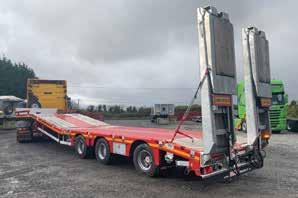
2023 Feldbinder bulk powder tank, 38 cubic metres, 2 pot, 3 lid, ladder and catwalk, BPW axles, durabrite wheels, Pipe carrier, toolbox, rear lift axle, Choice of 2 in stock with and without power pack.



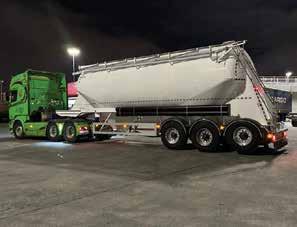
2023 Schmitz 4m, Euroliner with COIL WELL, removable covers over well, post sockets in side rave, post sockets across floor for 2nd headboard, safety mesh in curtains, 5 rows of alu side boards with storage, sliding roof, galvanised chassis, Choice of 2 with Coil Well, Choice of 4 standard euroliners also.
2023 MAX trailer, 3 axle low loader with lifting floor to neck, double flip ramps, outriggers, rear steer axle, lockable toolbox, greaser, safe and easy access to the gooseneck, in stock.
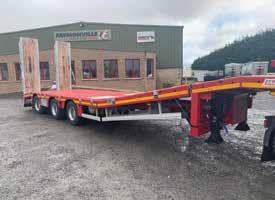

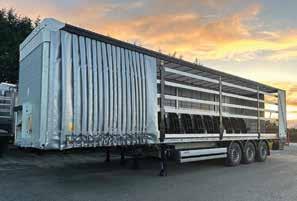
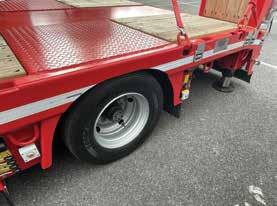
VIEWPOINT | 9 www.ashbournetruckcentre.com Ashbourne Truck Centre, Ballymadun, Ashbourne, Co. Meath, Ireland Tel: 00353 18350573 Josef: 0035387 255 66 77 Sarah J: 0035386 255 66 77
With a 12-strong vehicle display at this year’s CV Show at the NEC, Birmingham consisting entirely of Light Commercial Electric Vehicles (EV), MAXUS reaffirmed the Chinese brand’s pioneering status in the EV market with the premiere of its eDELIVER 7 mid-sized panel van.

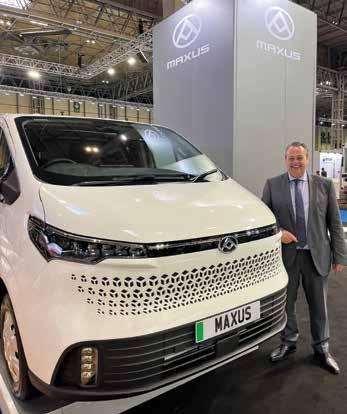
In entering the biggest market segment in the van sector, MAXUS now has all of the main categories covered, as eDELIVER 7 bridges the gap between the marque’s current eLCV offerings, from the smaller eDELIVER 3 to big brother, the eDELIVER 9.
Maxus says its new 1-tonne+ eVan offers considerable range, clocking up to 365km (WLTP combined) on a single charge (88kWh battery).
Available in three size configurations, with a payload of up to 1200kg, the eDELIVER 7 features a 150kW/330Nm high power, low energy motor with an acceleration time of 0-100km in 11 seconds. There are two battery options from which to choose: 77kWh and 88kWH
Cargo volume stretches from 5.9m3 to 6.7m3 to 8.7m3 depending on the wheelbase and roof height.
DC + AC dual charging modes are
MAXUS adds to eLCV range with eDELIVER 7
available, with the DC mode taking 43 minutes of charge time to reach 80% capacity.
The eDELIVER 7 offers three driving modes, Eco, Normal and Power, and a one-touch start. Safety features include blind spot detection, lane change assist, AEBS (automatic emergency braking system), fatigue driving monitoring, plus front and rear parking sensors and 360 degree cameras. A 12.3” touch screen infotainment system is also included as standard with Apple Carplay and Android Auto available.

Speaking at the launch of the eDELIVER 7, Mark Barrett, Director of Harris MAXUS (pictured) said: “The CV Show is a key date in the MAXUS calendar. In 2016 we launched our first all-electric commercial vehicle, the EV80,
at CV Show. Today marks our fourth vehicle launch at the NEC Birmingham, and our sixth EV vehicle launch in just seven years. In that time, we have positioned ourselves as a market leader when it comes to electric vehicles and the eDELIVER 7 builds on our EV range, securing our position in this regard.
“Our electric vans have proven popular with businesses in the delivery, pharma and grocery/retail sectors, as well as being the number one choice for many local councils that are looking to switch to electric. Our latest addition is pitched at those who need more payload capacity than the eDELIVER 3, but who may not need the full-size capabilities of our eDELIVER 9.”
FLEETTRANSPORT | MAY 23 | NEWS 1
Text and photos: Jarlath Sweeney - editor@fleet.ie
8 | NEWS III
Takes your fleet further. And your performance, too.

The new Conti Hybrid HD5.
German engineered high-mileage tyres.
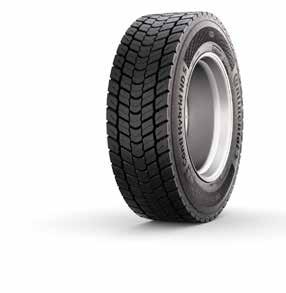
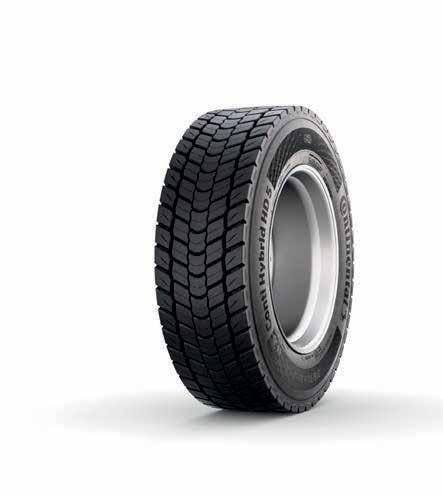
Look forward to exceptional high mileage thanks to the new compound formula developed for regional operations.
Benefit from impressive traction in all weathers due to an extrarobust tread pattern including new full-width 3D matrix sipes.
Enjoy high casing protection and a great tread integrity by minimised stone-trapping enabled by void generating grooves and stone bumpers.
www.continental-tyres.ie
Generation 5. Together we make difference.
Interview with...
Having attended the official opening of your new UK manufacturing facility in Manchester, would you agree that this significant investment is making a clear statement of intent to your UK & Ireland customers?

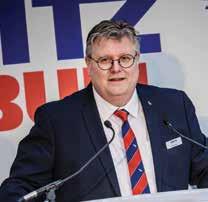
Colin Maher: “We are where our customers are” – this is not just a slogan, but a brand promise we live for. With the Schmitz Cargobull production plant in the UK, and our specific product and service offerings for UK and Irish hauliers, we aim to provide the best possible support to the industry with a comprehensive range of reliable and innovative transport solutions. This includes a market-specific product offer with shortest delivery times and extensive 24/7 spare parts supply, and our proven range of services from financing to telematics and used vehicle sales.
Paul Avery: The decision to launch manufacturing again in the UK was developed over an intensive study of the UK and Irish markets. The realisation was that it is important to have a more domestic approach to the market to provide high specification trailers to the UK and Irish customers and, of course, also increase our market share. We also recognised that our customers in the UK and Ireland have a real need
for sustainable transport solutions. Having implemented sustainability into our product strategy at an early stage, we can already offer our customers a range of solutions that reduce fuel consumption and CO2 emissions, are recyclable and offer low operating costs and total cost of ownership.
From your time with the factory at Harelaw in the past, what did you get to know about the British and Irish customers back then that is carried forward to now in Manchester?
Paul: In the UK and Ireland, different vehicle requirements are applied than in other markets, e.g., for the height and permitted total weight of the trailer. This requires a different vehicle construction. Therefore, we have decided to go back to the market with our own factory and our own product range, which is specifically tailored to the requirements of the transport industry in the UK and Ireland. Only in this way can we optimally support our local customers in their transport tasks with efficient product solutions and tailor-made service offers, in accordance with the “one-stop shopping” concept.
A competent and full team of experts, based in Manchester, takes care of our customers’ needs. This
includes engineers to help with product specification and design, after-sales service providing extensive support and assistance, and spare parts sales providing many “off the shelf” spare parts. We also offer our customers tailored financing solutions and a used vehicle trade. These services are not new to our Schmitz Cargobull UK team and all these offerings were present in the plant in Harelaw and even after its closure. However, in the meantime we have been able to use our extensive market experience to offer our customers even more service and product benefits and to further develop our staff team.
Currently the new facility is concentrating on curtainsiders and box bodies. Will other products become available from here also?
Paul: At the Manchester plant we are currently concentrating on the market-specific design and assembly of the dry freight semi-trailers S.BO PACE and the curtainsiders S.CS FREEPOST and S.CS FIXED ROOF. All other trailers, such as the reefer semi-trailer S.KO COOL and the fully electric S.KO e COOL, the S.CS UNIVERSAL curtainsider and the trailers of the aerodynamic EcoGeneration, the S.KI tipper and the S.CF container chassis range are manufactured in our

FLEETTRANSPORT | MAY 23 | NEWS 1
Paul Avery and Colin Maher - Managing Directors at Schmitz Cargobull UK & Ireland
Paul Avery
10 | INTERVIEW
Colin Maher
other European production facilities with the support of the Manchester team. Engineers, production and logistics teams work closely together to ensure that quality and productivity are constantly ‘under the microscope’ to ensure that we are producing the best products for our customers. Quality and on-time delivery are our highest priorities, and we are committed to expand the capacity of the Manchester plant so that we can serve an even wider range of customers.
As well as trailers, the UK & Ireland customers will benefit from a new and broader aftermarket service. What is involved here and how will it be implemented? (especially for Ireland)
Colin: Aftermarket or Aftersales to us means Service. It is important to understand that this is not something that simply follows a sale but is a premium service we offer our customers. Nowadays cost of ownership is more important than it has ever been, cost of ownership includes reduced maintenance through designed engineering and technology such as our telematics. We offer an extensive 24/7 spare parts supply directly from Manchester. Our service offers range from financing to used vehicle sales. Especially our customers in Ireland appreciate the S.KI tipper range. In the UK and Ireland, we are working with a network of around 70 experienced service partners who take care of the professional repair and maintenance of our customers trailers. This network is to be further expanded in the coming years. Depending on the vehicle equipment and operating conditions, we offer service modules and contracts that are individually tailored to the customer’s needs. Schmitz Cargobull coordinates inspection and maintenance work as well as financial processing. In addition, the customer can be informed in good time about the condition and wear of the technical units via the TrailerConnect telematics system, which helps to avoid breakdowns and shorten service stops. Repairs can be carried out professionally in the entire Europe-wide Schmitz Cargobull service partner network at over 1,700 authorised service partners.
Schmitz Cargobull has become a full trailer and added services provider, but is the take up on your refrigeration, telematics, and connectivity services in general increasing in the marketplace?
Colin: The ability to view and share this data historically and in real-time has enabled refrigerated critical cargo to arrive with evidence of guaranteed integrity and safety, from food freshness to critical pharmaceutical requirements. Therefore, we are experiencing a very high level of acceptance, and demand has risen sharply in recent years. For efficient fleet management, the focus of logistics service providers should not only be on a high-quality trailer and its components with high uptime, but also on the digital services surrounding the information and data from the vehicle. Schmitz Cargobull is an innovation driver by providing and developing systems from a single source.
We succeed in this primarily through the digitalisation of production and products as well as consistent system integration in the vehicles. That is why we are increasingly investing in our in-house technology expertise, thus ensuring the rapid implementation of electronics, mechatronics and software products. The best example of perfect system integration is the fully electric S.KOe COOL with e-axle – a complete package of a reefer semi-trailer, electrical refrigeration unit, E-axle, battery system, power electronics, TrailerConnect telematics and digital services, all developed in-house and optimally coordinated with each other.
Thanks to our 100% Smart strategy, all vehicles are equipped with our TrailerConnect telematics as standard ex-works. This makes a significant contribution to increasing efficiency and reducing the total cost of ownership. For example, all cooling units are networked with the smart trailer and feature user-friendly software that can also be updated ‘over-the-air’. This means that it is possible to update the software of the transport cooling units wirelessly. As such, the transport cooling unit is a mobile end device that can be provided with an update service over-the-air.
The TrailerConnect control unit acts as a central data gateway in the trailer. It is configured so that it can be activated at the factory during vehicle assembly and automatically logs into the cloud with the vehicle ID number. All necessary vehicle data can be retrieved and processed via this gateway. The data can then be securely imported and shared in the data management centre, with third-party systems such as Real Time Visibility platforms. This gives the customer automated and controlled
data transparency and data security. This is also a result of end-to-end system responsibility between product development, manufacturing, and data communication.
Our mission is to enable our customers to exploit the full potential of the digital world. Schmitz Cargobull is no longer ‘just’ a vehicle manufacturer, but a system provider with the corresponding service offerings for the trailer.
How is the used trailer market holding up?
Colin: Following the upturn in used trailer sales seen in previous years this market remains above where it was, during more normal times. The used trailer market is an important element and a growth area for us also when it comes to cover peaks in demand und ensuring fast availability of vehicles.
What’s next in the plans ahead?
Colin: Sales for us is all about the Customer Service. Through an internal project we have set ourselves, the task is to constantly exceed customer expectation, especially following a sale and for the many years after. We work on the principal that every interaction we have with our customers creates an experience, and the better the quality of that experience, the more we can build loyalty to our products, services, and ourselves.
Paul: In Manchester we are currently working on the introduction of ISO 14001 – Environmental Management and ISO 45001 – Occupational Health and Safety. Awarded ISO 9001 – Quality Management in May 2022, following a first-time audit, the business has strived to establish a set of very robust management systems that ensure repeatability in quality excellence and product reliability. The Schmitz Cargobull group has a very intense sustainability strategy, and every area of our business is totally focussed on sustainability improvements. Our belief is preparing for our future will ensure our business will prosper. The production facility at Manchester is constantly being reviewed and improved. We have a strong approach to empowerment of our colleagues and the strength of the business resided in the strength of the people. We will continue to develop as a business, growing stronger to ensure longevity of our full range of products and services.
With Jarlath Sweeney - editor@fleet.ie
www.fleet.ie INTERVIEW | 11
Mercedes-Benz Trucks tests eActros heavy-duty electric trucks around Arctic Circle
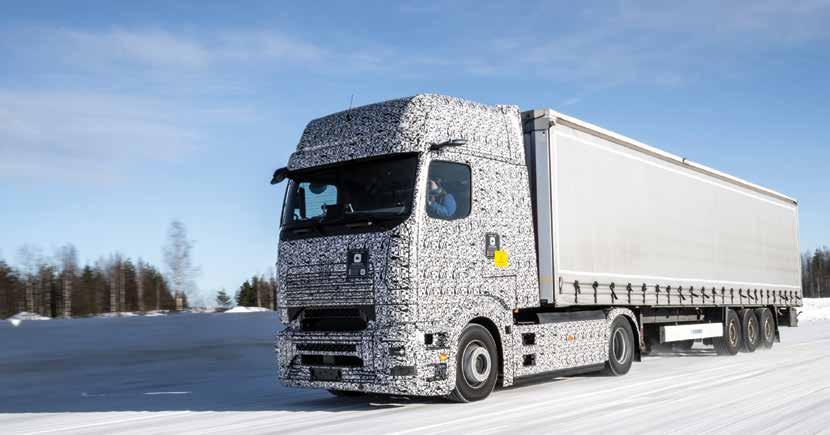
Road transport companies are placing the same demands on battery-electric trucks as they do with their counterparts with conventional diesel engines. Even in difficult weather conditions including cold, ice and snow, the vehicles must reliably do their job. Against this background, this year’s Mercedes-Benz Truck Winter Test program along the Arctic Circle at Rovaniemi, Finland once again proved to be an important endurance test for assessing the capabilities of electric trucks against ICE powered versions. This included vehicles from various model series including prototypes of the battery-electric eActros LongHaul, with series production planned for 2024, and the tractor-unit version of the battery-electric eActros 300, as well as the conventionally diesel powered Actros L.
Running under extreme climatic conditions on snowy and icy roads, with harsh winds and temperatures down to minus 25 degrees, the development and test team thoroughly tested each of the individual models in order to derive possible measures for further development and improvement.
On site Dr. Christof Weber, Head of Global Testing
MercedesBenz Trucks, explained: “Testing our product range under extreme winter conditions is also an essential part of our vehicle development in terms of
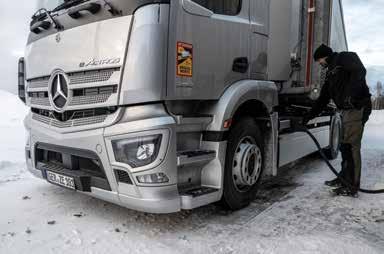
alternative drives. Haulage companies must be able to rely on our electric trucks in a highly competitive environment at any time of year, just as they are used to from conventionally powered vehicles. For this reason, our test engineers in Finland put the vehicles through their paces for six weeks.”
Under
assessment by the Mercedes-Benz Truck development engineers were all the functions and systems of the vehicles including the safety support systems, for example when changing lanes as part of the Active Sideguard Assist, or using active lane guidance with Active Drive

FLEETTRANSPORT | MAY 23
12 | COVER
Assist in the Actros L.
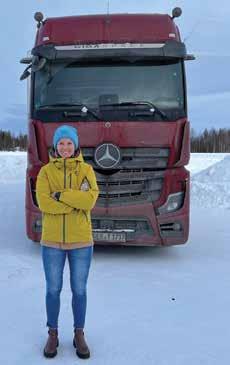
As several national borders had to be crossed, it was also possible to measure the impact of country-specific lane markings, traffic signs or digital map data on the performance of the assistance systems installed in the trucks. The fact that the trucks were tested during a full day’s exercise also allowed other aspects such as the comfort of the driver’s seat to be evaluated.
While testing the eActros LongHaul and the eActros 300 Tractor, experts paid particular attention to the battery properties and how the electric drivetrain coped when operating in adverse weather conditions. For this purpose, elements including the starting mechanism and drive components’ protection from low temperatures, software and interfaces were trialed. In addition, thermal and energy management systems were subjected to intensive testing. These ensure that both the drivetrain and the driver’s cab are temperature-controlled correctly and
energy-efficiently, even at low temperatures.
The tests revealed that the eActros LongHaul generally heats the cab faster than a diesel truck thanks to its smaller heating circuit with high output. However, since the energy for this is taken from the batteries installed in the vehicle and therefore the range is reduced, so-called pre-conditioning of the electric truck at a charging station is advisable. After pre-conditioning, the eActros LongHaul loses less range even in extremely low temperatures.

“We are very satisfied with our test results. The tests of the batteries and electric drivetrain properties at extreme temperatures and of the vehicles’ driving properties on slick, icy roads show that even in very wintry conditions our battery-powered trucks are fully operational,” stated Dr. Christof.
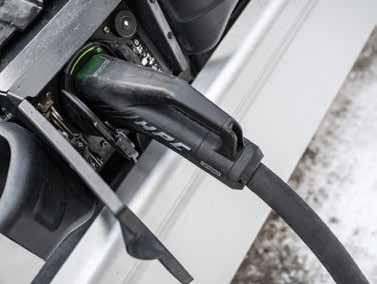
The Winter Test also included numerous measurements of driving and braking properties on surfaces with different levels of grip, as well as other tests such as the impact of slush on the effectiveness of the sensors of driver assistance systems. Also tested was how the Trailer Stability Assistant can reduce the risk of tractor-trailers skidding during cornering or evasive manoeuvres on winter roads and how the MirrorCam
handles different contrast conditions on ice and snow.
S TART OF SERIES PRODUCTION SOON
In its tractor unit form, the eActros 300 model variant, introduced for the first time at IAA Transportation 2022 in Hanover, can pull all common European semitrailers, taking into account the maximum permissible overall vehicle combination length. The electric truck is based on the same technology as the eActros 300/400. Three battery packs, each with 112 kWh of installed battery capacity, enable a range of up to 220 kilometres on a single battery charge. Series production is scheduled to start in the second half of 2023.
The eActros LongHaul is scheduled to be ready for series production for long-distance transport by 2024. Last year, Mercedes-Benz Trucks unveiled a concept prototype of the electric truck at IAA Transportation in Hannover. The series-production eActros LongHaul offers a range of around 500 kilometres range distance and will enable high-performance charging. At IAA, it was awarded the 2023 Truck Innovation Award by the International Truck of the Year jury. Batteries with lithium iron phosphate (LFP) cell technology are used in the eActros LongHaul, assuring a long service life and more usable energy.
Rob Van Dieten - rob@fleet.ie
COVER | 13
Text:
Photos: Mercedes-Benz Trucks
Tasting the action! Karin Rådström, CEO - Mercedes-Benz Trucks
Another batch of 231 truck sales at McElvaneys Scania


Dundalk, County Louth based Kieran McKay Ltd., established in 2006, is a continental transport provider, specialising in ambient and refrigeration road freight services. The company recently purchased this new Scania 660 S 4x2 tractor-unit from McElvaneys.
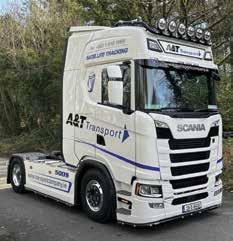
Virginia International Logistics, the family owned business headquartered in County Cavan, and with depots in Meath, Dublin and Tamworth, UK, offers groupage, and part and full-load services within a variety of industries including Foods (FMCG), Electronics, Pharma and Manufacturing. Recently, two new Scania R540 6x2 Highline tractors joined the fleet.
A & T Transport (Dublin) purchased this new Scania 500 S 4x2 tractor-unit, which comes with front air suspension, full leather interior package, plus much more. A&T Transport, founded in 2011 is a dynamic and progressive, Irish owned transportation company that provides a cost effective, safe and reliable transport service to B2B and B2C companies in the UK and Ireland.
Another Renault Trucks Deal at Dennehey Commercials

Sales Executive Martin Hough at Dennehy Commercials, Limerick, the Renault Trucks Main Dealer that serves Ireland’s Mid-West, sold this brace of Renault C440 8x4 tippers to Carroll Quarries, Portlaoise. They feature tarmac spec, built by Fitzgerald Body Builders, Cork and are powered by Renault’s renowned 13 litre, 440 hp Euro6 diesel engine coupled to 12-speed automated transmission.
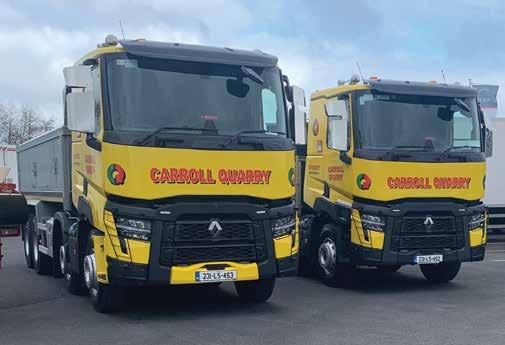
FLEETTRANSPORT | MAY 23 | NEWS 1
14 | NEW FLEET I
Looking to renew your insurance? Look no further, we will do it for you, we’ve been doing it for 50 years. Call Mike Murphy Insurance today! Simple and hassle free - the way insurance should be? Call 01 2900200 or go online www.mikemurphyinsurance.ie New Sure Life Ltd trading as Mike Murphy Insurance is regulated by the Central Bank of Ireland.

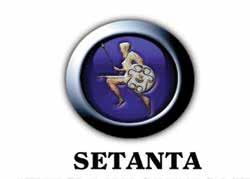

www.fleet.ie SETANTA VEHICLE SALESNewly Appointed Importers & Distributors for … For further information and sales enquiries contact: Alfie Barker – 083 4898482 Trailer Sales - John McCann - Mobile – 087 3707914 Email: john.mccann@setantatrucks.ie Setanta Vehicle Sales, Setanta House, M2 Business Park, Goddamendy, Ballycoolin, Dublin, D15FYX7 Check out our website for trailers for sale atwww.setantatrucks.ie NEW TRAILERS IN STOCK….NOW!
Galway-based waste management specialists, Walsh Waste has added a rather special bespoke new MercedesBenz Actors 2551L 6x2 rear steer rigid with 510bhp engine, 9-tonne front axle and 8-tonne rear steer axle and 2.3 metre Stream Space sleeper cab.
Provided by Mercedes-Benz Commercial Vehicles Dealer, Kinahan Commercials of Moate, the new unit
Walsh Waste adds bespoke new Mercedes-Benz Actros 2551L 6x2 to fleet

comes complete with water-jetting and recycling unit, supplied by Underground Technical Services (UTS) and built in Altenmunster, Germany, by Wiedemann Envirotec. The new truck replaces an older Actros unit which has proved a reliable performer for the family owned and run firm since 2011. Factory painted in the company’s distinctive red and grey livery, the Actros will be used to provide high pressure jetting of large diameter
sewer lines and has the ability to clean the jetting water and reuse it continuously from the same location – saving on both time and water consumption.

A Mercedes-Benz customer for 13 years, with nineteen Mercedes-Benz CVs in its fleet, Walsh Waste operations director, Tom Walsh puts the appeal of the vehicle down to “the performance and reliability of the previous Actros water recycling unit on the fleet. It was so impressive, it convinced us to purchase more Mercedes-Benz trucks in the intervening years,” he said.
Setanta Vehicle Sales, the Renault Trucks importer, distributor and dealer, named after the legendary Celtic warrior, continues to strengthen its business relationships with leading road transport operators in Ireland and beyond.

Kilkenny based KCT Logistics Group, prominent across Ireland and the UK, has taken delivery of six new Renault T-High Evolution tractor-units, joining two fresh models acquired in January. They join a number of Renaults currently in KCT’s fleet. This latest batch are well specified, with 480 hp examples in right hand drive form while some are 520 hp left-hookers
for continental work. They have been finished off with colour coding with simple yet distinctive livery carried out by ABR signs. Meanwhile in County Cavan, Virginia Transport has put two new Renault T-High Evolution 480 6x2 tractor-units into operation, which will serve the company’s Irish, GB and EU based depots.
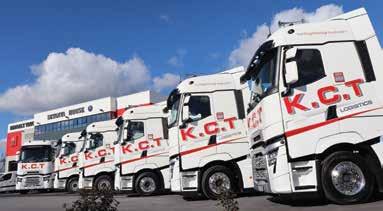
FLEETTRANSPORT | MAY 23
Like the KCT deal, Virginia Transport’s transaction was conducted by Aaron Clarke, Sales Executive at Setanta Vehicle Sales, Dublin.
Setanta scores more fleet wins with KCT and Virginia Transport 16 | NEW FLEET II Looking to renew your insurance? Look no further, we will do it for you, we’ve been doing it for 50 years. Call Mike Murphy Insurance today! Simple and hassle free - the way insurance should be? Call 01 2900200 or go online www.mikemurphyinsurance.ie New Sure Life Ltd trading as Mike Murphy Insurance is regulated by the Central Bank of Ireland.
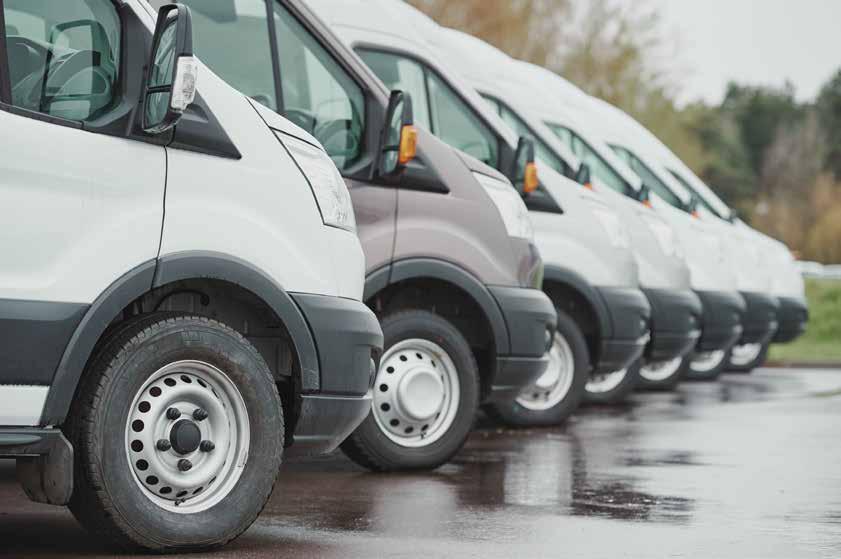

TRY OUR NEW ONLINE PORTAL FOR AN INSTANT QUOTE AND APPLICATION CAPITALFLOW Fast Fleet Finance Available for all transport vehicles funding from €5,000 up up to 100% on new and used vehicles competitive rates quick decisions & execution ronan.kelly@capitalflow.ie capitalflow.ie 01-5632400
The first Dennis Eagle Elite eCollect refuse collection truck has been delivered to Dublin’s Thorntons Recycling, one of the leading waste collection operators in Ireland. It was supplied by Dennis Eagle Ireland, Long Mile Road, Dublin, through Sales Director Martin Ryan.
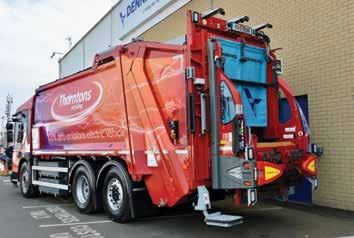
The award-winning zero-emissions, all-electric refuse collection vehicle will be deployed on Thornton’s extensive operations in the Capital and the surrounding areas.

The fully-electric 27-tonne, 6x2 eCollect eRCV, which won the Fleet Transport Irish Green Commercial Award in the Heavy Electric Vehicle category is highly manoeuvrable thanks to its narrow body and chassis with rear-steer, making it ideal for busy and cluttered urban environments as well as narrow rural lanes with tight access.
And its exceptionally quiet operation means it causes minimal intrusion in noise-sensitive environments where people live and work.
Paul Thornton, proud owner said the eCollect will be the most environmentally-friendly vehicle in their fleet and described it as a significant milestone in their commitment to sustainability and reducing their carbon footprint.
At the handover of the new ‘silent’ vehicle, Thorntons Recycling CEO Gary Brady said: “We are thrilled to introduce our new electric-powered waste collection vehicle. We are committed to reducing our environmental impact and providing sustainable waste management solutions for our customers. This new vehicle is a key part of our ongoing efforts and investment to create a cleaner, healthier future for all.”
Dennis Eagle Sales & Marketing Manager Lee Rowland added: “It’s great to see Thorntons Recycling so enthusiastic about the eCollect. The need for sustainability is spreading all the time and this truck not only makes environmental sense but also operational and commercial sense and it is generating a lot of interest in Ireland.”
Martin Ryan also conducted the sale of two new Renault Trucks T 480 6x2 mid-lift tractor-units, with walking floor tipping gear fitted to Thorntons and delivered at the same time as the Dennis Eagle eCollect.

Text: Jarlath Sweeney – editor@fleet.ie Photos: Paul White
Silent
in Dublin
*The company also purchased two Renault Trucks T 480 6x2 tractor-units
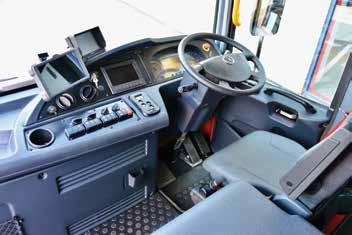
FLEETTRANSPORT | MAY 23
Knights!Thorntons Recycling puts eCollect to work
18 | NEW FLEET III

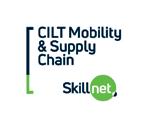
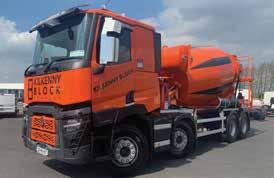



www.fleet.ie CILT Skillnet is co-funded by Skillnet Ireland and network companies. Skillnet Ireland is funded from the National Training Fund through the Department of Further and Higher Education, Research, Innovation and Science For more information: Phone: 01 906 8453 Email: info@ciltskillnet.ie Higher Certificate in Sustainable Supply Chains, Digitalisation and Logistics is enrolling now for September 2023. Lectures Delivered Online | Part Time | Skillnet Subsidised Course Cost Over 23? Resident in Ireland? Looking to earn a qualification in a fast-growing industry? Dennehy Commercials Ltd Riverside Park, Dock Road, Limerick Tel: 061 229900 Web: www.dennehycommercials.com www.dennehycommercials.com For more information please contact the Sales Team: Martin Hough 087 6601648 For Service: 061 229900 N EW T RUCKS ‘R EADY TO R E g ISTER ’ AT D ENNEHY COMMERCIALS, D OCK R OAD, L IMERICK n New MAN TgS.510 8x4 Sleeper cabs, alloys, Insulated gBL bodies n New Renault Trucks & MAN Tractor-units n New Isuzu tippers n New Krone Box trailers n New goldhofer tri-axle low loader, high spec, winch, double flip toe ramps n New Schmitz Cargobull tipper trailers Plus n 2016 SDC Curtainsider Trailer; new curtains, CVRT cert New Renault C.440 8x4 sold to Kilkenny Block Company. Complete with New Liebherr 9 cubic metre Mixer and 12 metre telescopic conveyor, supplied by Value Tech. For your one stop shop for all commercials and trailers, visit Dennehy Commercials, Dock Road, limerick
Garrett McClean, Executive Director of CBRE Ireland, speaking on 30th March at the launch of the CBRE Kingspan Ireland Logistics Confidence Index 2023, commented: “This year’s survey reports a marginal decrease in confidence amongst supply chain professionals across the island of Ireland.

The 2023 Index highlights a significant, but not unexpected decline in confidence amongst logistics operators, whilst optimism amongst manufacturers and retailers has increased from last year. Importantly, both groups retain optimism in their outlook.”
“Sustainable practices now embedded in business strategies and companies are doing more than ever to attract new talent. While challenges will remain in the months ahead, intentions to invest in infrastructure, assets and technology are at their highest in our eight-year research, illustrating the sector’s resilience as it seeks to maximise future growth opportunities”.
The report, the eighth in a series of annual surveys, was carried out by specialist research agency, Analytiqa and supported by the Freight Transport Association Ireland with the objective of
CBRE and Kingspan launch their 2023 Logistics

Confidence Index
assessing confidence and expectations in the Irish Logistics & Supply Chain Sectors.
Summarising the market outlook for the logistics focused properties sector, the report states that the year 2022 saw a continuation in growth and momentum. The Irish economy continued to grow strongly, trade volumes increased during the year, while growth of e-commerce and the implications of Brexit continued to drive increased demand for warehousing, distribution centres and logistics facilities in Ireland. While global geopolitical events, elevated inflation and interest rate increases were dominant themes across markets in the second half of 2022, the logistics sector enjoyed another strong year of sales and leasing activity.
Development activity adjusted to higher construction costs and remained largely unhindered, while investment yields and pricing started to adjust.
Turning to Market Activity the research found that occupiers in sectors such as

third-party logistics and retailing, along with pharmaceutical and shipping companies were among the most active tenants in the Dublin market during 2022. They were competing to lease or acquire new, modern, sustainable logistics stock. Occupier take-up in the first quarter of 2022 reached a record amount for an opening quarter, and the market subsequently enjoyed its strongest ever quarter of take-up in Q3. Overall take-up volumes reached 392,000 sq. m. (4.2 million sq. ft.) for the full year 2022, a 48% increase in activity year-on-year, marginally below the market’s strongest ever year in 2015.
Looking at Vacancy and Rents, at present, Dublin, Cork, and indeed regional markets are fundamentally undersupplied of modern logistics property. The vacancy rate across the top Dublin logistics parks is just over 1% at present. This low level of availability has led to competitive tension among tenants for prime stock, and when combined with construction cost inflation, has seen rent levels move
FLEETTRANSPORT | MAY 23 | NEWS 1
20 | REPORT I
Lizzie Young, Divisional Head of Sustainability at Kingspan Insulated Panels Ireland; Garrett McClean, Executive Director of CBRE Ireland and Myles Shortall, Director of Property, Lidl Ireland & Northern Ireland.
higher over the last 12 months. Prime rents in Dublin for the best-in-class logistics buildings are now at an all-time high of €129.15 per sq. m. (€12.00 per sq. ft.), while lease lengths of 10-years term certain are typical for prime stock. Notably in the second quarter of 2022, a new benchmark capital value was reached for a vacant possession logistics transaction in Dublin, when €2,691 per sq. m. (€250 per sq. ft.) was paid for a unit at Dublin Airport Logistics Park.
Looking ahead and into the Supply Pipeline, the report shows that the Dublin logistics market is now amidst an ongoing period of modernisation. The supply of new, modern stock has accelerated rapidly over recent years, and this trend continued in 2022. The requirements of logistics occupiers have evolved, with higher eaves, greater power needs, more yard depth and advanced sustainability criteria, all now necessary features of new developments. Just over 220,000 sq. m. (2.4 million sq. ft.) of new logistics stock reached practical completion in Dublin in 2022. There is also a significant pipeline of new development under construction at present. At the end of 2022, approximately 240,000 sq. m. (2.5 million sq. ft.) of new stock was under construction and due be delivered in Dublin over the course of the following 12-15 months. Of the 2023 pipeline, almost 70% of new stock consists of build-to-suit developments or is already pre-let or ‘reserved’.
Sustainability credentials are a bigger factor than ever in the sector, with developers now aiming for a minimum of LEED Gold or BREEAM ‘Excellent’ credentials on new stock, and indeed a delta of 10-15% on rents for sustainable buildings has emerged in 2022. There was the pre-letting of Ireland’s first net-zero carbon logistics building to Maersk Line, constructed using glue-laminated timber-frames at Quantum
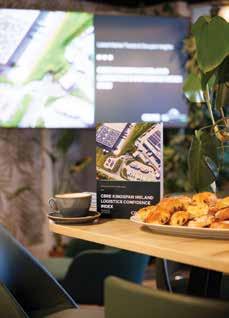

Logistics Park adjacent Dublin Airport. This is due to reach practical completion in 2023. Glue-laminated timber frame developments will be another area of focus for developers this year.
Turning to the Market Outlook, the report finds that despite inflationary pressures, trade volumes in Ireland are expected to remain robust through 2023. The value (or profile) of goods exports and imports may change to reflect a softer economic environment; however, ultimately the volume of throughput will remain strong. This will support logistics and warehousing requirements. Interestingly, despite a slowdown in some other markets, e-commerce spend remains on an upward trajectory in Ireland. Rent levels will remain under upward pressure and prime rents in the sector are forecast to increase to €134.55 per sq. m. (€12.50 per sq. ft.) by year-end. While sales and leasing activity will likely be slower than 2022, it will still be another busy year.
Turning to the post-Brexit challenges, the report finds that overall, 18% of companies (that is 26% of logistics operators and 10% of manufacturers and retailers) suggest that they have lost business because of Brexit. That’s up from 15% last year.
On a day-to-day basis, the report finds that companies do appear to be getting more adept at managing the operational challenges arising from Brexit. 45% of respondents stated that they have had to manage operational delays in their supply chains because of Brexit, this is down from 69% in 2022 and from 87% in 2021. It remains that around one-in-five (18%) respondents (down from 42% last year and 62% in 2021) suggest that they have been challenged by the lack of preparation or readiness of their supply chain partners. 26% of logistics operators and 10% of manufacturers and retailers identify such challenges.
11% of companies (down from 27% last year and 47% in 2021) have been challenged to identify new optimal supply chain solutions for international trade lanes and export markets because of the post-Brexit trading arrangements, whilst a bigger challenge for respondents, as identified by 23% of companies, is managing the volume and cost of training required for their employees.
Given recent economic and political instability in the UK, respondents were asked to identify the related
challenges that they expect to face in 2023. Almost one-third of companies expect to continue to face post-Brexit-related trading issues, though 28% of respondents expect there will be continued political uncertainty in 2023 and 22% anticipate foreign-exchange (FX) uncertainty. Almost one-in-five respondents (18%) expect to have to continue to find supply chain solutions for international trade lanes and overseas markets.
Lizzie Young, Divisional Head of Sustainability at Kingspan Insulated Panels Ireland, spoke in relation to the questions of Energy and Sustainability. She made specific mention of their finding that almost 20% of companies are planning on investing in Green Energy or on-site generation initiatives. Many existing and new building roofs are suitable for installing solar power.
Roof mounted Solar Power was a topic picked up at the launch event by Myles Shortall, Director of Property, Lidl Ireland & Northern Ireland. Currently 82 Lidl Stores and all the Distribution Centres generate a substantial proportion of their electric power requirement from this source. 71 stores have electric vehicle chargers and future initiatives involve integrated power supply within the local community. The company plans that its operations will be carbon neutral by 2025 and achieve a further 40% reduction in emissions by 2030,
The event concluded with a lively discussion on the issues surrounding the further development of on-site power generation.
REPORT I | 21
Text:
– howard@fleet.ie
Howard Knott
The choice of Croke Park as the venue for Network International Cargo’s (NIC)

‘Economic & Supply Chain Forum’ was most appropriate. In his opening address, NIC’s John Culligan explained that the company now celebrating its thirtieth anniversary began from relatively small beginnings on Jones’ Road alongside the stadium.


Network International Cargo Event at Croke Park
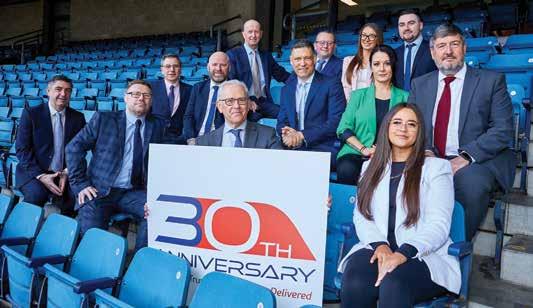
NIC, now based in Ballycoolin Dublin, is continuing to expand throughout Europe and is currently recording double-digit growth. As part of progressing the company John that NIC is addressing
the issue of climate change and taking steps to reduce its carbon footprint with significant investments in solar power and new HVO-fuelled vehicles.
investment strategy which will look to diversify into new markets and address climate issues. Though he believes that Ireland is well-placed to meet the challenges.
Minister for Enterprise, Trade & Employment Simon Coveney TD officially opened the event, and in his comments congratulated NIC on its thirtieth anniversary. Posing the question as to what is now the new normal, he noted that “up to 2020 supply chains had largely worked efficiently. The evolution of trade and supply chains will continue as we learn to deal with the impacts of the war in Ukraine which has replaced Covid 19 as the leading risk to economic growth. We now live in an era where we need to expect significant disruption to our supply chains. Trade is the lifeblood of our economy…nearly half of our entire workforce is underpinned by international trade and investment, and for the first time our trade last year exceeded one trillion Euro.”
The Minister added: “We can’t be complacent about maintaining growth and we need our economy to be flexible and agile.” He highlighted the Government’s four-year trade and
Reflecting on his time as Minister for Foreign Affairs, he said: “Attitudes towards global supply chains have changed very fundamentally in the last number of years. The relentless pursuit of cost reductions and financial value which preceded Covid-19 are still there, but they are now matched by the search for certainty and risk management in terms of what has become a very destabilised world in terms of geopolitics.” Within these remarks he included the European Union where “we are seeing a tendency towards protectionism in some European countries.”
“We are on your side, and this country remains open for business and planning for the year ahead, which I think will be another year of growth for the Irish economy despite all the headwinds we have to contend with,” he concluded.
Economist Jim Power began with an anecdote from his teaching profession. What he usually said to students on their first day was: “Anybody who believes that an economist can forecast the future is mad - there is no certainty, events happen. Economic outcomes are incredibly determined by human behaviour rather than any scientific model.” As an example, he cited Brexit which, he said, “made absolutely zero economic sense but was a political project.” He continued this concept to include Covid-19 followed by the events in Ukraine. “No economic model can predict what the outcome will possibly be.”
FLEETTRANSPORT | MAY 23 | NEWS 1
22 | REPORT II
“I believe that Ireland is well placed to meet the challenges”
Eddie Bowers - Managing Director
John Culligan, Sales Director at Network International Cargo
Simon Coveney TD, Minister for Enterprise, Trade and Employment
While the GDP figure for Ireland was reported at 12% last year, Jim believes “this figure is significantly distorted.” He mentioned aircraft leasing which makes a huge contribution but delivers little on the ground. He also noted that multinational companies repatriated €130 billion back to their shareholders. Therefore, the GDP figure should be readjusted to the modified measure of 8.2% which he said is still strong. Nevertheless, just 10 multinational companies account for over 55% of Ireland’s corporate tax take.
Exports are up, although “65% of our merchandise exports come from the chemical and pharmaceutical sectors meaning we have a very high concentration there, and this means a concentration of risk,” added Jim. However, he believed these sectors are deeply embedded in the economy and doesn’t see them going anywhere soon - noting they have a “particular regional importance.”
The issue of recruitment and retention is a challenge across all sectors and causing upward pressure on wages. Also, housing is a real problem for employers and attracting workers. “As an element of national competitiveness housing is incredibly important - I would definitely say without fear of contradiction that housing is the biggest economic, political and social problem facing the country at the moment.”
While he is overall very upbeat about the economic outlook. Jim concluded: “At the moment global geopolitics has become very volatile, very scary, and very uncertain, and my parting message to you today will be that I haven’t a clue what’s going to happen - the one thing I can be certain of is uncertainty.”
Another speaker, 3SIXTY’s Aidan Magner is of the opinion that “a resilient supply chain is designed to make sure that when an issue happens, we can give confidence and clarity to our customers, our employees, and our suppliers as to




what is happening in the network - it is a plan for the what-ifs.”
He also believes in not just competing with the lowest-cost provider and quoted Martin Christopher of Cranfield University: “Supply chains compete, and that when we compete, it is our supply chain competing against their supply chain.” Aidan then moved to define the supply chain as - “we buy, we make, we move, we store, we sell,” - and we must look at it “from our customer’s customer to our supplier’s supplier.”
“A supply chain is a living breathing thing that changes on a daily basis,” he explained, going on to give a dramatic example of how it can be upset. He noted that one year ago the Ukrainian city of Mariupol was under siege. Separately from the immense human devastation of this event, Aidan stated that “the city of Mariupol provides 30% of the world’s steel”. Interestingly the city also supplies 95% of Neon gas used in the semiconductor industry. Which is one reason why the supply of semiconductors remains an issue.
“When you critically assess, we put more value on our customers than our suppliers - and who holds the power in the relationship? Suppliers, ourselves or customers? When everybody has a hand in the toaster, minds are a little more focused.”
With over thirty years of experience in customs, Colm Halpin is well placed to observe that “every Custom declaration is effectively a tax return.” He uses several case studies that reveal the intricacies of customs formalities. In one example from the motor industry, Colm helped to separate out the value of the vehicle’s warranty and move that onshore. This decidedly reduced the invoice value and consequently the duty liable, as the duty is liable on the “price paid or payable.”
He advised that if paying too high a duty on products it is worth seeing if it can reclassify to a lower tariff. This
worked for a recent client that Colm exampled. “We were able to take out 40% of their total customs duties.” He mentioned other examples where similar benefits can be gained from a detailed review of Trade Agreements.
Colm concluded by explaining the possible hazards of paying too much or too little duty. “If you are paying too much your cost base is inflated and your sales will suffer. While you may be able to get that duty back you will not get the lost sales back. Equally, If you are paying too little customs duty your sales may go through the roof - but three years later customs come knocking and your 5% margin turns out to be a 10% loss,” he added.
The event was closed by Emmett Coulter. In addition to thanking all the participants, he paid tribute to Eddie Bowers for his vision in starting the NIC over thirty years ago. Emmett then graciously answered the one question always asked of NIC staff. ‘What does the Ant logo signify? Emmett explained that the NIC aligns itself with the attributes the ant is renowned for - hardworking, communication, teamwork, planning, flexibility, and agility.
Text: Paul White – paul@fleet.ie Photos: David Murphy Photography
www.fleet.ie
REPORT II | 23
Aidan Magner, Managing Partner 3SIXTY Supply Chain
Jim Power, Economist and Media Commentator
Colm Halpin , Managing Director at BCH Customs Analytics & Advisory Service
Emmett Coulter, Deputy Managing Director at Network International CargoService
TRANSPORT
www.fleet.ie
Engaging Connectivity
Title Sponsor



AWARDS 2024
Associate Sponsor
ENTRIES ARE NOW OPEN
Following the Covid-enforced absences in 2020 and 2021, the Fleet Transport Awards returned in some style last November, with a very successful event at the Johnstown Estate Hotel, Enfield, County Meath.
We are delighted to announce that the Fleet Transport Awards 2024 will be returning to the popular venue ideally located just a half hour outside Dublin on Thursday 9th November 2023.

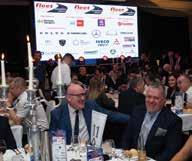
Not only do the Awards celebrate best practice and recognise those who achieve excellence in their respective categories, the event is also widely recognised as an ideal networking opportunity for the transport industry.
The Fleet Transport Awards has been recognising and rewarding best practice in the Irish road transport industry for the last number of years. This year once again our event provides a positive platform to see the best in the industry honoured for their endeavours, while availing of an unequalled opportunity to network and liaise with colleagues and meet with the players and buyers of Ireland’s top companies.
The Fleet Transport Awards will take place at the Johnstown Estate Hotel, Enfield, County Meath on Thursday 9th November 2023.

If you are a Road Transport Operator in Ireland, however big or small, you are eligible to enter the awards. The simplest



way to enter the awards is online – www. fleet.ie
For the past number of years the Fleet Transport Awards has received the support of the industry, not just from the leading operators in the country, but also from small relatively unknown firms, demonstrating that companies of all types and sizes are recognised and awarded. Whether you operate or manage a large, medium or small sized company your application will be welcomed. This is the only awards programme that is truly supported by the whole transport industry.
You may enter as many categories as you wish. A full description of each category is available on line – www.fleet. ie
HOW DO YOU ENTER?
There are 3 simple steps in the entire process to complete your submission.
STEP 1 - E NTER ONLINE
The easiest way to enter is online which takes approximately 5 minutes.
STEP 2 - S UBMISSION
After receipt of your entry you will receive a short number of questions related to the category/categories which your company has entered. All information submitted as part of this process is handled in the strictest
confidence and is protected under the Data Protection Act.

STEP 3 - I MPORTANT DATES FOR YOUR DIARY
Once the Shortlist is announced, interviews will take place at the Johnstown Estate Hotel, Enfield, County Meath in September. They can be done in person or by Zoom.
9th November - Fleet Transport Awards & Networking Event, Johnstown Estate Hotel, Enfield, County Meath.
W HAT CATE g ORY CAN MY COMPANY ENTER?
National Haulier of the Year
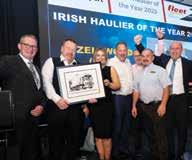
International Haulier of the Year
Own Account Transport Operator of the Year
Owner Driver Haulier of the Year
Regional Transport Operator of the Year

Van Fleet Award
Livery Award
Safety Practice Award
Innovation Award
Environment & Sustainability Award
Fleet/Transport Manager of the Year
Women in Transport Award
Excellence in Warehousing & Product Handling Award
Best On-Line Transport Company of the Year
Customer Service Excellence Award
Express/Home Delivery Service Provider Award
Technician of the Year
FLEETTRANSPORT | MAY 23 24 | NEWS II AWARDS
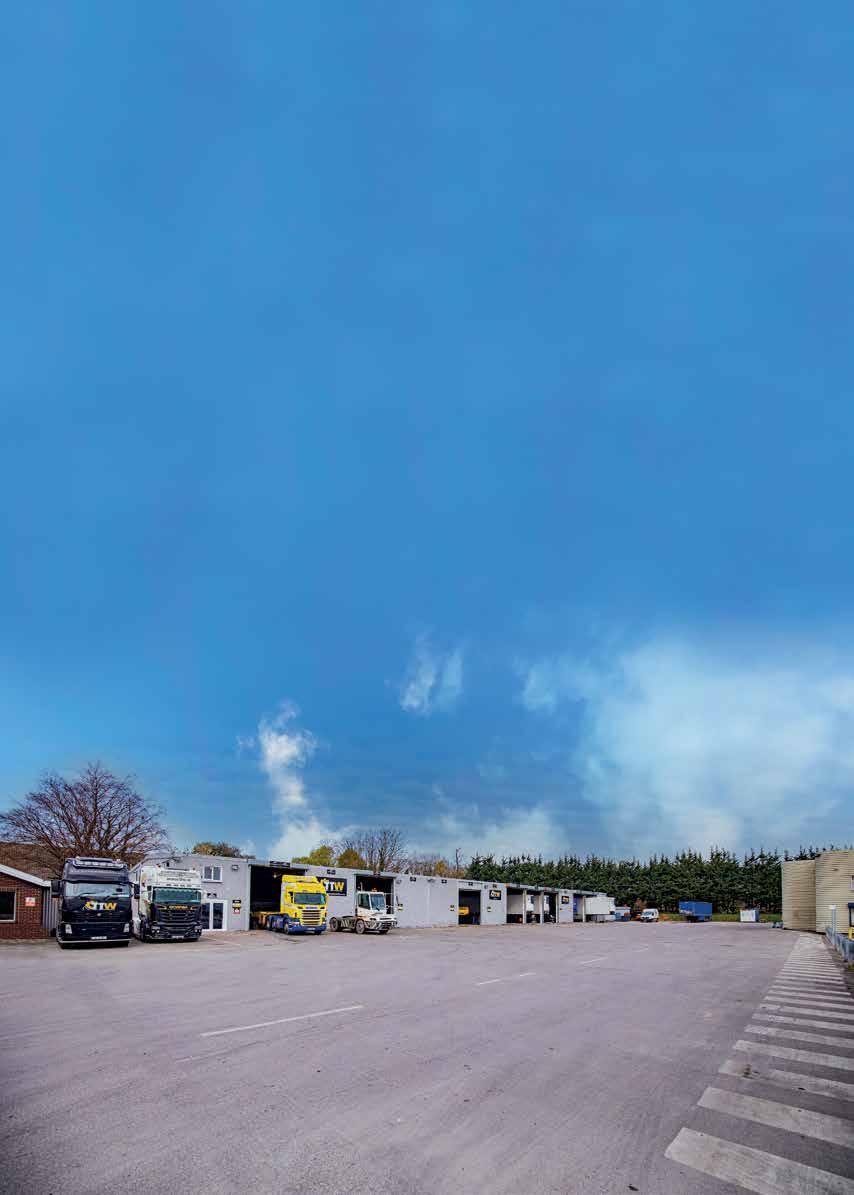


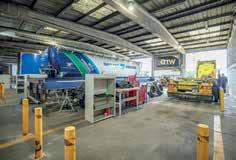


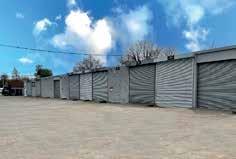
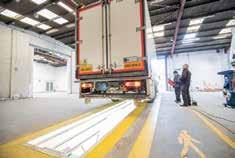


Interested in a change? WE ARE HIRING! Join the team at Irelands fastest growing independent Truck & Trailer Workshop. Exceptional salary and bonus scheme along with state of the art facilities ….sure it would be rude not to…. Check out our vacancies on page 63
Brighter picture painted at CV Show 2023
More stands, bigger footfall, numerous premieres and a broader selection of exhibitors led to a positive atmosphere at the Commercial Vehicle Show 2023, held at the NEC, Birmingham.
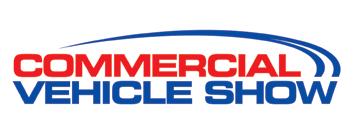
While vans, telematics and connectivity companies dominated the main exhibition hall, there was a welcome presence of trucks, big and small from established manufacturers and newcomers from Europe and China. Jarlath Sweeney and Sean Murtagh were present for Fleet Transport to hear and see the latest happenings.
F
ORD ’S NOT SO COMPACT COURIER!
Ford returned to its usual show spot with a host of new products and services, including the global show premiere of the all-new Transit Courier, the new Transit Custom, the new Ranger pick-up, including the V6-powered Raptor and the multi-award-winning E-Transit, together with the new 5-tonne Transit.
With a significantly larger and more flexible load area, the electric E-Transit Courier enters production later in 2024, while diesel and petrol-engine models can be ordered from summer 2023 for delivery before year-end. See elsewhere in this edition for more details on the new Courier and exclusive first drives in the new Ranger, the all-electric powered F-150 Lightning and Transit 5-tonner.
MAXUS
TO THE MAX!
MAXUS, the Chinese leader in the European EV commercial market, has once again hit the headlines with the arrival of the all-new eDeliver 7, its mid-sized electric van. Maxus now has a full range of zero emission vehicles in its line-up consisting of MIFA 9 all-electric MPV, the T90EV zero-emission pick-up, plus the eDELIVER 3 and eDELIVER 9 vans.
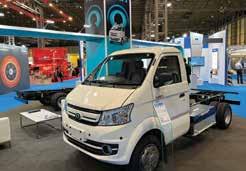
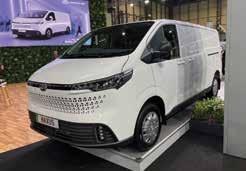
ETRUX EXHIBIT THE WEVC E CV1
Watt Electric Vehicle Company (WEVC) announced a partnership with Antrim based electric commercial vehicle specialist ETRUX, that is set to accelerate the adoption of next-gen electric light commercial vehicles – with the first prototype debuting at the NEC.


ETRUX exhibited a prototype, based on WEVC’s Watt eCV1 3.5-tonne cab and chassis unit, complete with an in-house-designed body.
EW OHM 35 BEV FROM FAPI M OTORS
Fapi Motors – a branch within Famalco Holdings’ mobility investment portfolio – brings more than 25 years of industry experience to represent OHM Vehicles in the UK & Ireland, with the first vehicles available for delivery just days after the show.
Managing Director Hermann Mallia and his team, officially introduced the flagship OHM 35 BEV chassis cab, showcasing how its innovative design aims to lead the charge in the UK and Irish eLCV markets, with its impressive range and generous body and payload capacity.
eDAILY DEBUT BY I VECO
Visitors to the CV Show got their first chance to press the metal of the new IVECO eDaily. This new multi-GVW electric LCV retains the Daily’s rugged truck-based chassis, enabling an unrivalled payload, superior 3.5-tonne towing capacity, and more body types than any other vehicle in its class.
eDaily is currently the only eLCV on sale to provide a 15kW ePTO. The vehicle’s applications are wide-ranging including tippers, chilled and refrigerated box vans, aerial platforms and much more.
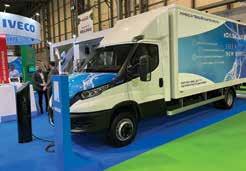
FLEETTRANSPORT | MAY 23 | NEWS 1
N
26 | REVIEW I
N ISSAN g OES URBAN WITH TOWNSTAR EV
Another debutant came in the shape of the new Electric Townstar from Nissan, which has been designed specifically with business owners’ needs in mind and is packed with unique technologies not normally found in an LCV. Delivering 122 PS and 245Nm of torque, the Townstar EV’s 45kWh battery offers both AC charging (11 kW or 22 kW) or DC CCS quick-charging, the latter of which enables users to charge the battery from 15% to 80% in as little as 37 minutes.
Nissan’s LCV line-up also includes the Primastar and Interstar, both of which have recently been rebranded, significantly upgraded in terms of equipment and feature a new range of efficient engines.


I SU z U D-M AX – THE DIY PICK - UP TRUCK
“At Isuzu, we only make commercial vehicles and focus on making our pick-ups tough, strong and built to go the distance. Isuzu is the pick-up professionals and therefore best placed to meet customers’ individual pick-up needs. The AwardWinning Isuzu D-Max pick-up range is smarter, stronger and safer,” commented Alan Able, Isuzu UK’s Managing Director. Again, Isuzu UK’s stand displayed a great variety of types and specifications of the refreshed multi-purpose D-Max family.
B-ON IS ON!
The IM Group, the automotive distributors for Subaru and ORA in Ireland, has taken on another franchise in the shape of B-ON, the German founded electric commercial vehicle brand. Premiered were examples of its MAX & GIGA light trucks in chassis and cab form and one particular box bodied version sporting the prominent colours of customer DHL.
B–ON is a full electric fleet service solution provider bringing together financing and insurance, service and maintenance, charging and energy management, telematics, driver solutions, and proven electric vehicles through one single point of contact.
T RUCKS
HVS – N EW H2 H g V LAUNCHED
Hydrogen Vehicle Systems (HVS), is a new UK-based hydrogen vehicle emerging OEM and innovator in the heavy-duty commercial vehicle segment. Its new state-of-the-art technology offers up to 40 tonne GVW and an industry-leading driving range up to 600 kilometres, while it can be refuelled in under 20 minutes. Its new Articulated tractor-unit features a unique powertrain and radical cab design, making it the first indigenous UK Hydrogen HGV, designed and built from the ground up.
HVS will support operators in achieving their emission reduction targets via early market entry, and accelerating decarbonisation of the wider transport industry.
N IKOLA T RE BEV STAR SHINES
Made by Iveco in Germany for European customers is the Nikola Tre heavy duty Battery Electric Vehicle (BEV). Debuting in 4x2 44-tonne gross tractor-unit form, its 738kWh battery pack, with FPT e-Axle, produces 645 hp and 1,800 Nm of instant torque. From a full charge that’s enough to propel the vehicle for 530km. while and a 350 kW fast charger can boost the batteries from 10 to 90% in 100 minutes.
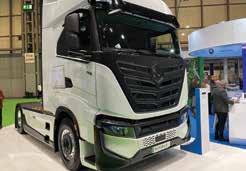
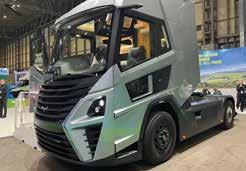
Current there are 60 Tre units in operation across Europe. LHD versions can be ordered now in the UK and Ireland, with RHD becoming available next year and hydrogen power to follow soon after.
Renault Trucks UK & Ireland was part of the CV Truck Zone especially for the event.
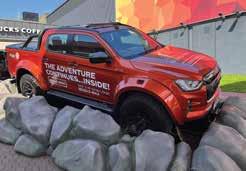
Showcasing its partnership with Vertellus – the UK’s newest national commercial vehicle
contract hire company, visitors had a good look at the 100% electric Renault Trucks E-Tech distribution vehicle from the Vertellus fleet and learnt about the visions and progress of both brands in transport decarbonisation. A regular exhibitor at trade shows, Renault Trucks returned to the CV Show after a few years absence.

www.fleet.ie REVIEW I | 27
R ENAULT T RUCKS
M ERCEDES -B EN z
Mercedes-Benz Trucks UK brought along its new award-winning eActros 300 tractor-unit to show fleet operators how to make the transition to net-zero local emissions effortlessly.

S CANIA
Also displayed in the dedicated Truck Zone was this electric Scania 25 P 4x2 rigid, promoting its Rental fleet. Based on the weight, body type and topography, up to 250 km is achievable from one full charge.
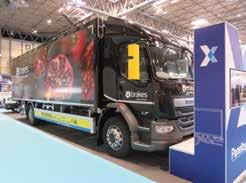

VOLTA T RUCKS
Volta Trucks demonstrated how its vehicles can provide fleet operators with the tools they need to enter a new era of sustainable urban deliveries, future-proofing their operations.

The new Volta Zero has entered production in Austria.
PANELTEX PROMOTES LATEST PRODUCTS
Prominent bodybuilder Paneltex demonstrated a Somers freezer-specification panel van, an 18 tonne delivery truck with an undermounted refrigeration unit, triple rear doors and double side doors, two 3.5 tonne multi-temperature vehicles, one with side entry access and one with side and rear access. It also featured an urban last-mile home delivery electric bicycle and an insulated storage box with an electrically-powered roller shutter. The company also specialises in emergency service vehicles, trailers and vehicle conversion.
RHA UP TOWNS!
A novel initiative by Britain’s Road Haulage Association (RHA) to find the UK’s ‘kindest town’ is gaining momentum.
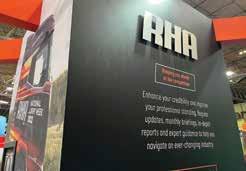
Hauliers will vote to select the winner. Drivers and planners are encouraged to vote also. Towns are scored on several criteria, including easy access to fuel, food and wash facilities for drivers. There are prizes for those participating and a winner will be announced in September.
T UFFA TANKS SHARES WITH gREEN C HEM
With over thirty years’ experience manufacturing tanks for the transport industry, Tuffa Tanks shared its stand with one of its biggest customers, AdBlue supplier
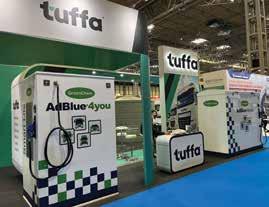
GreenChem. Designed and built to last for a minimum of 20 years and to all industry standards, all Tuffa Tanks are compatible with diesel, kerosene and HVO. Available in steel or plastic with a capacity of up to 100,000 litres.
C AMERA M ATICS ALWAYS ON CALL
Irish company CameraMatics is a driver-centric cloud system empowering fleet operators and drivers to continuously improve performance, safety, and fuel management with enhanced visibility and digitised smart processes.

FLEETTRANSPORT | MAY 23 | NEWS 1
28 | REVIEW I
Deployable to any vehicle type, translating big data from onboard vehicular sensors, smart cameras, and driver apps to support driver safety, load security, continuous learning and improvement and sustainability objectives.
Brigade Electronics is a market leader in vehicle safety systems, which includes cameras and reversing aids. Its product range includes camera monitor systems to eliminate blind spots, Sidescan sensors and side turn warning alarms to reduce cyclist and HGV collisions, white sound reversing alarms to eliminate noise nuisance, and digital recorders to prevent fraudulent insurance claims.
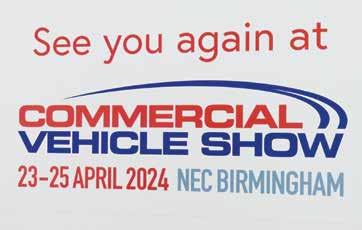
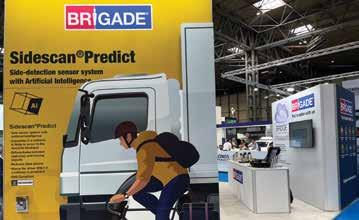
C UBO: D RIVIN g THE LO g ISTICS INDUSTRY FORWARD Cubo constantly innovates and collaborates with road transport operators and their customers. It offers access to data on its web based
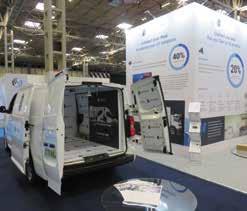
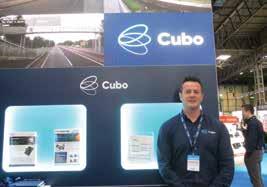
MyCubo portal, that has a direct impact on their customers’ day-to-day operations, allowing them to operate in a more sustainable way, and enabling them to make changes that result in wide ranging benefits from increasing driver and road safety, to reducing CO2 and NOx levels.
The Antrim based firm’s partnership with the Irish government and South East Energy Agency in delivering The Greener HGV Programme allows them to demonstrate the impact of their technology on the planet, fleet safety and efficiencies. Pictured on duty is Robert Steele
S OLERA HAS RISK PREVENTION
SOLUTIONS
risk management solutions. Four areas are focused on: vehicle claims, vehicle repairs, vehicle operations and fleet management.
Solera is using artificial intelligence to enhance its products and stated it can reduce accidents by lowering collision risks for operators.
S AMSARA SIXTH SENSE!
Connecting operations, together... Safer, smarter, more efficient and more connected fleets: Samsara is the pioneer of the Connected Operations Cloud, which allows businesses that depend on physical operations to harness data to develop actionable business insights that improve the safety, efficiency and sustainability of their fleets.
All this is done through cameras, management systems, sat-nav tracking and data collection and sharing.
UTAC AKA M ILLBROOK P ROVIN g gROUND
UTAC is a market-leading international group in digital and sustainable mobility, customisable testing solutions and systems, vehicle engineering, type approval, regulatory advice and expertise, certification, training, corporate events. The Group provides services and systems to customers in various sectors: mobility, transport, tyre, petrochemical, agriculture and defence industries.
UTAC operates test centres and laboratories in France, UK (at Millbrook), USA, Finland, Morocco, and Germany.
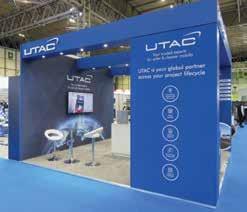
Solera is a US headquartered company that describes itself as the supplier of the ultimate toolbox when it comes to digital

www.fleet.ie REVIEW I | 29 H AVE B RI g ADE BY YOUR SIDE
Text & Photos: Jarlath Sweeney and Sean Murtagh
Following the signing of a partnership between Watt Electric Vehicle Company (WEVC) headquartered in Cornwall, and Antrim based electric commercial vehicle specialist, ETRUX, an engineering prototype was on display at the CV Show at the NEC, Birmingham, based on the WATT eCV1 3.5-tonne cab and chassis unit, complete with an ETRUX designed and built body. The next step is that WEVC’s electric vehicle platform technology will be adapted by ETRUX into a range of offerings for the commercial vehicle market.
It’s ’cell-to-chassis’ system means batteries are integrated to the primary structure (rather than having a separate battery pack), optimising stiffness, minimising weight, and maximising payload. The eCV1 features a central driving position which allows a safer kerbside exit for the operator, whichever side of the road the vehicle is driving or parked on. The cabin can be configured as a one-, two- or three-seater vehicle, with the large glazed area surround providing superb visibility, making the vehicle safer to drive and easier to manoeuvre and park. The unique platform design creates generous full standing height headroom, facilitating easy ingress and egress and a ‘walk through cabin’ option that is ideally suited for urban delivery vehicles.
The WEVC eCV1 prototype has a kerb weight from just 1750kg, delivering class leading payload and range in the 3.5t and 4.25t segments.
Meanwhile, Fapi Motors launched the OHM Vehicles’ brand and its flagship 3.5-tonne electric light commercial chassis cab set for the UK and Irish markets.
Fapi Motors, part of the Maltese Famalco Holdings, will utilise more than
Game-changing light electric vans at the Commercial Vehicle Show
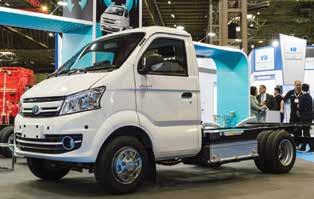

25 years of industry experience to ensure the new OHM 35 BEV (battery electric vehicle) leads the charge towards electrification, with the right-hand drive model ready to go to market.
Established in 2021, Singapore-based OHM Vehicles set out to develop a new standard of BEVs for the light commercial sector. The first left-hand drive models for the European market were unveiled at IAA Transportation in Hanover last September, with Fapi Motors using the CV Show to actively find and appoint an appropriate dealer network. OHM operates a ‘satellite’ manufacturing model with principal production taking place in China, complemented by a range of partner facilities across Europe.
With no legacy systems or inherited work practices to contend with, OHM has been able to develop every aspect of the forward-thinking design from the ground up, ensuring it delivers an impressive 280km range and a generous body and payload capacity of up to 2-tonnes.
Based on more than 10 years of dedicated research and development, the vehicle’s ultra-efficient electric motor and inverter technologies are capable of delivering 3,150Nm of peak torque at the wheels. Through intelligent energy conversion, the OHM 35 BEV can maintain higher sustained speeds over longer distances than many of its direct competitors, making it a cost-effective option for fleets across all sectors.
The lightweight chassis and battery assembly has been specifically designed with bodybuilder flexibility in mind, ensuring the vehicle supports applications ranging from refuse collection
to dry freight, ambient and temperature-controlled transport.
Equipped with the latest telematics and connected technologies, a dedicated OHM Vehicles control room continuously monitors the performance of the vehicle. Through remote diagnosis, preventative maintenance measures can be taken to reduce downtime and ensure the OHM 35 BEV is always operational.
The new vehicle also features the MY-OHM app and online portal, which allows drivers to easily contact OHM’s aftersales technical service team. For dealers or workshops, the app enables access to updated vehicle information to provide a quick and efficient aftersales service, which includes complete traceability of warranty status, components, serial numbers, alongside information on both firmware and hardware versions.
In addition, MY-OHM allows users to track and improve their driving habits, activate OHM’s assistance service and remotely access diagnostic information about the vehicle. Meanwhile, fleet operators gain a comprehensive solution that helps to simplify driver behaviour monitoring and the management of their commercial vehicle fleet.
Text: Jarlath Sweeney – editor@fleet.ie
FLEETTRANSPORT | MAY 23 | NEWS 1
30 | PREMIERES
*Watt & ETRUX and OHM on a charge!
Thank you for participating in our survey to improve the CPC Periodic Driver training!

Thank you for your time and participation in the research survey conducted
CPC Periodic Training Survey 2022
during November-December 2022 to improve the CPC Periodic Training. The response rate was higher than anticipated with over 2200 responses. We were delighted with the level of engagement and passion that respondents expressed in the online survey. Not only did we learn some great insights from your responses, we also identified some areas of improvement from the ideas that you have suggested. Some are near-term opportunities for improvements while others are more
long-term strategic initiatives. We are investigating the feasibility of these recommendations and further research and analysis is being carried out. We will certainly keep you posted for further developments. Stay tuned!
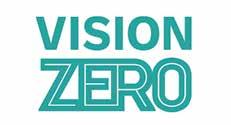
Safety Storage Efficiency
Enhance the Safety, Capacity and Efficiency of Your Storage
Combilift products help customers increase storage without the need to expand the size of their facility.
Understanding the available space and how it is being used is critical to running a more sustainable and profitable business.
Contact Us Today
To find out how Combilift can help you safely and efficiently load containers
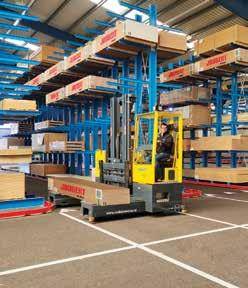

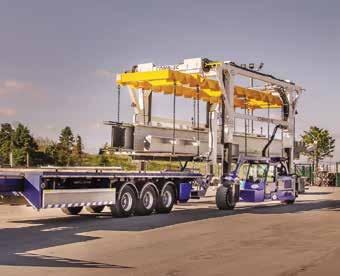
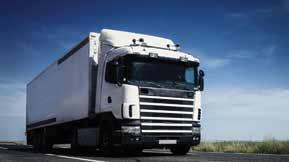
ADVERTORIAL | 31
combilift.com
Apparently, if a vehicle manufacturer reaches a 100,000 production unit milestone, it is entitled to give itself a ‘star’, just like the winners of the Champions League in football or European Champions Cup in rugby. MAN Truck & Bus is about to achieve this ‘stardom’ with its TGE light commercial vehicle range, produced by Volkswagen Commercial Vehicles in its Polish factory.
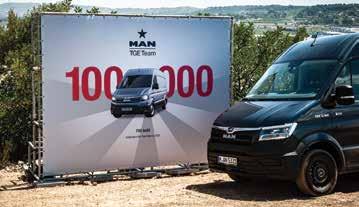
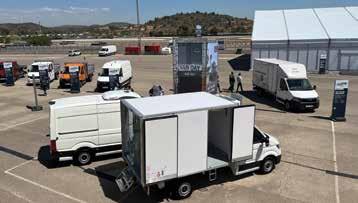
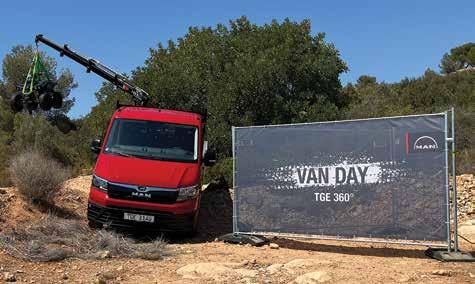
Quite a record for what is a customer supply vehicle that only entered what was a completely new marketplace on 3 April 2017. The TGE has been an unexpected success story for MAN and already the Munich-headquartered company is preparing the next edition due in 2025.
This news and a lot more information was relayed to members of the press at a special MAN VAN DAY - TGE 360o
MAN VAN DAYTGE 360o at Circuit Ricardo Tormo, Valencia, Spain
gathering at the Circuit Ricardo Tormo near Valencia. Here MAN held its own motor show, displaying and demonstrating numerous incarnations of the TGE range, with different body configurations covering various applications from express courier, construction and emergency services vehicles to minibuses and campervans. On track and off-road test drive opportunities were also part of the exercise, as well as information workshops. The legal framework surrounding European legislation and light and heavy duty engines for light commercials - basically how EU Whole Vehicle Type Approval meets WLTP - proved an interesting topic.
Daniel Holbein, Head of MAN TGE Vans said that the TGE range has a solution for every application. “Our successful strategy means that it’s not all about selling product, we form a partnership with our customers,” he said. “We’ve been selling commercial vehicles, products and services for many decades and what makes us unique in this competitive marketplace is that we have a long standing business relationship with bodybuilders and ancillary providers. In addition our dealer network and
aftermarket providers have the expertise and workshop equipment to offer an unrivalled service.”
Digital services form a core part of MAN’s product offering, with lots more to come. This guarantees connectivity between dealer and client, through MAN Service Care and Driver Apps.
The MAN TGE - the ‘Trucknology Generation Express’, van is MAN’s first
entry into the 3.0 to 5.5-tonne segment and is now available in 35 countries. It is available ex-factory with a box body, three-way tipper, platform body, CEP shelving, built-in shelving, refrigerated body or as a minibus. In addition, ambulances, prison vans, fire service vehicles, roll-off skip loaders, security vans, refuse collectors and winter service vehicles, as well as a separate minibus range have also been built based on the TGE.
With such a variety of bodies and attachments, the TGE is practically a multitool like a Swiss army knife. This is also reflected in the production figures. Over the past four years, the share of TGEs that have been fitted with bodies has exceeded 30% on average. Of course, the camper segment is also
FLEETTRANSPORT | MAY 23 | NEWS 1
32 | LCV
responsible for this. Partnerships exist here with various motorhome manufacturers, including a long-standing partnership with Knaus Tabbert, which has motorhomes such as the VAN TI Vansation in its range.

In addition, the eTGE electric version is available as a panel van, minibus, three-way tipper and with box body. Here, MAN provides an 8-year or 160,000 km warranty on the batteries that supply the energy for the powerful 100 kW electric motor. This model will be discontinued soon to make way for a fully updated and more powerful zero emission version.
The diesel variant of the TGE is still powered by the 2.0-litre turbo diesel engine, which complies with the Euro 6d emission standard. It is available with power outputs of 75 kW (102 hp), 103 kW (140 hp) and 130 kW (177 hp) in the homologation as a light commercial vehicle, and with outputs of 103 kW (140 hp) and 120 kW (163 hp) as a heavy-duty
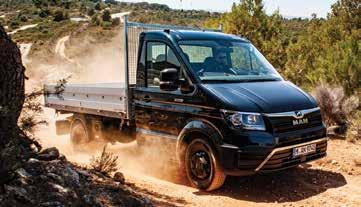
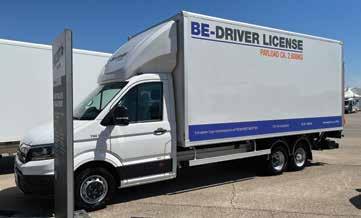
EU exhaust emission controls for heavy duty engines in light commercials, until 2027.
Digital services from MAN DigitalServices are now built in for the MAN TGE for the first time. This means that MAN Now will also be available for vans in time for showcasing at the IAA Transportation 2022 Hannover Show in September. With MAN Now, customers receive selected software upgrades for new vehicle functions over-the-air, i.e. via service outlets. As another option, the MAN EfficientRoute van service, which provides up-to-date maps and real-time traffic data, can be extended or booked via MAN Now. The prerequisites for this feature are the MAN Telematics Box and MAN Media Van Business Navigation infotainment system.
Also, for the first time, there will be the free “MAN Driver App” for the van. The app, which is compatible with all Apple and Android devices, features damage report in the event of a breakdown, MAN Mobile24 breakdown call, MAN Dealership Search and video tutorials with MAN experts.
the load distribution of built-up vehicles tends to be more on the rear axle. A rear-wheel drive therefore offers more traction.
The all-wheel-drive 4x4 3.5 to 4.0 tonne TGE is a popular option with customers building camping, construction or emergency vehicles. It is a front-wheel drive system that distributes torque to the rear axle as required by means of a multi-plate clutch. Torque is automatically distributed from 100% to the front wheels to a 50/50 front/ rear split. There is also the permanent all-wheel drive MAN TGE 4x4, which is based on the rear-wheel drive vehicle. Here MAN installs a system from Oberaigner, which provides a fixed torque distribution of 42 to 58% (front/
vehicle. The engines for the heavy-duty homologation variants are equipped with two turbochargers (bi-turbo). Going forward, the focus will be on the provision of heavy-duty engines as there are less restrictions when it comes to body applications and auxiliaries fitted. Once Euro 7 kicks in for light duty engines in 2025, there will be a two year grace period before implementing this
In cooperation with the LogPay payment services company, mobile refuelling (Mobile Fueling) at participating filling stations, the entire payment process is processed directly from the vehicle after refuelling – without any waiting times.
There are also some new elements to the product range. For example, the rearwheel-drive TGE with single tyres and an 8-speed automatic transmission has been added. This particularly improves built-up vehicles in the 3.5-tonne segment, as rear-wheel drive is more suitable for vehicles with bodies where
rear). It can be ordered ex-works with a gross vehicle weight of 4.0 to 5.5t with the 120 kW/163hp engine and either 6-speed manual or 8-speed automatic transmissions.
MAN Van’s specialist vehicle division called MAN Individual will be in a position to supply two new offerings to TGE customers, probably from the end of the 3rd quarter of 2023, namely a performance upgrade and a 4-channel air suspension option. Customers from certain segments whose vehicles are often on the road fully loaded, such as fire engines or ambulances, motorhomes or workshop vans, have signalled the need for more power. For this reason, MAN Individual will offer a reliable and durable increase in engine output to 202 hp.
A high level of driving comfort in all areas is promised by another innovation: the 4-channel air suspension. It offers various driving modes, an auto-level function especially for motorhomes and reacts to different load conditions. An off-road mode with maximum travel will also be part of the scope of new features.
Text and photos: Jarlath Sweeney - editor@fleet.ie
www.fleet.ie LCV | 33
Speaking at the launch of the Public Consultation phase of Dublin Port Company’s 3FM project, the Port Company Chief Executive, Barry O’Connell said:

“We are very pleased to be progressing the 3FM project – which literally means “third and final” project of Masterplan 2040.
“Growth in volumes has been driven by a vibrant economy which has resulted in an increase in household consumption but also a hugely successful export sector. Exports now account for 40% of all movements through the port with at least some of the 60% of imports also comprising of raw materials later to be exported. With the value of exports up to 3.5 times that of imports it is clear to see how important the export sector is to the economy and indeed, how successful the State’s FDI strategy has been. Dublin Port, whilst having no direct influence on demand, has a critical role to play in facilitating this economic growth which is why the 3FM project is of critical importance as we look to a future of continued economic prosperity,” he added.
Dublin Port will need to maximise capacity within its existing footprint for an annual throughput of 3.1 million trailers and containers by 2040. The 3FM project will deliver 20% of this capacity through the largest Lo-Lo terminal in Ireland – 353,000 containers per annum
and a new Ro-Ro freight terminal – 252,000 freight trailers per annum.”
The focus of the 3FM project is mainly on the south side of the River Liffey, with developments stretching from the mouth of the River Dodder to the South Wall Breakwater. Close to, and downriver of the existing Tom Clarke (East-Link) Bridge will be a new bridge as part of a Port Access roadway linking the Dublin Port Tunnel and the major Poolbeg Port and Industrial Developments.
The present Container Terminal operated by Marine Terminals Limited will be re-located downriver to a site in front of the Poolbeg Power Station. Vessels will be handled at 650 metres of new deepwater berths while with 15 hectares of transit Yards the annual capacity of the facility will be approximately 600,000 TEUs.
The Plan foresees a re-development of the current MTL facility as a 12.6-hectare Ro-Ro terminal with 490 metres of deepwater berths and an annual capacity of over 250,000 Trailers and Containers shipped aboard Ro-Ro vessels.
Both the Ro-Ro and Lo-Lo terminals will be accessed using the new port Access Road as will the Power Stations, Sewage Processing, and the Covanta Waste to Energy Plant. The new terminals will also be fitted with “Cold-Ironing” plug-in points that enable vessels to turn off their generators while in port. It is also likely that the Terminal Operators will use low emission and low noise handling equipment to minimise pollution and noise generation.
The 3FM project also includes a significant number of ‘citizen friendly’ elements including a “Maritime Village” upriver of the existing Poolbeg Yacht Club location, and a Port Park at the outer edge of the development. These, along with the development of further
pedestrian and cycle paths are planned to significantly add to the quality of life for residents, including the very large new population housed on the currently being developed Irish Glass Bottle site on the Poolbeg Peninsula adjacent to the Port.
COMMENT
As highlighted by Transport Minister Ryan subsequent to writing this piece, neither the 3FM project, nor the developments currently being implemented under the earlier phases of the Masterplan, include a rail freight terminal within the Port estate. It seems more likely that such a facility would be put into place by Iarnród Éireann at its existing freight depot close to the port entrance.
In discussions around Ireland’s economic growth over coming years the projected population and income growth will lead to a requirement for significant additional Port capacity. Were the 3FM project not to be given an immediate “go ahead”, it is likely that Dublin Port would reach its Operational Capacity by 2030, while cargo owners and hauliers will already be aware of some capacity issues at peak times.
Full implementation of current and the 3FM Plan will only hold off that capacity crunch until 2040, at the latest. This means that Ports, specifically, Rosslare, Waterford and Cork must now be developed to be able to take on the pressure. Investment in facilities directed towards the establishment of offshore wind farms may provide the deep-water quays and large working areas that will be needed if further ferry and container ship terminals are to be put into place. Road and rail links to these locations will also be a high priority given the relatively distant location of these Ports from greater Dublin Area and National Distribution Centres.
FLEETTRANSPORT | MAY 23 34 | FLEET MARITIME Vol 19, No. 1 – SUMMER 2023 FLEET MARITIME S HIPPING & F REIGHT N EWSLETTER –
Compiled by Howard Knott – howard@fleet.ie
Dublin Port’s 3FM project will take the Port’s development to a new level
Barry O’Connell - Dublin Port Company Chief Executive
By mid-Summer Irish Ferries and Stena Lines will have brought new vessels onto their Rosslare Ferry services. At that point, of the five ferries operating there prior to Brexit, only one, Stena’s Stena Horizon, will continue to serve the County Wexford Port.
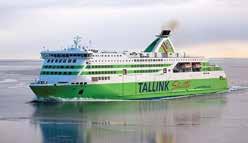
The Stena line-up at Rosslare will consist of the Stena Nordica taking over the Fishguard service from the Stena Europe, now over 40 years old and 20 years on this route. The Stena Nordica will have been completely refurbished and have had considerable passenger and cabin capacity added when she arrives from a Polish shipyard.
Irish Ferries and Stena deploy new tonnage on Rosslare routes
Stena will release the freight ferry Seatruck Panorama back to her owners, CLdN on completion of her charter period and replace her with the cruise-ferry, Stena Vision. This change will enable Stena to operate a six round trips weekly on its Rosslare/Cherbourg service with increased freight capacity and a high-frequency tourist traffic capability.
Irish Ferries has announced the replacement of the Greek owned Blue Star 1 with the Estonian Tallink Line owned Cruise Ferry Star to operate its Rosslare/Pembroke service. The vessel switch will take place in June with the new vessel taking on the name Oscar Wilde. This vessel has been chartered for an initial 20-month period, but Irish Ferries has the option of extending the charter for up to four years with a further purchase option.
The Star was built at the Aker shipyard in Helsinki in 2007, the yard at
CMA-CGM continues its expansion into ferry and air freight businesses
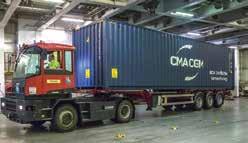
During the recent Brittany Ferries AGM, it was announced that CMA-CGM, the world number three container shipping line, which had given loan support to Brittany Ferries to meet the problems arising from the drop-off of business due to COVID-19 travel restrictions, had converted the loans into a 16% shareholding in the company. This, and commitments of further finance, will support the arrangements already entered by Brittany, specifically taking on the charter of two further e-Flexer Cruise Ferries from Stena Ro-Ro. There has been speculation that these charter arrangements, which already cover three e-Flexer vessels running for Brittany Ferries on its Spanish services, will be bought out with CMA-CGM backing.
CMA-CGM, which already has a freight ferry operation in the Western Mediterranean, has announced the acquisition of the Marseilles based ferry company, Le Meridionale. This company operates up to thirteen sailings a week from Marseilles to Corsica and has opened a regular line to Morocco.
CMA-CGM’s Containerships subsidiary operates an extensive range of Lo-Lo
services within the Portugal/Finland range. These are both door to door inter-European services and feeder services linked to the Deep-Sea Line’s operations. CMA-CGM also has the facility to ship some feeder containers abroad ferries in its own and Brittany Ferries’ networks.
In the case of the Le Havre/Rosslare ferry service, CMA CGM is, through its Containerships subsidiary, marketing its ‘DUNK Fast Lane’ service. Sailings are on Friday from Le Havre and Saturday from Rosslare. Containerships offers 45ft. high-cube, pallet wide containers giving Irish exporters intermodal services to most French cities.
CMA-CGM has continued to diversify from its Ocean Shipping business and has launched a long-term strategic air cargo partnership between its CMA-CGM Air Cargo company and Air France-KLM Martinair Cargo. It will combine its

which Ulysses was built in 2000, and has a freight capacity of 2000 lane metres, 2,080 passengers and 450 cars. In service she will be the largest and fastest ferry on the Irish Sea. In the course of its statement announcing the acquisition of the new vessel, Irish Ferries clearly stated that she will initially operate the Rosslare route but could later on operate elsewhere on its network.
Of the newer service operators through Rosslare, Brittany Ferries has already significantly increased its passenger and its freight capacity on its Bilbao and Cherbourg routes by switching from a Viscentini ro-pax vessel to the e-Flexer Galicia, while DFDS is now running its five round trips weekly using vessels from its own fleet, Optima Seaways and Regina Seaways. These vessels have more limited passenger capacity.
complementary cargo networks, full freighter capacity and dedicated services. Currently CMA-CGM Air Cargo operates 6 full freighter aircraft out of its Paris base and has orders with Airbus for 6 further freighters. The current Air France-KLM Group fleet is six full freighters, but the joint venture will also market belly hold capacity on the French/Dutch carriers passenger fleet.
Currently CMA CGM is developing an offer to take over Bollore Logistics. Bollore has an estimated asset value of €5 Billion and locations in 148 countries. It is a dominant force in logistics within many African countries, and if this deal goes through, it will reinforce CMS CGM’s position in the Freight Forwarding and Logistics sectors which includes operators such as Ceva Logistics and the recently acquired, Gefco.
www.fleet.ie
FLEET MARITIME | 35
CMA-CGM box on Brittany Ferries vessel Cotentin
Tallink Star
PORT PORTALS
DFDS has indicated to the market that the March 2023 freight volumes on its ferry network have been in line with expectations. It carried 40,781 lane metres of freight aboard the ferries in the April 2022 to March 2023 period, a drop of 6% over the previous year’s figures. The North Sea volumes were below last year due mainly
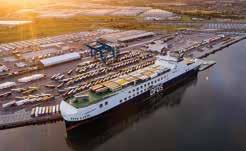
Former B+I Line vessel, Connacht, built in 1979 at Verolme Dockyard in Cork and, in recent years sailing as Dubrovnik, on Jadrolinija, Croatian services, has been sold for further ferry service by Greek Ship Management company, A-Ships management.

to smaller volumes between the Netherlands and the UK following a temporary drop in continental vegetable and fruit volumes caused by high energy prices. Volumes on the Dover Straits English Channel services were below last year due to a continued market decrease, suspension of sailings by P&O in March 2022, and the negative impact of the entry to the marketplace of Irish Ferries. Baltic Sea volumes remained negatively impacted by the war in Ukraine. Passenger traffic on DFDS services, while, still 20% less than 2019 levels at 4.1 million, has made a substantial recovery.
The Connacht’s two-year younger sister-ship, built as the Leinster, has recently been scrapped at Prince Edward Island, following several years’ service with the Canadian Government C.T.M.A. Traversier, Newfoundland services.
this will enable it to reduce sailing time on the route by half-an-hour, resulting in the capability to add extra daily sailings. The new vessels have hybrid power systems but reports from the company indicated that the required battery re-charging power systems planned for the ports of Dover and Calais will not be in place for some time and that the batteries will re-charged by the vessels’ diesel engines.
Peter Hebblethwaite, CEO of P&O Ferries, said: “The delivery of P&O Pioneer’ is an important step for P&O Ferries, and one that will bring advanced sustainable technology to the DoverCalais crossing. We are excited to offer our passengers and freight customers the chance to experience this state-of-the-art new ferry on our busiest route, which is also one of the UK’s most important connections with the continent of Europe. Last summer we carried more than one million passengers on this route and are looking forward to an exciting summer ahead with the first of our two new ships.”
P&O Ferries expects to bring the first of its two new-build vessels on the Dover/Calais service in May this year. The Chinese built, P&O Pioneer, is double ended, to enable traffic to drive straight through the vessel and avoid the necessity for the ferry to turn around while in Port. P&O Ferries has said that
A clear indication of the problems in several European countries in housing refugees from Ukraine following the Russian invasion last year, comes in a recent report for the Estonian Line, Tallink. Three of its large Cruise Ferries, including the 2006 built Galaxy, which has a bed capacity of over 2300, are chartered to European Governments, while a further similar vessel, Isabelle, which had been used by the Estonian Government in a similar manner since April 2022, has now been chartered as a Flotel by a Canadian based company. These vessel deployments may also be indicative of a reduction in passenger traffic on Scandinavian and Baltic routes.
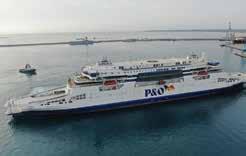
FLEETTRANSPORT | MAY 23 36 | FLEET MARITIME
P & O Pioneer at Limassol.
DFDS North Sea Port Terminal Ghent
Jadrolinija Ferry, Dubrovnik
“Last summer we carried more than one million passengers on this route and are looking forward to an exciting summer ahead with the first of our two new ships.”
Castlebar, County Mayo is to be the site for the first new Iarnród Éireann/Irish Rail multimodal freight yard in almost five decades. The announcement, made by Glenn Carr, Director Commercial Business Units, Iarnród Éireann, advises that the West of Ireland town was the preferred location for the facility as there are major multinationals nearby which employ many people.
Irish Rail announces plans for second County Mayo intermodal freight terminal
Presently, the nearest multimodal rail freight terminal is around 23 miles away and transferring containers by road from Castlebar to Ballina adds time and cost to the supply chain. Ballina has a thriving freight terminal that handles multimodal trains for Dublin based IWT and XPO Logistics along with pulpwood trains for Coillte, the Irish forestry company. Pulpwood is also handled at Westport in County Mayo.
Making the announcement, Glenn Carr stated that the rail company is currently working on the design. He noted that industries in the County of Mayo are keen to move from road to rail to help reduce their carbon footprint. Currently IWT operate up to eight trains each week from Ballina to Dublin Port and XPO Logistics runs twice weekly Ballina to Waterford Port services linking with the Samskip container shipping services to Rotterdam. Coillte Pulpwood
Deep-Sea Container Shipping Rates continue to drop
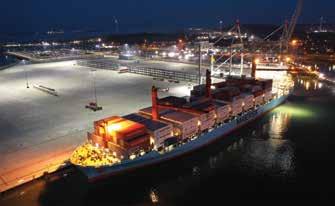
Traders throughout Europe have welcomed the steady reduction of container shipping rates that started in late-spring 2022 and have continued. The most dramatic falls have been on rates from Asia to both European and US ports, while the slowest reductions have been on North Atlantic traffic.
The Irish Exporters Association and analysts are advising cargo owners that have contract rates in place with their shipping lines and freight forwarders to look again at the rates that they are being charged under those contracts and which may now be substantially higher than rates currently available on the ‘spot’ market. A few contracts have already been re-negotiated for major volume shippers and replaced with index linked contracts which reflect the variations in fuel and vessel charter costs. All indications are that high inflation rates are slowing consumption in several
countries and that the economic post-pandemic recovery may still be several months away. Shipping Lines are now also having to manage the introduction into service of a significant fleet of container ships, many of the vessels being dual-fuelled, at a time when demand for ships has fallen away. There has been a considerable uptick in recent months in the rate of vessel scrappage, something that initially takes out several less environmentally friendly vessels. Rates on the North Atlantic have been supported by record volumes of US containerised imports from Europe. In January 2023, these imports totalled 3.46 million tonnes, up 22% on January 2019 and 42% on January 2018. The largest volumes products were in the
trains run to the Irish Rail Freight terminal at Sallypark in Waterford with pulp for the nearby Smart Ply and Medite factories.
It is currently unclear how the Waterford North Quays re-development project will affect train access to the Port’s Belview Terminal. Plans are in place to use the Sallypark Terminal on a short-term basis while the disruption continues.
Glenn Carr has also advised that tender documents are almost ready for issue to potential suppliers of the four hundred multimodal freight wagons required to replace Iarnród Éireann’s existing fleet and facilitate the growth of business planned within the 2040 freight development plan. Currently the fleet of pocket-wagons which have been out of service for some time are being serviced and upgraded to provide short-term additional container shipping capacity.

building materials and products sectors; Bagged Portland cement volumes in January were 644,737 tonnes, an increase of 100% on the comparable 2019 figure. Spirits and wine tonnages were up 338,518 tonnes compared to January 2019.
Maersk and a few other lines have revised their North Atlantic schedules and vessel capacity to better accommodate the increased traffic volumes. And, to date, this has had no appreciable effect on the rates being charged to shippers.
www.fleet.ie
FLEET MARITIME | 37
MaerskCRX1 at Ringaskiddy
IWT
Container train en route to Dublin
For its latest vehicle procurement, the Ludwigsburg Fire Department in Germany has opted for a MercedesBenz Arocs 3743 6x4/2, making it even better equipped for future emergency operations in the city and district. The integral swap body concept allows the truck to be used extremely flexibly with interchangeable roll-off containers for versatile deployment.
RAM ramps up with new electric 1500 REV pick-up
Stellantis Group brand RAM presented its all-new, all-electric 2025 Ram 1500 REV light-duty pick-up truck at the New York International Auto Show last month.
The 2025 Ram 1500 REV will offer customers two all-electric options including a standard 168 kilowatt-hour battery pack with a targeted range of up to 563 km and an optional 229
Allison Transmission to supply SANY
SANY, a global heavy equipment manufacturer for the mining and construction markets, has agreed with Allison to supply its 4000 Series transmission for its SKT105 96-tonne wide body mining dump (WBMD) truck. SANY is the first OEM to manufacture WBMD trucks outside of China.
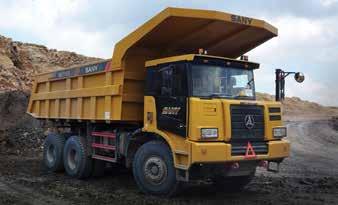
The SKT105 truck will be used for hauling ore and overburden, the rock or soil layer that needs to be removed
Bespoke Blue-Light Mercedes-Benz Arocs for Ludwigsburg Fire Department

A number of mission-specific swap body containers are available at the station so the fire crew can respond flexibly to different situations. For example, the “Respiratory Protection” roll-off container is used for cases when a great deal of smoke or the release of toxic gases can be expected. The “Technical Assistance” roll-off container is designed for serious road traffic collisions or incidents involving rail vehicles, but also
handles comprehensive requirements in case of severe weather emergencies. The most suitable roll-off container can be loaded in the shortest possible time thanks to this variable concept. The vehicle conversion and the roll-off container equipment were done by Walser.
The 4-axle rigid is equipped with a front-mounted winch and a loading crane with a hook-lift system behind the cab, with the loading crane made by Palfinger. It comes with a 9-tonne front axle and a steered, liftable trailing axle and is powered by an OM 936 7.7 litre 428 hp/2100 Nm Euro 6 diesel.
kilowatt-hour large battery pack with a targeted range of up to an unsurpassed 805 km. Both can add up to 177 km of range in approximately 10 minutes with 800-volt DC fast charging at up to 350 kW, offering customers quick and convenient charging solutions.
Vehicle-to-vehicle, vehicle-to-home and vehicle-to-grid bi-directional charging affords the Ram 1500 REV the

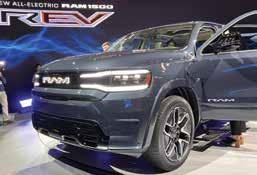
flexibility to charge another Stellantis battery-electric vehicle or provide power back to the grid. With Ram’s mission to make lives easier, the truck can also send power to a home during a storm, run the tailgate party or provide power at the camp or jobsite. An on-board power panel in the bed can provide up to 7.2 kW while an available on-board power panel in the frunk provides up to 3.6 kW.
in order to access the ore in mining fields.
The Allison 4000 Series transmission is specifically designed for the severe duty-cycles that trucks are put through in tough mining environments. Together, SANY and Allison will deliver improved vehicle performance and productivi-
ty, as compared to manual and other automatic transmissions.
FLEETTRANSPORT | MAY 23 | NEWS 1
38 | FLEETING SHOTS




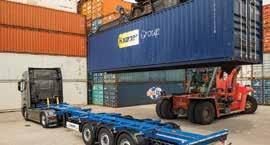

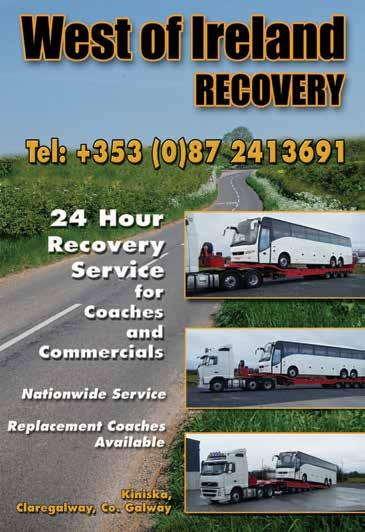






Ireland’s Multi-Award Winning Transport Training Company Transport Manager CPC Weekend & Full-Time Courses Starting: Tutor: Tony Hynes - Transport Industry Business Person of the Year 2021 35 Years Successfully Delivering The Transport Management CPC “Outstanding course” Laura C. “Tony made this course very easy” John O’B. “This course changed my life” Gary D. Full-Time Course Starts 17th MayGreen Isle Hotel Dublin Driver CPC Weekends - Weekdays - Evenings All Modules Available Book Online: 24/7 - www.cpc.ie NoW oFFeriNg oN-LiNe CourSeS Enquiries 066 - 7186525 087 - 6363003 info@cpc.ie GLEN MILLS TRANSPORT Co. Ltd. Millbanks, New Ross, Co. Wexford Y34 VX47 Mobile: 087 2592962 or 086 6033586 Email: info@glenmillstransport.com SHIPPING CONTAINERS FOR SALE AND HIRE 20FT, 40FT AND 45FT CAN BE DELIVERED NATIONWIDE PRICE ON APPLICATION GLEN MILLS TRANSPORT TRANSPORT Engaging Connectivity www.fleet.ie AWARDS 2024 Engaging Connectivity www.fleet.ie The leading Awards Programme for the Irish Road Transport and Haulage Industry SAVE THE DATE: Thursday 9th November 2023 VENUE : Johnstown Estate Hotel, Enfield, County Meath For further information on sponsorship opportunities please contact: Orla Sweeney - +353 86 2439239 orla@fleet.ie Mary Morrissey - +353 87 2178495 mary@fleet.ie www.fleet.ie
The eVito Panel Van.
Efficient electric drive - now with a much greater range of 314 km. The eVito is just as functional, secure and comfortable as you have come to expect from a Mercedes-Benz Vito.

Scan to learn more:








www.fleet.ie AWARDS | 41 T HE LEADIN g AWARDS P RO g RAMME FOR THE I RISH R OAD T RANSPORT AND H AULAg E I NDUSTRY g ALA DINNER T HE LEADIN g AWARDS P RO g RAMME FOR THE I RISH R OAD T RANSPORT AND H AULAg E I NDUSTRY g ALA DINNER J OHNSTOWN E STATE H OTEL , E NFIELD , C O . M EATH T HURSDAY 9 TH N OVEMBER 2023 FOLLOW US www.fleet.ie AWARDS | 41 TRANSPORT Engaging Connectivity www.fleet.ie AWARDS 2024
NATIONAL HAULIER OF THE YEAR
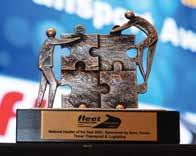
This category is open to operators that transport goods within Ireland and are registered in the Irish Republic. Entrants must operate some of their own vehicles in the fleet used and will be judged on particular projects completed with measurable outcomes.

INTERNATIONAL HAULIER OF THE YEAR
Open to Irish registered hauliers that transport goods internationally. Companies must operate their own vehicles. Entrants should include contracts undertaken. If there are depots or alliance partners formed overseas, please mention this, and detail measures taken in terms of driver and load security when abroad.
OWN ACCOUNT TRANSPORT OPERATOR OF THE YEAR


Entrants must operate their own fleet of vehicles to distribute their own goods. Companies can demonstrate the cost effectiveness of not outsourcing their transport and some of the advantages of running own vehicles. Describe the Transport Manager’s role and the type of storage used.
OWNER DRIVER HAULIER OF THE YEAR

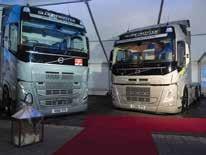
Operators of own vehicle(s) as an owner-driver are eligible to enter this category. Ideally an entrant in this category should spend a significant amount of time driving, more importantly they should demonstrate how as a driver they can contribute to the success of the business and the advantages it brings, along with the challenges it presents.

REgIONAL TRANSPORT OPERATOR OF THE YEAR

This category is open to operators whose main operation is focused on a specific region of Ireland, running a dedicated fleet of vehicles for local distribution. Members of pallet networks are well positioned to enter this category.
FLEET/TRANSPORT MANAgER OF THE YEAR





Overseeing the efficient and safe operation of a fleet of trucks and their drivers are what the judges are looking for here. This person must demonstrate the highest levels of ability, CPD (Continuous Professional Development), methods of reducing costs as well as knowledge of IT systems. An entrant should outline how they work within the overall management of the company in terms of involvement in a management team, particularly the challenges it presents.
VAN FLEET
AWARD

This award sets out to recognise companies which operate a number of light commercial vehicles and consistently demonstrate best practice in their operation. It is often more challenging to operate small vehicles than large ones, so entrants should outline how your company faced these challenges.




LIVERY OF THE YEAR AWARD
TBC

Livery, while can be described as mobile advertising is something that is very personal to a transport company or owner driver. What has inspired your logo design and colour scheme and how it has been adapted over time in practical times will be taken into account. Has the identity been incor-



FLEETTRANSPORT | MAY 23 AWARDS | 41
42 | AWARDS OUR SPONSORS
TRANSPORT
Engaging Connectivity www.fleet.ie AWARDS 2024
porated it into other aspects of the business, ie., staff uniforms, letter heads, signatures etc.
SAFETY PRACTICE AWARD
Safety experts often advise that good safety practice is not expensive compared to the consequences of an accident. How good is the safety practice within the organisation? How often is the Safety Plan updated? What training courses have been conducted?

WOMEN IN TRANSPORT AWARD TBC


This category is designed to recognize women working in all areas of the transport and haulage industry. If you have achieved success in your area of expertise in the road transport industry, the judges will welcome an entry from you, whatever your position. This category aims to recognise women who are positive role models in the industry to encourage more women to see the haulage industry as a worthwhile career. The judges will look for CPD (Continued Professional Development) innovation, enthusiasm and dedication in what is often perceived as an unattractive industry by women.
INNOVATION AWARD
Innovative ideas can often make the difference between a company succeeding or failing. The concept does not have to be your own invention, but applicants should have implemented an innovative idea to improve efficiency, safety and well-being in the organisation.
ENVIRONMENT & SUSTAINABILITY AWARD
Road transport operators should demonstrate how they have created efficiencies that improve their environmental impact and how they assess these efficiencies on an ongoing basis. For this category please provide environmental statements as to how your company meets operational planning, routing, and cutting down on empty running. Demonstrate how telematics play an important role in achieving this overall goal. Explain how the data is downloaded, assessed and addressed. How is the driver performance rated, how reliable is the truck/van fleet? What is the age profile of the fleet. Mention how vehicles are purchased and if alternative fuels are used. Detail how energy usage is reduced and recycling methods undertaken.
EXPRESS/HOME DELIVERY SERVICE PROVIDER OF THE YEAR


This new award is created to acknowledge the growing number of express or home delivery specialists, whether in the door to door and/ or business sectors. Successful applicants will be those who can demonstrate high standards of operational customer service and going the extra mile when needed. Applicants must provide examples of compliance including safe and best practice in vehicle maintenance and driver competence and behaviour. Applicants should demonstrate how the business is reducing its carbon footprint though fuel efficiency and general energy savings around the warehouse or depot. They should also provide an indication about how the business routine makes it easy for customers receiving deliveries, remembering recipients may not always be at home, have limited computer skills, and may be nervous about strangers coming to their front door. Please state whether the operation is fully run by the company and/or with sub-contractor(s). Subcontractors can also apply.
EXCELLENCE IN WAREHOUSINg & PRODUCT HANDLINg






Warehousing and storage is a business that many transport companies expand into. It is a way to win extra business and often a way to improve the efficiency of your own vehicles. Entrants should focus on project that show how the synergies between a transport company and its own warehousing operation have improved their overall efficiency.
CUSTOMER SERVICE EXCELLENCE AWARD
The ‘Customer Service Excellence’ award recognises specific accomplishments in customer service, whether they are achievements by an individual, a team, or a department. The judges will look for evidence of the effort and impact of excellent customer service on the customer and business. Training and demonstrable commitment of the company to customer service will be an added bonus in this category. Customer testimonies will also be of benefit.
TECHNICAN OF THE YEAR
Entrants in this category must have completed an apprenticeship and have a minimum of one year’s experience. They should also demonstrate how they keep their skills up to date and how they communicate with the operational staff issues that need to be brought to driver’s attention




www.fleet.ie
AWARDS | 43
Engaging Connectivity
T
HE LEADIN g AWARDS P RO g RAMME
T HE LEADIN g AWARDS P RO g RAMME
FOR
FOR
THE I RISH R OAD T RANSPORT AND H AULAg E I NDUSTRY
THE I RISH R OAD T RANSPORT AND H AULAg E I NDUSTRY
J OHNSTOWN E STATE H OTEL , E NFIELD , C O . M EATH T HURSDAY 9 TH N OVEMBER 2023
BOOK YOUR TABLE NOW
Business associates, clients, partners and friends are all welcome to attend the Fleet Transport Awards and Gala Dinner, which will take place on Thursday 9th November 2023 at the Johnstown Estate Hotel, Enfield, County Meath.
A TABLE OF 10 IS €1350 + VAT
Price includes pre-drinks, 4 course dinner, wine and Awards presentation
A SIN g LE TICKET IS €145 + VAT
Price includes pre-drinks, 4 course dinner, wine and Awards presentation
Please reserve Seats €145 + vat or Table(s) of 10 @ €1350 + vat at the F LEET T RANSPORT AWARDS in the Johnstown Estate Hotel, Enfield, County Meath on Thursday 9th November 2023 commencing at 6.30 p.m.
Name of Company: ______________________________________________________________



Invoice Address: ________________________________________________________________
_______________________________________________________________________________

Contact: ________________________________ Tel: ________________________________

Email: _________________________________________________________________________

Dress Code: gentlemen – Lounge Suit. Ladies – Cocktail Dress
This Booking Form can be posted to Fleet Transport Awards, D’Alton Street, Claremorris, County Mayo F12E7P2
To book your place now at the Fleet Transport Awards contact Orla: +353 86 2439239 / orla@fleet.ie / Anne Marie: +353 86 1451330 / awards@fleet.ie / Mary: +353 87 2178495 / mary@fleet.ie
FLEETTRANSPORT | MAY 23
AWARDS | 41 44 | AWARDS
TRANSPORT
www.fleet.ie
AWARDS 2024
Comfort, Class and Control
THE RENAULT TRUCKS HEAVY DUTY RANGE

AVAILABLE WITH NEW ENGINE TECHNOLOGY FOR UP TO 10% FUEL AND CO2 SAVINGS
RENAULT TRUCKS T, T HIGH, C & K
Introducing the new range of Renault Trucks DE13 engines including the turbo compound with smart torque control, delivering the power you need, when you need it.
To find out more or request a demonstration, contact your local Renault Trucks dealer.
setantatrucks.ie
As a rule, the transport and logistics industry did well economically in 2022, thanks in part to Government support, with most road hauliers having fuel surcharge systems in place. Another issue, that of driver shortages eased off, and while availability and price of new equipment continues to a major issue, most road transport companies sweated out their assets. Load volumes remained strong and all warehouse were packed, while there is evidence of reduced cut throat competitiveness in the market re rates.
At last, the Government saw the industry as vital or at least important due to logistics risks experienced during Covid-19. The war in Ukraine has created uncertainty and escalated fuel prices but that has meant that those operators with fuel surcharges did not suffer. This ongoing uncertainty has aided hauliers in being able to maintain or increase rates when the customer wants and needs continuity of supply.
So far in 2023 there seems to be a clear reduction in overall transport demand, while the challenges around the supply of new truck units and trailers have eased (but at significantly increased cost premiums). Allied to that are rapidly increasing interest rates for finance with most financial institutions not committing a final rate into the future until the finance document is signed. During Quarter 1, 2023 there has been a significant increase in commercial vehicle registrations, some at a 30% premium
What’s Next?
compared to the cost two years ago, and a finance rate that’s 100% increased from just one year ago.
In summary, road transport operators are facing into significant cost increases, with added risks in their business.
And so the next question is - What should businesses do to prepare for what looks like a tougher business environment ahead? Firstly apply the 80/20 rule. Some businesses blatantly generate 80% of their profit from 20% of their customer base. They retain the rest for a lot of reasons. Normally they say the business needs that volume to cover overheads or that the work is linked but the real truth is they love to have more trucks. Maybe in reality it’s a case they get a buzz from the hardship! A suggestion is to cut back to high margin core business that is niche but can easily adjust from seasonal fluctuations in volume if the margin is high enough. For those businesses that currently have a medium to good margin across all sectors, then look at how to avoid cost increases and better manage the business. Remember the biggest undersupply in the transport market at present is not drivers or equipment, it’s actually that core sector of middle management that help to run the business.
Clearly there have been some dramatic consolidations in the Irish transport market recently. It’s a trend that is likely to continue and the financial institutions expect to be dealing with a
smaller number of larger players in the Irish market into the future. There may be just three main categories of haulier/ logistics companies into the future 1) the small 1 to 4 unit operators who predominately are subcontractors to the large players 2) the niche 10-15 unit operators whose high margin relates to specific work type or trade and 3) 60 plus truck operators who offer a host of services to major clients and at the top end are connected to the big multi-national players. With increased compliance requirements and regulations, plus greater customer expectations, the day of the small operator without a niche business are limited. Some new business agreements may form so that carriers have national/international capacity and strength, similar to a pallet network but without a formal central business controlling or taking margin. This is what is happening in the UK industry which has large players with huge turnover but operating with relatively low percentage margins. Then there are the niche players in regional locations that still thrive. Above that the global players continue to dominate the upper end of the market. The UK transport industry has hit the perfect storm with reduced volume but with huge restrictions on labour supply. Even in a downturn it is very difficult to train or incentivise the indigenous labour force back into commercial driving. Sadly, they no longer have the interest or ability. Text: Donal Dempsey - donal@fleet.ie
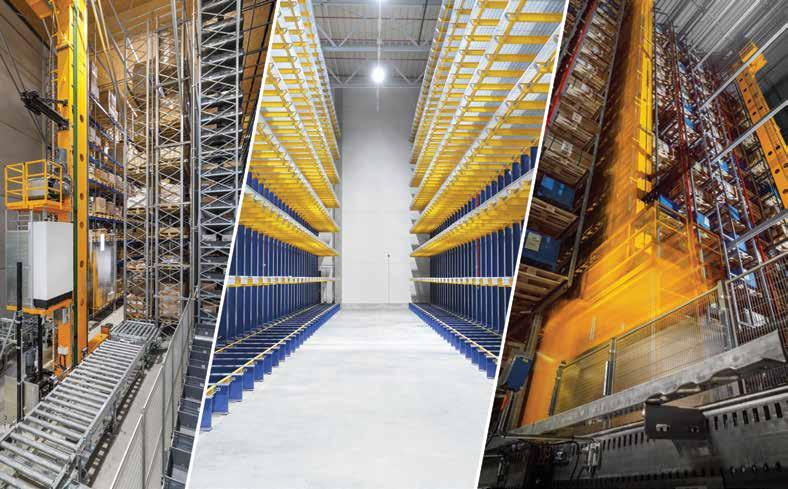
FLEETTRANSPORT | MAY 23
46 | FINANCE
from

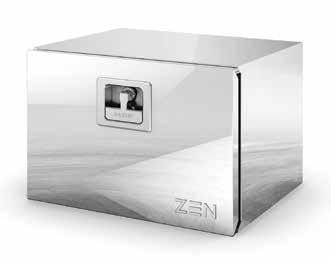
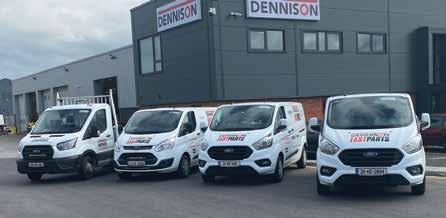
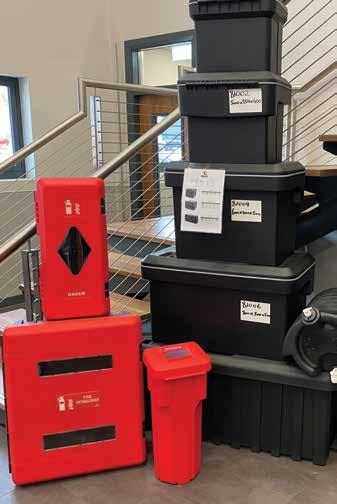
Naas Industrial Estate, Fishery Lane, Naas, Co Kildare, W91 PT98 Fastparts Office: 045 90 60 31 / 045 90 60 22 Fastparts Counter: 045 90 60 68 John Browne: 087 798 7003 Martin Walsh: 087 122 4435
range of staI nless & powder coated steel tool boxes
complI ment the daken plast Ic to o l box range
FASTPARTS Introduc I ng the new Zen range
daken full
to
Sadly, the word recession is back in our vocabulary again. Is there another one coming? Could Ireland avoid it? If it comes will it be severe, and one wonders if many businesses can survive it. We know from the last downturn or crash, call it what you like, a lot of businesses and individuals did not make it through, and some are still recovering from the financial impact it had on them. Nobody wants to face that again, nobody.
That said, what can one do to avoid the worst of any slow down of the economy? Being prepared is key. Of course, that is no guarantee. A bit like musical chairs, when the music stops, if you’re not near enough to a chair you are in trouble.
Where many companies were caught in 2008 / 2009 was in having property investments that were being propped up by their mainstream business. What causes a recession is something most businesses should not be concerned about, because they probably will not recognise it and even if they do, there is little they can do about it. One time when Anthony Daly was managing the Dublin hurling team, he was asked in
advance of a match against Kilkenny if he was concerned about the weather. He told the journalist that he had no control over the weather and that he would concentrate on what he had some control over, getting his team prepared.
The point here though is that while Antony Daly may not have had control over the weather, he would of course have had to consider it in any plans made. Listening to commentators, bankers and economists only leads to confusion. Remember, most of them got it wrong the last time. Listening to a panel discussion on radio recently, the discussion concluded that all the indications were that a downturn was likely, but the panellists were confident it would be avoided. Work that one out. It gives little confidence when banks, rating agencies and other experts revise their forecasts up and down regularly as the data received changes. Really, they are reporting on events rather than predicting them. Not unlike a forecaster looking out the window and giving live broadcasts on the weather, not really helpful if you want to plan a day out.
So back to square one, is a recession likely? It’s best to focus on what can be seen and understand. There are always tell-tale signs around, often they are the things to relate to and possibly make decisions based on what you can see and understand.
Let’s look at some of the signals we are seeing in the broader economy now. There are some tell-tale signs, which may prove ominous in a year’s time. In China, according to Bloomberg, truck movements have reduced by 8% and
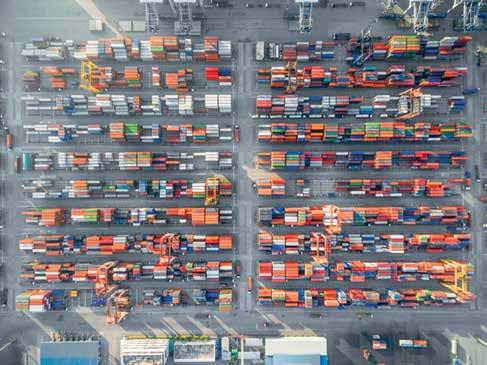
in the USA, diesel demand is reducing, and the CEO of the American Trucking Association is informed that demand will be 5% lower than last year. There is one positive from this, diesel prices are likely to fall as demand decreases, but against that prices will be reducing for the wrong reason. Fewer truck movements are because of a reduction in consumer spending. Here, in Ireland some of the major parcel carriers are reporting a drop in volumes being carried. While some of this is down to people going back to the Main Street, shop keepers are not necessarily seeing all that footfall back as inflation starts to bite. So, there is some fall off in trade here.
So, like all other commentators, it might be best to sit on the fence,. There is a sense though that business does not feel comfortable right now. Indeed, we have not seen the full effect of Brexit yet, and there may be some fall-out to come from COVID-19. Supply Chain challenges that have come in the wake of the pandemic have created a shortage of many products, leading to inflation. That may be a temporary situation and will correct itself once things start moving again but will be interesting to monitor. One final point to ponder on. There is another sign that may be significant in that construction activity has slowed up over the past few months. There are many projects that are on hold and what developers refer to as “shovel ready”. Wonder what do these people know or see that possibly some of the rest of us don’t? Perhaps they are being cautious. Then, maybe we all should be?
Text: Sean Murtagh - sean@fleet.ie
FLEETTRANSPORT | MAY 23 | NEWS 1
48 | OPINION
Are we facing a continuing boom or a recession?
Warehousing and storage risks must be effectively managed in order to protect people from harm, as well as protecting your premises, goods, equipment and reputation. If you run a warehouse you can reduce your risk exposure by concentrating efforts on the main causes of injury and occupational ill health at your premises. Once you have identified the main causes, you must then determine what action you need to take to reduce injuries and ill health. The main priority hazards requiring attention within the storage and warehousing industry include:
n manual handling/musculoskeletal disorder
n slips, trips and falls (STFs)
n vehicles in and around the warehouse and the pedestrian interface
n storage systems, including work at height and moving or falling objects.
n There may be other risks on site that need to be considered, e.g., health and psychosocial risks, exposure to chemicals and dangerous substances or extremes of cold.
M ANUAL HANDLIN g
If there is a risk from a manual handling task, the first goal should be to look for ways to avoid the task. If the task cannot be avoided, the risk of injury occurring must be minimised. Risk management requires an identification of all tasks that involve manual handling. The nature of manual handling work activities must be fully understood, (e.g., the type of loads that are handled, what do they weigh? how loads are handled?).
Information is key to making informed judgments, (e.g., weight of loads, work environment issues such as stairwells, working in tight space). The tasks should be redesigned to avoid the need to move loads manually, or use mechanical
Safety in Warehousing and Storage Facilities

handling devices, e.g., lift trucks, pallet trucks, trolleys, conveyors, chutes, etc. Training should be provided, specific to the task, in safe manual handling techniques and the devices used.
S LIPS AND T RIPS
Slips alone account for almost half of all slips, trips and falls (STF) incidents. People generally slip on level surfaces when these surfaces are wet or contaminated. The condition of surfaces must be checked, and slippery surfaces must be rectified. Caution must be exercised not to introduce a slippery surface, e.g., if painting surfaces for traffic management purposes, use a slip resistant paint. Proper slip-resistant footwear can be vital in preventing slips.
Trip hazards can include items like waste packaging, banded strapping loops and pallets. Floors and traffic routes must be kept free from waste and obstructions. Floor surfaces must be maintained, and a good housekeeping regime is vital, to ensure that routes are kept clear.
V EHICLE RELATED PROCEDURES
Procedures must be in place that clearly outline how, when and where, and involving who, vehicle related activities are to be carried out, including loading/unloading, reversing, parking, manoeuvring, deliveries and collections, etc,.
Traffic routes should be properly designed and laid out by considering the vehicles being used, avoiding sharp bends, blind corners and anything that can affect load stability, e.g., uneven surface, steep slopes. Attention should be given to keeping pedestrians separated, to the greatest extent possible, from routes and areas where vehicles operate. Routes should be marked and controlled with sensible speed limits and supported by safety information signage. The need for reversing should be minimised as much
as possible, e.g., by using a one-way system. Where reversing cannot be avoided it is good practice to put in place a designated reversing and turning area. Pedestrians should be kept out of this area, and reversing sensors, lights, and CCTV on vehicles can be useful in further reducing the risk.
S TORAg E RACKS
Moving materials on and off storage racks, either manually or using mobile equipment, puts workers at greater risk of injury due to overexertion or being struck by falling objects. There are additional risks if the racks are not properly installed, inspected, used, or maintained. The racks themselves can then be a hazard if they become unstable or collapse. The risk of failure is increased by overloading, poor maintenance (resulting in deterioration), and unsafe loading practices. Storage racks should have an installation certificate, be marked with safe working loads, and be protected as much as possible from being damaged by impacts. In general, racking is manufactured from relatively lightweight materials and there is a limit to the amount of abuse that it can withstand. The skill of lift truck operators has a great bearing on the amount of damage likely to be caused. Damage to racking will reduce its load carrying capacity. Racking systems should be checked regularly to look for signs of damage or deterioration. The section of racking around any damaged element should be offloaded immediately and the damaged element replaced before that section is used again. Racking should never be altered (e.g., by welding) nor components removed without first consulting the manufacturer.
Comprehensive information on managing warehousing and storage risks is available at: https://www.hsa.ie/eng/ Vehicles_at_Work/Workplace_Transport_ Safety/Warehousing_Safety/

SAFETY | 49
At the Manchester City Etihad Stadium, the Worker Bee graphic features prominently to acknowledge the hard-working resilient nature of the city. This symbol dates back to the mid-1800s when the Industrial Revolution was vibrant in the region. Legacy buildings of that mechanised era still exist around Greater Manchester. Many remain industrial, others being restored for commercial and residential use.
When Europe’s leading trailer manufacture Schmitz Cargobull AG decided to re-establish a factory based in the UK after a 10-year absence, the Greater Manchester region was selected by the German based Executive Board, for its central location and industrial

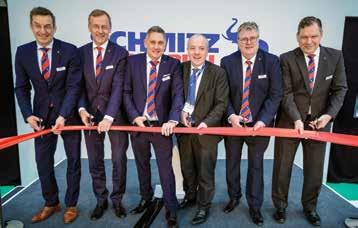
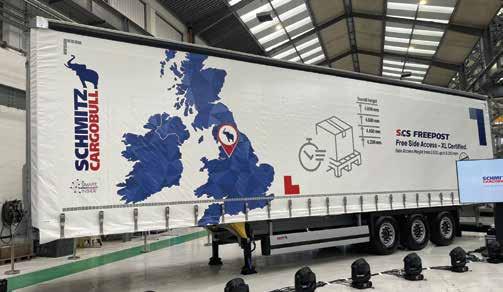
reconstructed into an assembly and administration facility. The 7,500 m² premises can produce 60 units per week in a one-shift operation and together with a 1,000 m² parts and components warehouse, aims to further improve Schmitz Cargobull’s supply and aftermarket programme for both UK and Ireland based customers.
Currently, Schmitz Cargobull UK & Ireland employs 72 people with the management team led by Paul Avery, Managing Director; Operations and Colin Maher, the Managing Director. Both were joined by senior company executives and close to 200 customers, dignitaries and media to mark the official opening of the factory at the end of March. Here, trailers specifically designed and developed for UK and Ireland customers have been produced since 2021, including the unique S.BO Pace dry box, S.CS Fixed Roof and S.CS Freepost curtainsiders.
Significant to the decision also is the fact that the UK & Ireland are among the top five markets for the company.
Schmitz Cargobull carries on ‘Worker Bee’ tradition with new Manchester factory
work ethic tradition. A former steel manufacturing plant in Southmoor, Wythenshawe, was found to be a suitable site and with some €3 million investment, the building was purposely
According to Paul Avery there was an ‘anxiousness’ to revert to a permanent facility after closing the Harlow plant in Derbyshire in 2010. “The decision was taken back then in the aftermath of the economic downturn. It
was always our objective to return and to serve the UK and Ireland markets with a strong statement, by re-establishing a manufacturing facility here,” he said.
Mentioning the site, which in its early days moved from steel manufacturing to glass fabrication and the construction of train transformers (which resulted in heavy lifting equipment being fitted, including a 130-tonne crane), Paul said that the plant today makes a significant contribution in reducing the company’s overall carbon footprint by manufacturing locally for local clients. “The site here is a perfect fit for us with a large production plant and 75-unit trailer park alongside Schmitz Cargobull’s modular manufacturing system, with its bolt-on, bolt-off procedure, which allows for efficient production, meeting customer specifications and with a delivery time of around 10 weeks.”
Boris Billich, Director of Sales & Marketing at Schmitz Cargobull stated that the new facility meets and adheres to the company’s Lean Manufacturing programme, derived from Toyota, and that each trailer produced goes through stringent quality levels and testing controls before handover to customers.
Native Mancunian Colin
FLEETTRANSPORT | MAY 23 | NEWS 1
Maher (with Tipperary roots!) is particularly proud
50 | TRAILER
Pictured L-R: Dr. Günter Schweitzer (Chief Operations Officer, Schmitz Cargobull); Andreas Busacker (Chief Financial Offer, Schmitz Cargobull); Colin Maher (Managing Director Sales & Services, Schmitz Cargobull UK); Mike Kane (Labour MP for Wythenshawe and Sale East); Paul Avery (Managing Director Operations, Schmitz Cargobull UK); and Boris Billich (Chief Sales Officer, Schmitz Cargobull)
of the development and investment by the company. He welcomed ‘the best of German engineering into the heart of British manufacturing’ and cited the ‘Worker Bee’ and the Industrial Revolution as significant symbols and milestones of the location which the company would benefit from.
With over 30 years’ experience as a sales and service engineer covering global markets, one of Colin’s objective is to improve the company’s aftermarket product services. He emphasised that UK and Irish customers specify their trailers differently to their Central European counterparts. “While we have great products and great people in the company, the after-sales service has to match,” he stressed.
Further investment and structures are in place, with the imminent announcement of a national service agent appointment for Ireland, allied to the on-site parts warehouse, which provides
manufactured on site at the Manchester facility, refrigerated units, tipper trailers and skeletons will also be part of the product portfolio, together with telematics and connectivity systems and finance packages. “Of course,” he added, “What the customer wants, the customer gets, such as refrigeration type, axle, brakes and tyre choice and all will be supplied.”
Andreas Busacker, Chief Financial Officer at Schmitz Cargobull, said that Manchester is the right place and location in terms of infrastructure and logistics, assisting with the company making a significant contribution towards sustainability.
As mentioned, Schmitz Cargobull’s product portfolio from the Manchester facility includes S.CS Fixed Roof and S.CS Freepost curtainsiders and the S.BO Pace. Like all of its trailers, they come specified with a proven, repair-friendly and galvanised modular chassis with a 10 year rust-free guarantee. The SBO Pace is uniquely designed and produced for the UK and Ireland markets aimed specifically at express parcel and palette network operators.
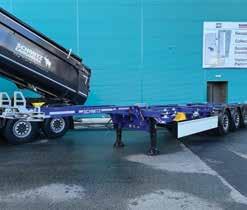
along the supply chain, supporting the rapid diagnosis and processing of the collected data from all components,” he concluded.
an overnight delivery service if needed. Colin emphasised that all aspects of after-sales will have a human element to deal with the client and will not be done remotely through a selection of numbers on the phone. “We will meet and see to customer expectations in this regard,” he added.
Colin also mentioned that as well as the three box trainers made and
As explained by Paul Avery: “The body consists of innovative Struktoplast panels. Thanks to the lightweight, Polyproplene honeycomb-shaped panels, the trailer weighs around 700 kg less than comparable vehicles with a plywood body. The lower net weight of the trailer increases payload capability. Furthermore, a significant reduction in CO2 emissions is achieved over the entire service life of the trailer, enabling transport companies to reduce their fuel costs and environmental impact. The S.BO Pace offers a wide range of options, such as load securing rails, a white-translucent roof, a tail-lift and two different rear variants, either aluminium doors or roller shutter. The vehicle can be equipped with numerous load-securing components, such as package securing nets. The floor load capacity is 5.5 tonnes as standard and can optionally be increased to 7.1 tonnes or 8.0 tonnes, if heavier loads need to be transported or industrial trucks need to be carried.”
“In addition, the vehicles are completed by TrailerConnect telematics from Schmitz Cargobull, which is fitted as standard e-works. TrailerConnect offers intelligent connectivity for better planning and controlled data exchange
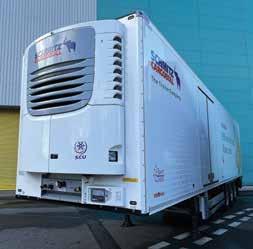
The new Schmitz Cargobull facility in the UK is the latest of a total of ten production sites in Germany (Altenberge, Vreden, Gotha), Lithuania, Spain, Slovakia, Turkey, Australia and South Africa.
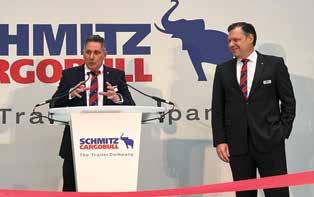
Q UOTES ON THE DAY
“The new Manchester plant enables us to bring trailers to our customers in the UK and Ireland that fit specific market demands, while offering the most reliable and proven chassis solutions in order to help achieve best total cost of ownership. In addition, transfer costs, CO2 emissions and throughput times are minimised,” stated Boris Billich, Director of Sales & Marketing at Schmitz Cargobull.
“We want to support transport companies in the UK and Ireland in the best possible way with our comprehensive range of reliable and innovative transport solutions. This includes vehicles with market-specific features, the shortest delivery times, an extensive 24/7 spare parts supply as well as our proven range of services from financing to telematics and used vehicle sales. The introduction of the new semi-trailers means we now have our strongest ever product portfolio in the UK,” said Colin Maher.
“Manchester has proven the perfect location for us with its strong industrial heritage. We’re already seeing a significant influx in demand, and we only expect that to continue to grow in the years ahead,” added Paul Avery.
www.fleet.ie TRAILER | 51
Text & Photos: Jarlath Sweeney
Colin Maher and Boris Billich
Reefer Unit
Tipper and Skeletal
From Where I’m SittingHoward Knott’
Brexit: the Beast that will not lie down
If you have read the piece elsewhere in this issue on the CBRE Kingspan Ireland Logistics Confidence index 2023, you will have seen that in the course of doing the research for the report, the authors, consultants, Analytiqa, found that Brexit and its fallout continues to weigh heavily on Irish manufacturers and logistics companies. I hope that I’m wrong, but I cannot escape the feeling that the more that the British Authorities try to fix Brexit, the worse things become and more confusion reigns.

Looking at the CBRE report it does seem that Irish companies are becoming more at ease with finding new trade partners within the EU and establishing optimal supply chains for their businesses. This finding is borne out by another body of research carried out by the Irish Maritime Development Office (IMDO) which found: “Prior to Brexit, the Ro-Ro sector was comprised of roughly one million units on RoI/GB routes and 200,000 on direct EU routes. In 2022, it was 800,000 RoI GB units and 400,000 direct EU units.”
The IMDO report states: “The shift has been driven by three main factors; the decline in the use of the UK Landbridge, a decline of Northern Irish importers and exporters using RoI/GB routes as a means of accessing southern Britain locations, and the relocation of some large retail warehouses from central UK to mainland Europe”. On the Lo-Lo activity, some 85% of which is Benelux focused, volumes through RoI ports rose by over 10%
from the 2019 figure, providing more evidence of a swing away from trading with Britain.
A couple of recent ‘fixes’ have intrigued me. The Windsor Framework, which sets out to make some sense of the trading control arrangements being applied on traffic moving between Britain and Northern Irish Ports and Airports, appears to have an interesting twist. Under the terms of the framework, goods will move through Belfast, Larne and elsewhere, with those coming from GB for delivery to N.I. customers having minimal control intervention, effectively a Green Lane’. Goods arriving at these ports and destined for RoI will continue to be subject to controls not unlike those that apply at Dublin, Rosslare, etc.
That’s all fine and well but, because N.I. has free access to EU markets, then trailers moving from N.I. through Dublin or Rosslare to board a direct ferry to Europe should also move without significant controls. Irish Continental Group (ICG) which own Irish Ferries, argued in the text of its recent Annual Report that implementation of the Windsor Framework should mean that trailers laden with goods from Northern Ireland and destined for Southern England or Wales should now be ‘green routed’ through Dublin or Rosslare, if they chose to travel that way. More recent documentation from the UK Border Control Agencies would also appear to support the ICG contention that this will be the case. If this is right, it may do something to address the
decline in use of the Irish Sea Central and Southern corridors.
I spoke to several trailer operators at an EU project event about the ‘Landbridge’ question. While Irish Ferries is having significant success with its Dover/Calais route, one which was launched with a view to capturing this traffic, it does seem that, “Yes, it’s okay for shipping trailers between exporters and importers who have high skill levels in the preparation and use of complex documentation, it does not work for smaller traders and particularly for those shipping traffic as groupage”. Recent weekend backlogs arising from the implementation of the next stage of control of passports for coach travellers on the Dover Straits routes may be a further factor in holding back any recovery in ‘Landbridge’ traffic.
Talking at another event with a French colleague, he said that on routes such as that linking Cherbourg with Portsmouth, there are good trailer freight volumes moving to Britain, but there is little cargo moving to France. Many hauliers and forwarders are choosing to send their empty trailers out using the Eurotunnel, further risking the viability of the Cherbourg service.
Finally, for now, the UK Cabinet Office has just issued a consultation document on its Border Target Operational Model. If this really is implemented as set out, Irish and other EU trade with Britain will drop to a trickle.
The Brexit ‘Beast’ still roars on.
FLEETTRANSPORT | MAY 23
52 | COMMENT
- howard@fleet.ie
Quick. Safe. Easy Side Loading.
The S.CS FREEPOST offers quick, safe and easy side loading without the need for sliding posts. Certified to DIN EN 12642 Code XL, the curtainsider semitrailer incorporates a bolted galvanized steel cant rail and fixed aluminium roof sheet, as well as a reinforced chassis structure for ultimate stability. The S.CS FREEPOST is built at the Schmitz Cargobull factory in Manchester and is designed specifically to meet the requirements of the UK and Irish markets. More information: www.cargobull.com/uk
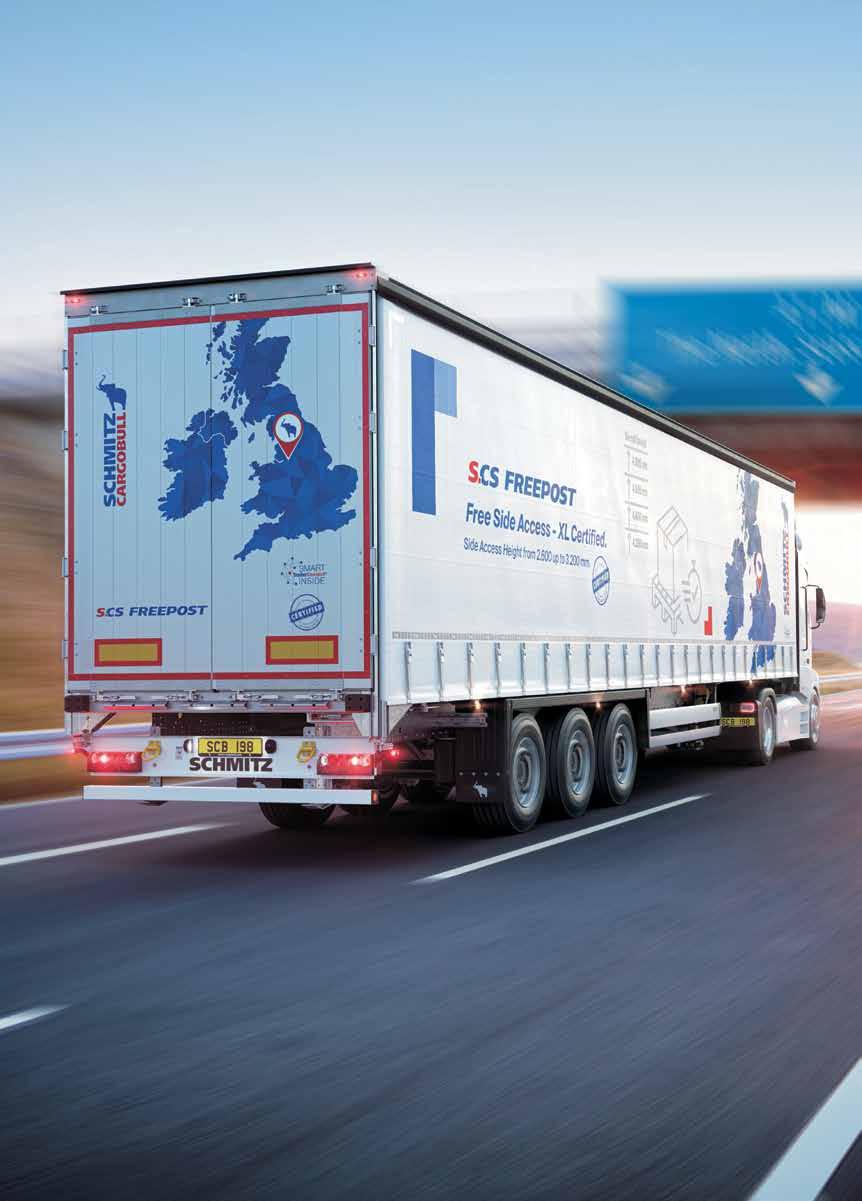
Trucks at RTX 2023 at Stoneleigh are the big attraction!
This summer’s spectacular trade show Road Transport Expo (RTX) is shaping up to be, once again, an unmissable event for anyone who works in the road transport sector.

With its ‘all about the truck’ mantra, RTX combines a vast exhibition of the latest vehicles, equipment and fleet services with a free-to-attend drop-in Knowledge Zone conference.
All the major HGV OEMs will be at the show – DAF Trucks, Iveco, Isuzu Trucks, MAN, Mercedes-Benz, Renault Trucks, Scania and Volvo – with their latest vehicle ranges to explore on the stands or take for a test drive over at the Ride & Drive Zone (or simply a ride in the passenger seat if preferred).
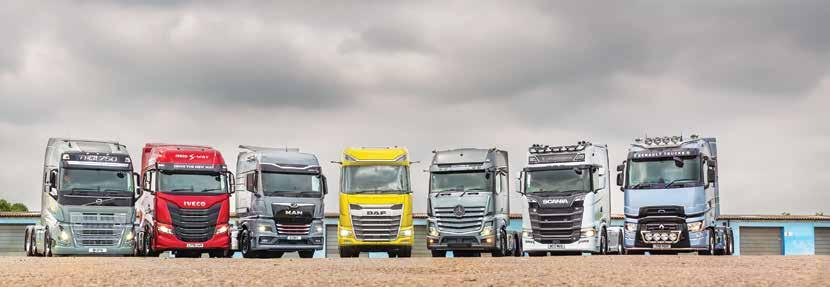
completely free to attend, including free parking.
To register, head over to www. roadtransportexpo.co.uk.
IN THE KNOW
Throughout the show, RTX will be running drop-in sessions on its Knowledge Zone stage. These will be covering a range of topical subjects, from road safety regulations through to fleet decarbonisation and key industry challenges.
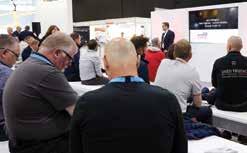
WEDNESDAY 28 JUNE
In the morning, visitors can participate in a series of Transport Compliance Briefings, led by Logistics UK. The afternoon will feature an engaging session hosted by safety specialist SMUK, called ‘Gearing up for Change’, which will look at how the latest technology can keep businesses compliant with tightening safety legislation.
THURSDAY 29 JUNE
RTX is also a perfect opportunity to catch up with industry colleagues and make those all-important new business connections.
A major emphasis has been placed on the visitor experience and the organisers will be pulling out all the stops to make sure attendees get the most from their time at the event.
“We can’t wait to welcome visitors to RTX this summer,” said Vic Bunby, divisional director at show organiser DVV Media International.
“With more exhibitors and an enhanced visitor experience, we believe the event provides an ideal platform for fleet operators to explore the latest technology, while networking with industry peers. We do hope to see you all there this June!”
RTX takes place from 28-30 June at NAEC Stoneleigh, Coventry and is
The morning’s session will focus on the industry’s journey towards a net-zero-carbon future, from the position today, to the UK Government’s ambitious targets to phase out sales of new diesel trucks.
In the afternoon attendees will also be able to join in the discussion about future truck technology, from fuels to servicing requirements, during a ‘Big Debate’ session after lunch with a line-up of major HGV manufacturers.
FRIDAY 30 JUNE
The Knowledge Zone reveals brand-new industry research, which will drill down into the key challenges facing operators for the year ahead. Drop in and listen to the lively on-stage debate with panellists drawn from the Road Haulage Association, Motor Transport and Asset Alliance. To round off the day’s Knowledge Zone sessions, advancements in diesel technology will be the talking point for Will Shiers, editor of Commercial Motor and his team of experts.
S HOW & T ELL!
More than 200 exhibitors will be heading to RTX this summer and suppliers will be showcasing and demonstrating a wide range of HGV fleet technology, with products including:

n The latest diesel, biogas, electric, hydrogen and hybrid technology –ready to ‘Ride and Drive’ on the day;
n Trailers, bodies and refrigeration systems;
n Vehicle safety gear and fleet compliance platforms;
n Training and recruitment services;
n Legal, insurance and compliance teams;
n Wheels and tyres;
n Refuelling and charging infrastructure;
n Workshop and maintenance equipment;
n Trade associations;
And much, much more
Make sure you check out www.roadtransportexpo.co.uk as new exhibitors are being added all the time!
FLEETTRANSPORT | MAY 23
54 | PREVIEW
The one-stop industry event that’s all about the truck and everything related to it
Following the success of last year’s Road Transport Expo we’re pleased to announce that we will be back at NAEC Stoneleigh from 28-30 June 2023.
HGVs will be at the very heart of everything the show will offer visitors, from the latest models on display and available to ‘ride and drive’ through to informative seminars and live demonstrations.


Register for your FREE tickets at roadtransportexpo.co.uk
See the BIG SEVEN at Road Transport Expo 2023
www.fleet.ie
IN ASSOCIATION
WITH
REGISTER NOW
Whether it’s a shower basket, ironing board or cutting board, when it comes to household goods, Wenko is the first place to go for many. To bring transparency into the supply chain and be more agile, the company introduced the supply chain management (SCM) software

OSCA (Online Supply Chain Accelerator). The family-owned business uses it to manage 145 suppliers and other supply chain partners.
Wenko focuses on IT transformation

‘Nothing is as constant as change’.
This proverb is the secret of success for many companies. This is also the case for the household goods specialist Wenko-Wenselaar GmbH & Co. KG, better known as the Wenko brand. In 1959, entrepreneur Wietze Wenselaar and his partner Maria Koellner founded a company which launched the first metallized ironing board cover in Germany.
However, achieving major growth was not possible with just ironing products alone. The founder’s son, HansJoachim Koellner, significantly expanded the product range after joining the family business in 1968. From then on, Wenko’s business no longer revolved mainly around laundry and ironing, but also included bathroom accessories, home storage solutions and other household appliances. Business boomed.
Today, the company from Hilden near Düsseldorf offers more than 5,000 items in the areas of lingerie, bathroom, living, kitchen, and leisure - with patents or property rights for around 1,500 products. With Niklas Koellner and his brother Philip, the third generation joined the family business around two decades ago. The siblings are also pursuing new ideas. In 2020, they acquired the mail-order supplier Maximex from Lower Saxony, which supplemented the product range with its products.
To keep up in the tough price war, Wenko’s goods are manufactured all over the world, including in Eastern Europe, Spain, France, Germany, and Asia. More than 200 suppliers are listed with the company. Five freight forwarders deliver around 4,000 shipments to North Rhine-Westphalia in Germany. Most of the deliveries are stored in two buffer warehouses, each with 20,000 pallet spaces. The hub for shipments to 81 countries - with the focus on Europe - is the Wenko central warehouse in Hückelhoven. It was opened in 1997. In 2017, the family-owned company invested in the semi-automation of the warehouse, which now covers more than 35,000 square meters. The high-bay warehouse comprises 34,000 pallet spaces. During peak season, up to 50,000 picks can now be carried out - per day.
Keeping track of all orders and shipments is not easy. Prior to the Covid-19 pandemic, Excel lists and emails were the main communication aids with supply chain partners. But Covid threw supply chains into turmoil. Suppliers couldn’t deliver, ships couldn’t leave their ports. As with many companies, goods often flowed hesitantly, but emails were frantic. “The Covid-19 pandemic led to the realisation that we needed to change in the supply chain space. Production and delivery delays were almost impossible to handle manually,” explained Wenko Managing Director Niklas Koellner. “In order to be able to control production and transport, we
FLEETTRANSPORT | MAY 23 | NEWS 1
“Monitoring has improved significantly”- Nicklaus Koellner, CEO of Wenko
56 | SUPPLY CHAIN
wanted to bring transparency into the supply chain with the help of a central tool. This should then inform all partners about changes at the same time.”

No sooner said than done. Koellner and the supply chain management team looked around for tools at the end of 2021. They found what they were looking for with the SCM software specialist Setlog. More than 150 brands worldwide now use the OSCA solution to manage their supply chains. “The decisive factor for the provider was that the best-practice version, which has been tried and tested at other companies, is easy to use and enables optimal control of logistics processes,” added Niklas. The first meeting took place at the end of February 2022, and the system went live at the end of July.
Since then, Wenko has been transmitting orders from its ERP system to its suppliers via OSCA. 145 of a total of 200 partners are connected to the system, which accounts for more than 85 percent of the total volume. Four of the five forwarding agents also work with OSCA. The software acts as a central communication and control tool - from order confirmation and delivery planning to booking shipments and transports. In addition to costs, volumes, lead and transport times, post-carriage control, and carton packing lists including label creation and delivery dates can also be controlled. The forwarders enter transport notifications and tracking data into OSCA.
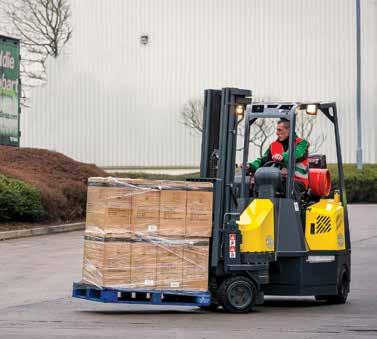
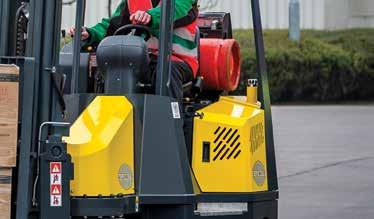
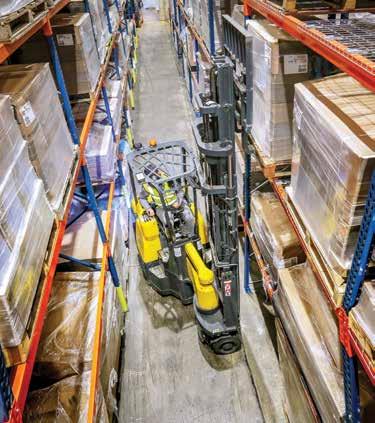
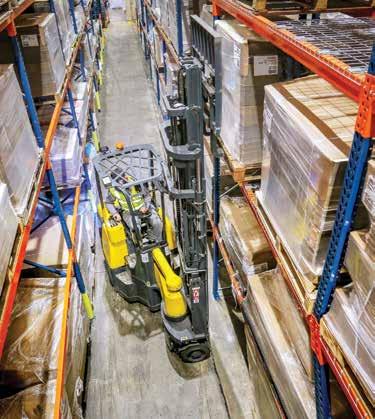
At the headquarters in the Rhineland, a dashboard visualises the most important key figures for the nine Wenko employees who are connected to the cloud-based system. When production or delivery data changes, all supply chain partners are notified simultaneously. “Monitoring has improved greatly. Production backlogs, for example, can be easily called up in the dashboard. Even colleagues’ vacations no longer pose a challenge because everyone involved can track the processes in the system through central communication. Implementation and training took a few days. But the advantages of a transparent supply chain quickly made up for that for Wenko: “There are no more media disruptions - and changes in orders and shipments are immediately visible to everyone,” he said.
And there are now more and more disruptions - due to political crises, strikes, environmental disasters or pandemics. “If a consumer goods manufacturer today cannot rely on a modern IT landscape - with SCM solution, ERP, CAD, WMS, PLM, payment system as well as production planning - it is quickly overwhelmed with the challenges of our time,” stated Ralf Duester, board member at Setlog. According to Ralf, the most important trends in the industry include increasing complexity in procurement and distribution, the shift from push to pull markets, the acceleration of ordering processes in companies, and the growing need for additional services. “Wenko shows how an innovative mid-sized company with 550 employees is embracing change and has prepared for the future with a modern IT infrastructure, dedicated IT experts and collaborative supply chain partners. And with the planned integration of Shippeo’s Visibility Tool into the running OSCA solution, Wenko will additionally be able to track its shipments in real time, adding further value to logistics,” he concluded.
Setlog GmbH is a wholly owned subsidiary of Setlog Holding AG. The company was founded in 2001 and is today one of the leading providers of SCM software with over 40,000 users in 92 countries. The software house employs 60 people at its locations in Bochum (headquarters), Cologne and New York.
Text: Rob Van Dieten
www.fleet.ie SUPPLY CHAIN | 57
by up to Increase Storage 50% with Aisle Master aisle-master.com
Anyone who has connected to Clare Bottle, CEO of the UK Warehousing Association (UKWA)(pictured above), knows she’s a regular visitor at members’ warehouses. Insights gathered from her ‘Tour de Warehouse’ sculpted this year’s National Conference, which directly addressed the challenges operators are facing in the UK.
Digital trade and an energy alternative at the UKWA Conference
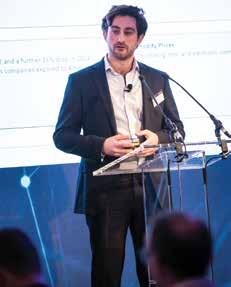
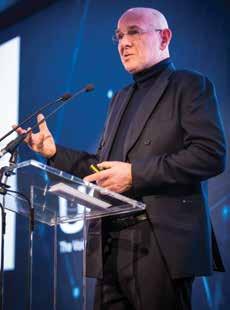

The Conference explored the UK’s economic outlook, how to finance solar, steps toward digital trade with the EU from 2026 and automation trends –including how Amazon’s investment slow-down is impacting automation costs.
Inflation has peaked and is set to
fall, explained Colliers UK’s Dr Walter Boettcher – to the operators in the room.
Dr. Boettcher’s opening keynote was somewhat positive, advising that inflation and interest rates will be key to any economic recovery in the UK in 2023. Retail was stronger in January than expected, the UK energy situation has vastly improved, and transport fuel prices will continue to moderate. He argued that the impact of Brexit is increasingly becoming diluted.
Rejecting the idea that globalisation is dead, he forecast “reglobalisation” instead. However, he did report that Chinese import growth continues unabated, and that the rise of eCommerce in the UK was linked to Chinese imports. He shared some slightly surprising points too. “A logistical footprint is required for eCommerce expansion… By 2025, 50 million sq.ft. of additional space will be required… 100 million by 2030.”
Ms. Bottle, who was facilitating the conversation added that “Increased efficiencies could theoretically reduce demand.”
Considering the gloom of recent forecasts and headlines, Dr. Boettcher’s keynote arrived as good news.
AUTOMATION AND LABOUR SPEND LINEAR
According to Rueben Scriven of Interact Analysis, prices have been driven down by automation providers looking elsewhere for projects since
Amazon slowed its investment in the UK. He also shared how labour spend and automation spend are almost perfectly aligned, and that the UK spends more on warehouse automation than any other country.
Scriven led a panel featuring competing automations providers, including Jon Brewin from Autostore, who advised that the risks attached to automation investment, “can be limited by signing a contract with an automation provider. A lot of risk is eliminated at that point.”
Thomas Leliveld from AI-based exoskeleton business German Bionic was also on the panel. The wearable technology business manufactures power suits – worn like a backpack –and supports lifting movements on
FLEETTRANSPORT | MAY 23 | NEWS 1
58 | REPORT III
*Digital trade with the EU, solar finance and 100 million sq.ft. of warehouse space needed by 2030 among the key topics *The UKWA 2023 National Conference was packed with data, advice and useful information.
Dr Walter Boettcher
Rueben Scriven
the warehouse floor. He raised some interesting points about warehouse health, safety and worker mentality.
“In some markets it’s much easier to get the workers to work with new tech. In the UK, the worker thinks ‘this helps me do my job quicker so I can go home’. But in Switzerland, they have 40 problems [to solve] before they even put it on.”
S OLAR FINANCE
The debate around solar panel finance offered essential and practical advice to the operators in the room. Simon Booth from Zestec Asset Management discussed Octopus Energy’s Power Purchase Agreement model and Deanna Greenhalgh from EDF suggested that 100% of operators should explore solar options by 2030. Jonathan Bates from Photon Energy expressed his frustration that new warehouses are still being built without solar capability.
D I g ITALISIN g THE WAREHOUSE RECEIPTS
Chris Southworth, Director of International Chamber of Commerce (ICC), championed the opportunities of trade digitalisation. “It is the biggest initiative in trade today. It’s worth 25 billion in terms of growth. But what standards should we use as an international community? Southworth painted a picture of interoperable systems, digital connection, and the lowering of legal barriers to encourage trade.
He also discussed the new legal framework which would take us there:
the WCO SAFE Framework of Standards to Secure & Facilitate Global Trade (SAFE FoS). He described it as a “business rulebook designed by business.”
To the relief of many, he also noted that “the UK will be trading with the EU digitally by 2026.”
It was a speech which left listeners feeling fully charged. “Get ready,” he warned. “I’ve never seen progress at this pace. It will only get faster as bigger economies start to do more.” He added that the UK has a lot of catching up to do in terms of technical ability. “The East is way ahead.”
Chris had a request too, asking operators to step forward and work with the ICC “We are keen to digitalise the warehouse receipt. If we don’t digitalise that document, it will hold us all up. It doesn’t go digital until it all goes digital. We need your help to guide us.”
TOU g H g I g FOR W INCANTON
Wincanton delivered its keynote on day two of the conference – less than 24 hours after the operator lost its contract with HMRC followed by a swift 30% fall in its share price. CEO James Wroath addressed it immediately, and threaded the current affair throughout his speech, which offered plenty of insight.


“The cost of labour is skyrocketing which means we need to automate. If people don’t want to work they won’t be productive in a warehouse, so the government’s ‘get people back to work scheme’ won’t work.”
Mr. Wroath spoke of the reality of losing highly productive people to their home countries, rising wage claims, and the opportunity of goods-to-person
technology. He also made it clear that Wincanton – and 3PLs in general – need to take on the role of integrator when it comes to automating warehouse space for contracted clients.
The WMS implementation panel, led by logistics IT expert Lynn Parnell, also offered practical advice. Maria Torrent March – Warehousing & Logistics Strategy Director for Iron Mountain –offered her advice on the process: “Don’t underestimate the resource that is needed.”

There was a real buzz to the event. Attention was kept, debates were sparked, and questions were raised: Will members explore solar options, despite the challenges? How will 3PLs move forward with their automation strategies? And who will take the ICC up on its offer?
Whatever happens, it will be a busy year.
Text: Kirsty Adams – contributor@fleet.ie
www.fleet.ie REPORT III | 59
Chris Southworth
James Wroath
All-female discussion panel
At the official opening of its new Innovation and Research Hub in High Wycombe, England, Geotab, the Canadian based telematics company, announced that its data intelligence platform now provides near real-time data on battery charge, range, energy and fuel usage and charging history for over 300 different EV makes and models, making it the global leader in EV telematics.
Founded in Oakville, Ontario in 2000 by current CEO Neil Cawse who saw an opportunity to work on road safety and use data to improve road safety, Geotab now has over 2,500 employees, operates in over 100 countries, and has over 40,000 different customers operating fleets of all sizes. With 3.5 million connected vehicles, it can lay claim to being the largest fleet telematics company in the world.
The EMEA region is the largest market outside of North America, accounting for about 10% of the global connected vehicle base for Geotab, with just under 300,000 vehicles.
The Innovation and Research Hub in Hugh Wycombe has been operational since 2020 but was only officially opened last month because of the impact of Covid. The hub is dedicated to advancing the data intelligence required to support the electrification of the transportation sector at scale. The company uses advanced technology and reverse engineering processes to enable it provide comprehensive data insights to fleet managers for over 3,000 vehicles.
While focused primarily on commercial vehicles (over 60% of the fleets have over 500 units), Geotab has also leant its expertise to other more unusual products. For example it recently fitted a Geotab GO device to Britain’s

Geotab reaches milestone of supported EVs as it opens new Hub
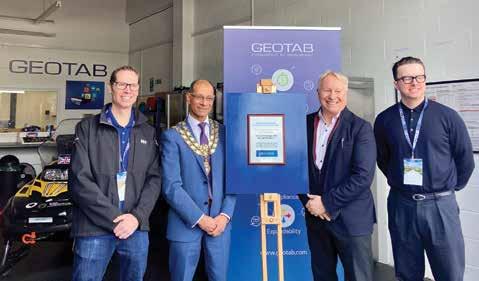
new polar research ship, the RRS Sir David Attenborough, which will be used to plan, track and manage the progress of all of the ship’s upcoming polar research expeditions. Other Antarctic bound vehicles including snowmobiles, snow groomers and tractors are also being fitted with the GO device, which can work thousands of miles from civilisation or regular connectivity.
“Our state of the art High Wycombe facility is Geotab’s first dedicated automotive facility in Europe, and is behind much of the success of the innovative technology used to reach this EV make and model support milestone, as well as our work on the British Antarctic Survey, the United Kingdom’s national Polar research institute, as the first commercial telematics provider to go live in the Antarctic,”” said Edward Kulperger, Senior Vice President of Europe at Geotab.
At the official opening, Geotab Vice President for UK & Ireland, David Savage revealed to Fleet Transport that the company is looking to further expand in Ireland with the appointment of an on-the-ground person who will focus on business development and establishing relationships with companies and fleet operators - see our interview with David on page 77 of this issue.
Geotab has also announced a partnership with Nero, the Irish dedicated Electric Vehicle platform , to help fleets on their sustainability journey and their switch to electric. “Our partnership with Nevo offers the best of both worlds, providing the benefits of our leading global technology platform delivered by local experts in the market,” said Aaron Jarvis, Associate Vice President Sales & Business Development, UK & Ireland at Geotab.
“This comes about at a tipping point for the telematics industry in Ireland, with companies looking to deliver on sustainability goals and bring about fleet savings to achieve a competitive edge. We are really excited to work with Nevo, who are really tapped into all of the changes underway in the Irish transportation landscape.”
Geotab sees its future as an epicentre for connected and sustainable mobility driven by IoT data, explained David Savage. That’s using Big Data to offer solutions across a broad spectrum ranging from helping OEMs measure how their vehicles perform in real life to helping fleet managers find the best vehicles for their needs and schedule maintenance updates, as well as set up car sharing services. Beyond that, Geotab also sees that its data capabilities can provide possibilities in areas as diverse as where to place warehouses to ensure same day delivery, identifying where there are network connectivity problems, identifying where demand will go up for electricity, and predicting increased traffic congestion and emissions. With a big picture hat on, its data might even be able to help to build liveable and safe cities of the future!
Text and Photos: Cathal Doyle - cathal@fleet.ie
FLEETTRANSPORT | MAY 23 | NEWS 1
60 | REPORT IV
Pictured at the opening of Geotab’s new Innovation Hub in High Wycombe were (l to r): Darren Beams, vice president, embedded development & automotive, Geotab; Cll Arif Hussain, Mayor of High Wycombe; Edward Kulperger, senior vice president, Europe, Geotab; David Savage, vice president, UK + Ireland, Geotab
A Geotab GO device fitted to a snow mobile bound for the Antarctic
With electrification and green energy ever more part of people’s lives, it wasn’t surprising to see a strong showing of automotive brands including Audi, Fuso, MG, Polestar, Renault and Volvo Cars display their latest electric vehicles at the SEAI Show 2023. A number of related businesses such as home charging providers were also prominent. With over 125 exhibitors and 3,000 visitors, activity on stands was brisk throughout the two day event
Away from the halls, there was keen interest also in a series of industry seminars advice advice and insider tips for companies and individuals interested in going green. Of particular interest to the transport sector was a seminar entitled: Electric Vehicles in Commercial Fleets: Outlook and Opportunities
Shane Prendergast - Programme Manager at SEAI for EVs provided an overview and early findings feedback
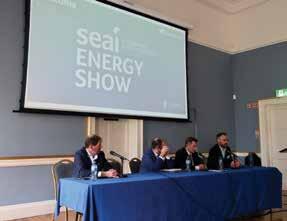
Show
on EV Commercial Fleet trials being undertaken at present. Set up by the SEAI because of low uptakes of commercial EVs to date, and designed to test such vehicles in real world settings, the three month trial involves 50 electric vehicles, 30 of which are passenger cars and 20 vans. Companies that have signed up to the trial have been offered the use of an EV for the period as well as the installation of charge points.
Shane explained that the trial presented an opportunity to businesses to trial EVs without the upfront capital cost, allow them to understand the business experiences, understand any changes in behaviour needed from using EVs, generate real world date in financial savings and emissions, and highlight any emerging barriers.
Combined figures from the first 11 participants made up of 7 cars, and 4 vans to date recorded a total of 23 thousand kilometres travelled in 3 months. The vehicles collectively recorded a real world efficiency of 26 kWh/100km. Interestingly of 260 charging sessions recorded, only 5% were using fast charging, with the majority of vehicles recharged through home charge points or via on street AC charging.
Comparing to using ICE vehicles, the SEAI has estimated that collectively 3,200 kg of CO2 tailpipe were saved. The companies involved had a combined fuel saving of €361, which, it is estimated gives the potential for up to €250 savings in fuel costs per 10,000 km driven.
Feedback from participants suggests that electric commercial vehicles are suitable for numerous industries and business settings, with the further the distance you drive, the more you save. Other factors the companies involved in the test found were the significant extent to which driving styles impacted on range capabilities and the impact of winter weather on performance, while they noted that savings on running costs compared to ICE vehicles can be rapidly negated if using fast
chargers on a regular basis.
Cathal O’Cléirigh, Senior Energy Analyst, Energy Statistics, SEAI provided an overview of the current breakdown of Ireland’s emissions, with transport accounting for 31% of the country’s energy related emissions, and 18% of total emissions. Road transport accounts for 95% of transport emissions, whereas rail represents just 1%. It was noted that international aviation was excluded from the figures. Diesel accounts for 78% of road transport fuel with liquid biofuel accounting for 5%, while electric (0.2%) and Natural Gas & LPG (0.1%) consumption was negligible.
Looking to the future Cathal said that alternative fuels such as Electricity (renewable via certs), Sustainable Aviation Fuel blended, Advanced Biofuels, bioCNG and bioLNG and HVO 100% should be in significant use before 2030, with renewable H2 and synthetic e-fuels available after this.


Among the other speakers was Duncan Seaman of Volvo Trucks UK and Ireland who outlined the company’s Electrification Strategy. Volvo aims to achieve 50% CO2 reduction by 2030, 100% by 2040, and be net zero by 2050, he said. He pointed to increasing demand from business for manufacturers like Volvo Trucks to produce zero emission vehicles, and outlined the capabilities of the brand’s current electric line-up which consists of the FE Electric, FM Electric, FH Electric, VNR Electric, FMX Electric and FL Electric.
Text : Cathal Doyle - cathal@fleet.ie
www.fleet.ie REPORT V | 61
From
Stands to Seminars - something for everyone at the SEAI Show 2023
MAN eTruck proves practicality under Polar conditions
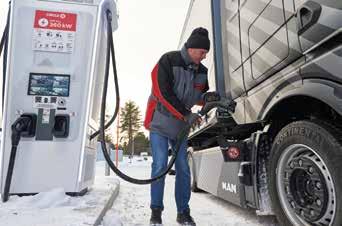
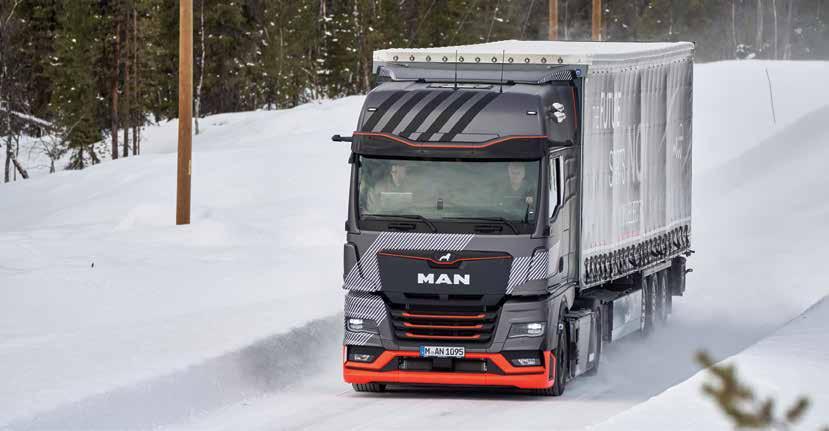
There has been much talk about electric vehicles and how they cope in freezing temperatures. Reports of reduced charging power, durability and range distance have all raised concerns. With these issues in mind, MAN Truck & Bus undertook a large scale four-month winter test programme with its eTruck in Northern Sweden. There, the MAN eTruck, which offers daily ranges of between 600 and 800 kilometres, proved that it also works without problems in ice, snow and temperatures as low as minus 40 degrees. Driving functions and range, air conditioning and charging behaviour were the focus of thousands of successful electric test kilometres under Arctic conditions. With over 28,000 working hours recorded and 10,500 kilometres run, 30 engineers were involved in the ‘stress-test’ project.
The Arctic Circle trial was just the beginning of a series of numerous vehicle and component tests that will put the new MAN eTruck through its paces until its market launch. Batteries have to prove their resistance to open fire, immersion in water and a free fall to the ground, individual components as well as the entire vehicle have to pass demanding crash tests, but also noise measurements and tests on electromagnetic compatibility are just some of the numerous upcoming validations that will make the truck ready for series production.
To ensure that the vehicle is in the best possible position for market launch, various tests and component validations are fixed components of the project
in addition to winter testing. “Every component is subjected to a stress test,” explained Carmen Theimert, who is responsible for electric component testing in the eMobility and Powertrain divisions at MAN.
“The winter tests were a complete success,” stated Dr Frederik Zohm, Executive Board Member for Research & Development at MAN Truck & Bus. “Our engineers literally put the new eTruck through its paces day and night under the toughest conditions. The maturity level is already extremely high and the development team is working with great passion on the further trials to provide our customers with an optimal product for the switch to CO2-free road freight transport.”
In addition, the new eTruck will cover many hundreds of thousands of kilometres in continuous operation on European roads. In addition to winter testing, this also includes so-called hot-land testing in the south of Spain with outside temperatures well above plus 40 degrees and strong sunlight, which heats components to an extreme and places very specific demands on the temperature control of the batteries, the charging management system and also the powertrain components, as Rainer Miksch, Vice President Vehicle Testing, MAN Truck & Bus, emphasised: “Meeting the sometimes extremely different
operating conditions with regard to the diverse applications of our customers is the fine art of commercial vehicle development. But now that the eTruck has more than fulfilled our expectations in winter testing, the entire test and development team is already looking forward to the upcoming validations and summer testing in order to get one step closer to large-scale production of the electric truck again.”
These demanding tests help to make the MAN eTruck as a viable CO2-free diesel replacement, ready for market launch in 2024.
“The eTruck is the tangible and visible part of MAN’s transformation. The CO2-free long-distance transport of refrigerated goods in the classic articulated truck combination will thus be just as possible as the collection of milk from the organic farmer with the electric food tanker or the low-noise and emission-free waste disposal in the city,” concluded Jens Hartmann, overall project manager for the MAN eTruck.
FLEETTRANSPORT | MAY 23
62 | POLAR TEST Text : Jarlath Sweeney - editor@fleet.ie
*MAN takes new eTruck to series production readiness with extensive road, load and safety tests in Arctic Circle
Opportunities to join the Truck & Trailer Works team
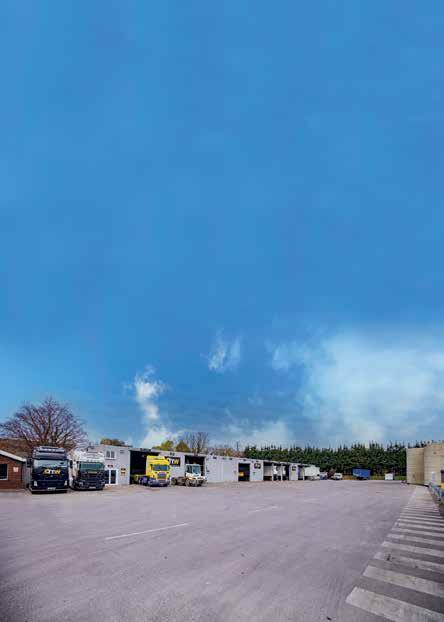

candidate will be to carry preventative and reactive maintenance on a fleet of vehicles. Working on a broad range of equipment, this fast paced environment is ideal for quick thinking team players with a problem solving approach and a “fix it before it breaks” approach to
KILLS AND E XPERIENCE
Experience repairing and working on trucks and trailers
Experience in preventative maintenance checks, servicing and vehicle inspections
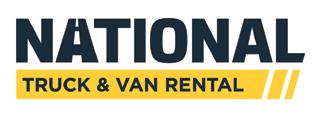
Knowledge of air braking, ABS, electrical, hydraulic systems
Excellent communication and team working skills
Attention to detail, seeking repairs completed to the highest standard.
The ideal candidate must have experience in the motor industry with a proven track record of high quality work. Salary is negotiable depending on the experience and skill level of the
Salary is negotiable depending on the experience and skill level of the candidate.
Job Type: Full-time
Salary: €20.00-€25.00 per hour
Benefits:
Bike to work scheme
Company events
Company pension
On-site parking
Schedule: 8-hour shift
Monday to Friday
08:00 – 16:30
20 days annual leave per annum
Supplemental pay types:
Bonus pay
Overtime pay
Swords Business Park, Swords, Co. Dublin K67 D2C5
Call +353 (0)1 840 6661 or email your cv to Management@ttw.ie
Check out our full service offering on www.ntvr.ie or call us on 01-8829500 SpeCialiStS in ContraCt Hire of CommerCial VeHiCleS. We Can tailor paCkageS from one Car Van to a fleet of refrigerated truCkS. Tailored solutions to keep your fleet moving Contract Hire I Rental I Refrigeration
Interested in a change? WE ARE HIRING! Join the team at Irelands fastest growing independent Truck & Trailer Workshop. Exceptional salary and bonus scheme along with state of the art facilities ….sure it would be rude not to…. Check out our vacancies on page 63
Ford Pro to the fore at The Belfry
Ford Pro, the commercial vehicle division of the Blue Oval brand was very much to the fore recently at The Belfry, one of Britain’s most famous golf courses, where six of its latest vans and pick ups were presented. The selection of shiny new vehicles included the all new Ranger and its sister performance pick-up, the Raptor, while guesting from the States was the electric version of the best selling F150 Lightning truck.

From the van side there was the fresh to market Transit Connect and a 5-tonne example of the flagship Transit along with the E-Transit, while the all new Courier was revealed later that evening. Along with the revised Transit Custom which now includes an electric variant, these products will all come under the Ford Pro banner, offering a holistic provision of product and services.
As explained by Mandy Dean, Director, Ford Commercial Vehicles UK & Ireland, Ford Pro covers every aspect of the customer experience, ranging from the initial supply of the correctly specified vehicles to connectivity software, charging infrastructure and finance.


“Ford Pro means Ford productivity, created and developed for business. With Ford’s Intelligence, a digital platform is established, which has already paid dividends for clients resulting in reduced downtime and operating cost savings,” she
said.
Mandy highlighted that to date there are over 141,000 connected Ford Pro commercials operating in the UK. She estimated that benefits from using Ford Pro have saved clients 147,000 downtime days, (equal to 402 years), equating to over £60 million.
In addition, Ford’s focus on electric mobility continues unabated. The company is ready and prepared to consult with interested customers looking to embark on the zero emissions road with tools such as E-switch Assist. “With legislation targets and mandates looming between now and 2035, Ford Pro has launched E-switch Assist: “A useful tool to analyse your EV readiness,” stated Mandy.
How does it work? It takes data from clients’ current operating vehicle and converts that information into an equivalent battery energy requirement. This in turn is measured against the capability of alternative electric vehicles. Mandy suggested that only a small portion of an operator’s fleet should make the transition to electric initially, to enable the company to see how it works and performs for the business before moving further forward. Of course, the correctly specified commercial is paramount, while other options within the whole package includes charging infrastructure, software updates, service and finance.
FLEETTRANSPORT | MAY 23
64 | FIRST
DRIVE
New Ford Ranger and Ranger Raptor
Interior of new Ford Ranger
‘The planned introduction of the E-Transit Custom and E-Transit Courier in due course will further extend Ford’s commercial line-up, covering small, medium and large size electrified van segments’
Powertrains offered include petrol and diesel 3.0-litre V6 engines, with the 2.0-litre Ford EcoBlue Bi-turbo diesel with 205 PS and 500 Nm of torque expected to be the major volume seller. By the way, the 3.0-litre V6 diesel pumps out 240 PS and 600Nm. In all, different six different off-road drive modes can be engaged, depending on the terrain.
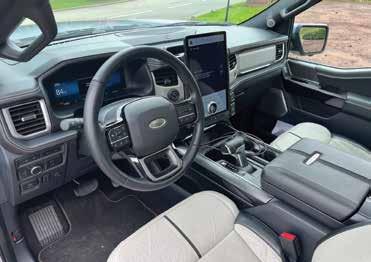


The first drive of the all new Ranger around the British Midlands impressed, the pick-up offering a smooth and sophisticated ride far removed from vehicles of this type in the past. Having had 15 months of knowledge of how the current model (in Sportrak guise) performs, I was expecting the new Ranger would be hard pressed to improve on that vehicle, but it does and extremely well at that. Taking it off-load on the extensive rough terrain test at Avalanche Adventures, the new Ranger Wildtrak 2.0-litre Bi-turbo surprised even the course instructors with its capability, especially on the road tyres, trundling away on the rutted and muddy surfaces.
On the return to base camp at The Belfry, F150 Lightning Platinum was waiting to be driven. This all-electric awesome beast generates 563 hp and 1,054 Nm of torque, while up to 400 km can be achieved from the battery pack. Surprisingly its big, wide and long body was manageable even in left hand drive. Rumour has it that certain countries in Europe will be able to market it due course.
Just before leaving the 4x4 course, we were treated to a surprise visitor, a 1978 Ford F150 Custom King cab pick-up ‘Farm
One of the big success stories for Ford has been the Ranger, commanding a 45% market share across Europe in 2022. This multi-award-winning one-tonne pick-up truck is going through its own transition period moving from current to new model. As presented by John Rowland, Ranger Product Specialist UK & Ireland, Ranger is a little wider, longer and has more ground clearance than its beloved predecessor. Sporting a bolder ‘Ford Tough’ look, akin to its US counterparts, many high-tech and high-spec features are included both outside and inside the vehicle. Clever and convenient elements include a rear side step, and the Flexi pack system (a rolling pillar frame in the load bed). Additionally a Europallet can now fit neatly between the wheel arches. Inside, the 12” portrait shaped touchscreen is the control centre, facilitating Ford SYNC 4 system, the four-wheel-drive traction controls, navigation, audio, connectivity, etc. The gear lever no longer protrudes and it’s now a third the size of the previous one.

www.fleet.ie FIRST DRIVE | 65
Ford F-150 Lightning
Ford F-150 Lightning
Ford F-150 Lightning Interior
1978 F-150
& Ranch Redneck Edition’ with John Deere stickers to boot!
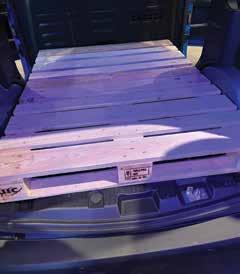
That twist of Americano was exchanged for German technology, as we switched to driving the new Transit Connect. Under the bonnet, cabin and load area, it is a Volkswagen Caddy, except for some Ford branding and facial restyling. As expected it drives precisely and efficiently. This version had a 1.5-litre EcoBlue diesel engine.
Finally, the recently extended Transit family has welcomed a new heavy lifter and shifter version, at 5-tonne GVW, with twin rear wheels. Although sales volumes will be small relative to its standard 3.5 tonne sibling, considerable take up can be expected from utilities, bus converters, municipals and the construction sector. Just as the large volume panel vans’ body
bigger all round than the current model and is future proofed, having petrol and diesel ICE engines, plus electric power.
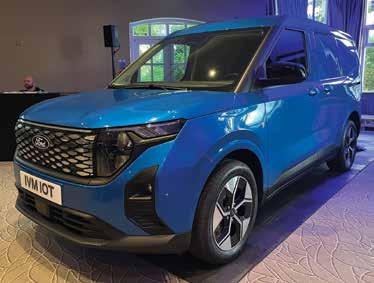

As noted, the Transit Connect is no longer a genuine Ford product, but the new Transit Courier will satisfy most of the current Ford Connect clientele. The fact that Volkswagen Commercial Vehicles does not have an electric Caddy in the pipeline as yet means that this transition to electric with the Courier will seem seamless for the customer.
was noticeable when driving, the speed limiter and tachograph fitted brings this Transit into the larger commercial field with a higher grade license required. Also present for driving was the Raptor II, but it was not driven on this occasion, as the report from the recent off-road drives in the UK appear in another part of this publication.

That evening Jon Buttress, Chief Programme Engineer, hosted the Western Europe reveal of Ford’s all new Courier compact van, fresh from its launch in Romania, where it’s made. It was a golden opportunity to get a proper perspective on its newly created design, styling and dimensions. As mentioned in the news section of this issue, the second generation Courier is
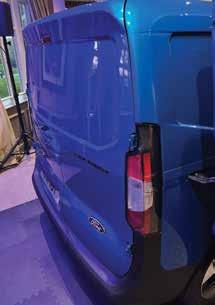
FLEETTRANSPORT | MAY 23
| NEWS 1
New Transit Connect
Next morning, the new Courier took pride of place in the packed Ford stand at the CV Show at the NEC, Birmingham.
66 | FIRST DRIVE
Text and Photos: Jarlath Sweeneyjarlath@fleet.ie
A 5-tonne Transit has joined the Ford LCV family at the top end. Version driven was the 500 ELWB L4 with 2.0 TDCI EcoBlue 170 PS RWD with 10-speed automatic gearbox.
New Transit Courier can accommodate 2 Euro Pallets






























r EVolution Full range of emission commercial vehicles now available Join the Harris Group T90EV eDELIVER 7 MIFA9 NAAS ROAD, DUBLIN 12, IRELAND, D12 VO65 +353 (01) 419 4500 | www.harrisgroup.ie
To follow on from an instant success in the marketplace can be sometimes difficult for auto manufacturers. Improving on the original Ford Ranger Raptor was a task undertaken by Ford’s global design and engineering teams with pleasure, and collectively they were most pleased with the outcome. The next generation Ford Ranger Raptor has been recreated, the new product evolved and enhanced from the original as the ‘Ultimate Performance Truck’. And it features even more hi-tech features and capabilities.
suspension featuring Fox 2.5” Live Value internal bypass shock absorbers, while the even more advanced new full time 4WD system includes electronically controlled on demand two speed transfer case and locking differentials.
Test Drive Report: Ford Ranger Raptor Gen II
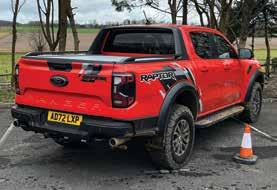

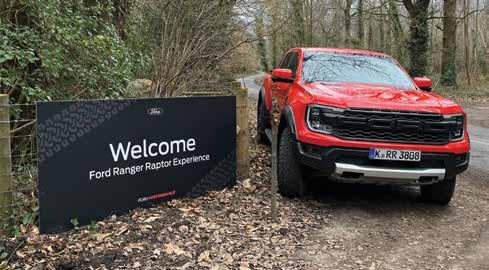
and high. There’s even cruise control for low speed off-road driving, whereby the driver can select the vehicle’s speed with the pick-up controlling acceleration and braking, allowing the driver to seek the best driving route.
Thanks to the good ground clearance (272mm) and underbody protection., and the dry conditions experienced on the test drive, only the mud/ruts and baja selectable drive modes were
New Raptor, which has just launched at dealerships, is based on the new Ranger, which is due out later this year. It comes with one big driveline change from the original. A Ford Performance developed 3.0-litre EcoBoost V6 twin-turbo petrol engine which boasts 292 PS and develops 491 Nm of torque is attracting attention, even more so with the electronically controlled active exhaust system that provides adjustable sounds with four exhaust modes to match different driving scenarios.
‘Raptor II features seven selectable drive modes including sport, slippery, rock, crawl and baja’
Supporting the strengthened chassis of this flagship model is a re-engineered
All these elements and more were demonstrated during an extensive off-road exercise near Arundel, South Downs, West Sussex, hosted by Ford UK. Following a scenic 90 minute road trip via Goodwood, the Raptor II was well warmed up for the tasks ahead on this unique occasion. Inside, the large touch screen dominates and is the control centre for most of the functionality. A selection of dedicated buttons allow access to all of Raptors off-road features, including the 360 degree camera with Split View display that assures front, rear and side visibility and comes with a zoom button. On the steering wheel are fingertip controls for the exhaust, suspension and steering modes as well as audio and cruise control buttons.
Purring along the narrow wooded tracks, the 3.0-litre V6 EcoBoost petrol engine works harmoniously with a no-lag 10-speed automatic. Next to the newly designed stubby gear lever is the rotary switch for 2+4-wheel drive modes - low
S PEC C HECK
tested. When engaged they help to ensure control is maintained via locking differentials and traction control. Even on high speed settings, the Raptor II never flinched. There is no compromise between ride and handling due to a batch of sensors monitoring driver and vehicle inputs up to 500 times a second.
With prices from €65,190, that represents a premium compared to the outgoing model Sadly, price increases are par for the course in the automotive industry at present. Nonetheless there is no doubt that with its new powerful engine, and enhanced engineering and styling, uptake on Raptor II will be keen.
Text and Photos: Jarlath Sweeney - jarlath@fleet.ie
Make/Model: Ford Ranger Raptor Generation II
Engine: 3.0-litre V6 EcoBoost twin-turbo petrol
Power/Torque: 292 PS/583 Nm
Kerb weight: 2454 kg
Towing capacity: 2,500 kg
Suspension: Fox 2.5” Live Shocks
Settings: Normal/Sport/Off-road
Brakes: Discs
Selectable Drive Modes: Normal/Sport/Slippery/Rock/Mud & Ruts/Sand/Baja
Active Valve Exhaust Modes: Quiet, Normal, Sport & Baja
FLEETTRANSPORT | MAY 23 | NEWS 1
68 | OFF-ROAD
Arctic Van Test 2023
Electric vs Diesel - Volkswagen ID.Buzz Cargo vs Toyota Proace
In this Arctic Test 2023, organised by Finnish magazine Autotekniikka ja kuljetus, the long running Nordic Winter trial focused on this occasion on comparing the operating costs of diesel and electric delivery vans. The one-on-one test between the Toyota Proace and the new Volkswagen ID. Buzz Cargo was undertaken by driving postal services delivery routes and comparing how diesel and electric vehicles operate on these runs.
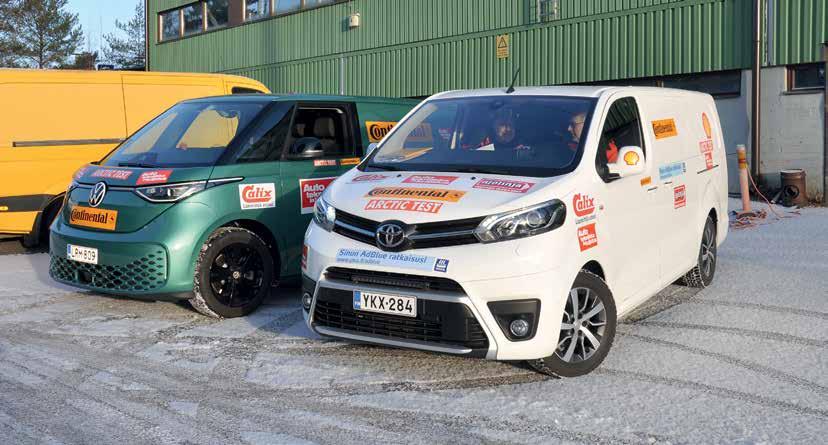
In addition, a general comparison was made of the vans’ comfort and functionality in distribution work, as well as looking their cabs and load areas. Some considerations were noted - among other things, that a euro pallet can just about fit through the rear doors of the VW ID.Buzz Cargo, but it is not possible to get it in through the side door. In the Toyota, loading the euro pallet though both rear and side access doors was possible, which makes it easier to load goods into the Proace with a forklift. More precise dimensions measured included the width of the side door, which in the Toyota extended to 93 cm and to 62 cm in the Volkswagen. In terms of interior comfort, VW took the win as it was quieter and quick and agile in its operation. Of course, almost daily charging reduces the convenience of use of the Volkswagen, while the Toyota was not refuelled during the entire exercise.

H OW SHALL WE g O?
Assessing the pros and cons of differing energy sources are high on the agenda when considering the purchase of a new zero emission vehicle. In
recent times more electric powered vans have entered the market from different brands, and from various continents. It was not long ago that an electric van’s range was just over 100 km, a handicap that ensured sales were limited to a small customer base. Now the situation is different. There are several brands of vans on the market with a range of more than 300 km.
W HAT DO I CHOOSE?
The Arctic Van test team decided to find out how the new VW Buzz Cargo and the Toyota Proace with a traditional diesel powertrain and automatic gearbox survive operating on a typical suburban distribution route. They drove Posti’s
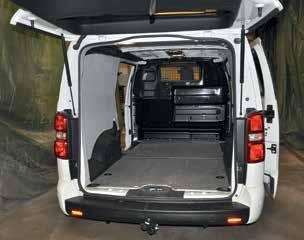
www.fleet.ie TEST | 69
The first day of the test was spent measuring vans.
Volkswagen’s load area is a bit more modest than Toyota’s. The test van also came with only one side door, though purchasers can specify two.
delivery routes in the Helsinki-VantaaKerava-Sipoo area with 300 kg of load on board. As an exception to Posti’s runs, the vans were kept loaded the whole time.
sized 235/55 R19 in front and 255/50 R19 in the rear. Both sets offered had good grip throughout the test, even though the tyres had to meet challenging conditions.
Other significant measurements were the vans load heights, recorded at 55 cm in the Toyota and 62 cm in the VW. The load length measured 258 cm in the Proace and 212 cm in the ID. Cargo. The load height was noted at 131 cm and 121 cm respectively. A 124 cm wide object could fit between the wheel arches in both vans. However, the VW’s slightly smaller dimensions can limit some load capacity.
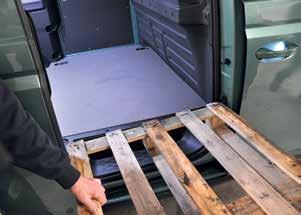
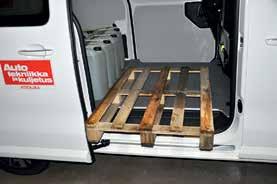

C IRCUMSTANCES HAVE AN EFFECT
The coldest temperatures were at night when the vans were parked outside, but during daylight hours, the weather was exceptionally mild for the time of year.
S ILENCE IS COMFORT
Sound isolation is at a fairly good level even in current diesels. The Toyota Proace was no exception in this area. However, the all-electric VW Buzz clearly stands out in terms of audible comfort. The decibel measurement did not directly tell the full truth, however. With only mild tyre noise emanating from the Volkswagen it is clearly a quieter and more comfortable van. Especially after a long day, the difference will be keenly felt and appreciated.
Both vans are easy to drive, while the co-drivers reported no major complaints either. In the VW Cargo though, the driver’s seat is positioned at a slightly straighter angle, so long journeys can begin to be felt in the glutes. In the Toyota, the passage through the cabin is somewhat limited by the bulge of protruding dash containing the gear lever, which is not present in the Volkswagen.
First thing that was noted was that the electric Buzz always needed charging at the end of the day, whereas the Toyota completed the entire test driving distance of more than 700 km without refuelling.
The test team also noted the the duo had slightly different tyres fitted. On
Inside, the cabin temperatures were kept at 20 degrees and the seat heaters were on. A little more power consumption was used with the audio entertainment. Along on the route, there were between 10 and 20 stops. With the outside temperature only a few degrees below zero, the cabins barely had time to cool down when leaving and entering during stops. Due to the warmer temperatures than usual, defrosting was also not required, because both the windshield and the side windows remained clear throughout the test.
Driver controls in both vehicles are modern and functional, although Toyota’s rotary gear selector takes some time to get used to. In the ID. Buzz Cargo, on the other hand, the small screen connected to the steering wheel received much praise. In terms of driving, the Volkswagen clearly accelerates more efficiently and turns around in a smaller space. As mentioned both vans carried 300 kilos of cargo, which was hardly noticed.
When switching from one to the other, the diesel’s sound is now undeniably a bit old-fashioned. But the technology is clean, as the advances made in reducing pollutants of any kind even in diesels is significant. Additional considerations were noted, for example, the fact that with the Toyota there is no suitable place to store one’s phone, while the infotainment system is starting to show its age. HUD, or Heads Up Display, was a plus factor however in Toyota’s cockpit.
COSTS IN BALANCE
When thinking about costs, consumption is only one factor. The assessing team calculated the energy costs based on the distance travelled. Extending this consumption over a period of five years gives the energy costs for the entire contract period. In addition, the team calculated the anticipated maintenance costs for 5 years and 150,000 km. Interestingly insurance cost for the electric vehicle would appear to be higher.
the Toyota were Nokian Hakkapeliitta studs sized 215/40 R17, while the VW had Continental’s Viking Contact 7s
Perhaps the most significant expenditure element comes from the capital side. The higher purchase price of an electric van can be found directly in the price lists, but it is more difficult to find out what the residual value is after five years. The best way to get an idea of this is to look at costs on a leasing basis. In this case, the capital costs of
FLEETTRANSPORT | MAY 23 | NEWS 1
70 | TEST
Euro pallet fits into the rear door of the VW snugly.
The pallet goes easy also from the side door, both from above and below.
Loading pallets into the BUZZ is not possible from the side door.
the period of use become comparable and the risk of the residual value after the contract period remains with the financier. A significant - and also the most difficult to estimate - expense item over a five-year period is for batteries. What condition will the batteries be in after five years and what is their replacement cost?
E LECTRONIC ENTITY
With one exception, electric vans on sale are mostly based on the structures of the internal combustion engine variants. The exception is the VW Buzz concept collection. It comes in both a passenger version and the Buzz Cargo intended for transporting goods only. 150 kW of power and 310 Nm of torque offer an efficient package for moving loads. Buzz Cargo facilities a payload of 648 kg, which falls short of the traditional one-tonne category, but is enough for quite a lot of operations.
The usability of an electric powered van is increased not only by sufficient battery size, but also by the ability to charge it. Here Buzz Cargo hits the mark with good numbers. AC charging is the familiar 11 kW, where 0-100% is reached in 7.30 hours, so for example during the night. But DC charging can done at speeds of up to 170 kW. In this case, 5% to 100% is achieved during a 30-minute coffee break. However, Volkswagen has not yet released pre-heating for the battery, which greatly slows down the charging rate in cold weather.
The mail delivery route went very well with both vans, and the postal worker who has to get out of the vehicle and climb back in a lot would find either
of them easy to access. Getting into the Buzz Cargo’s driver’s seat has been considered with a suitable seat height, steps and grab handles. The load area in both vans are of a good size - a little bigger in the Toyota, but so too is the whole vehicle. In addition, the Toyota boasts a sliding load area door on both sides. The lighting in the rear section is good, maybe even a little brighter in the VW. With regard to load security the Toyota had 8 sturdy mounting hooks and the Volkswagen had 10.
Based on the rating forms filled out by the testers, the points were pretty equally divided between the two: 610 points for the Toyota Proace and 628 for the Volkswagen ID.Buzz Cargo. In other words, in terms of general comfort, functionality in distribution work, drivability, as well as their cargo spaces and control devices, the vans were evenly matched, even though VW collected a slightly larger number of points.
M OTIVE
Various alternative fuel sources are available for commercial vehicles. The increase in fuel prices has had its own effect on this. Several brands of vans are already available with electric drive, some with natural gas and others with petrol-electric hybrid powertrains.
The electric motor is also slowly becoming more common as a power source but the purchase price of the emissions free van is still significantly more expensive than the diesel version, while its resale value is still largely an unknown. Generally speaking and
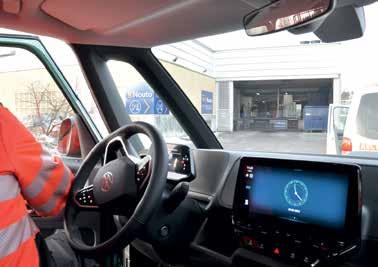
comparing to diesel vans, the range on one charge is short. Also, the large total weight of the batteries reduce the carrying capacity. The limitations of efficient fast charging facilities prohibit long-distance driving performance, though recently more manufacturers have invested in fast power charging.
Heating consumes batteries. Defrosting the windshield also requires high powered hot air blowing, which consumes energy and electricity. Auxiliary equipment, such as cargo box heating, rear tail-lifts, and additional lights consume their own share of battery power.
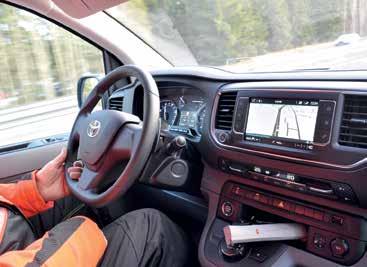
Maintenance is cheaper with an electric van. This is especially true when it is originally built as an electric vehicle. But in general, electric commercial vehicles on the market are mainly built on a combustion engine design and manufacturing basis. In this case, a significant part of the maintenance items are the same as in the diesel version. Savings in maintenance can only be achieved with the electric motor itself.
The expensive purchase price usually leads potential customers towards a leasing solution, in which case the hardto-predict residual value remains the seller’s risk. The prices of electric vans are slowly coming closer to the prices of the combustion engine versions which will help to determine the residual value after first life.
www.fleet.ie TEST | 71
Text: Juho Kauranen, Matti Aarnio, Kai Kniivilä Photos: Juho Kauranen, Tero Räsänen
Pit stop at the K-Kauppa pickup point. It was good to check that the cargo was fastened from time to time if they started to move.
In Toyota, the driver can easily find an ergonomic driving position. In the Proace, the controls for the radio and cruise control are behind the steering wheel. The gear shift paddles on the steering wheel made it convenient to apply engine braking in suitable situations. The interior temperature of both vans was set to the same 20 C to equalise energy consumption.
Free-driving on the Freeway with the Freightliner Cascadia
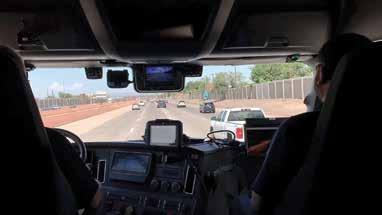
Daimler Truck plans to introduce series-production driverless trucks in the United States by 2030. International Truck of the Year Award (IToY) jury President Gianenrico Griffini got a taste of things to come when he hopped aboard a Freightliner Cascadia autonomous truck on the highways around Albuquerque (New Mexico), USA.
We don’t have to wait years to see self-driving trucks on public roads. They are already a reality in the United States, with some prototypes based on the Freightliner Cascadia platform. Built by Daimler Truck North America, the Class 8 (tractor-unit) long-haul trucks, equipped with Level 4 automated driving systems, are undergoing field tests in
actual operating conditions on Interstates around Albuquerque, New Mexico. Albuquerque is the headquarters of Torc Robotics, a company acquired by Daimler Truck in 2019. Torc develops the software, integrates, and fuses the inputs from different sensors, such as cameras, lasers, radars, and lidars, to allow safe automatic driving on high-traffic density highways. A lidar is a device that measures the distance from an object by a laser beam and returns high-resolution three-dimensional information on the surrounding environment.
O N THE HI g HWAY AT 65 MPH
The validation tests do not occur in confined areas but on multi-lane highways with a standard tractor-semi-trailer combination of 80,000 pounds (about 36 tonnes GVW) at the maximum cruising speed allowed in the States of 65 miles per hour (just under 105
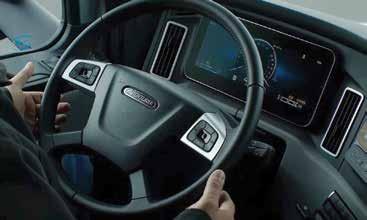
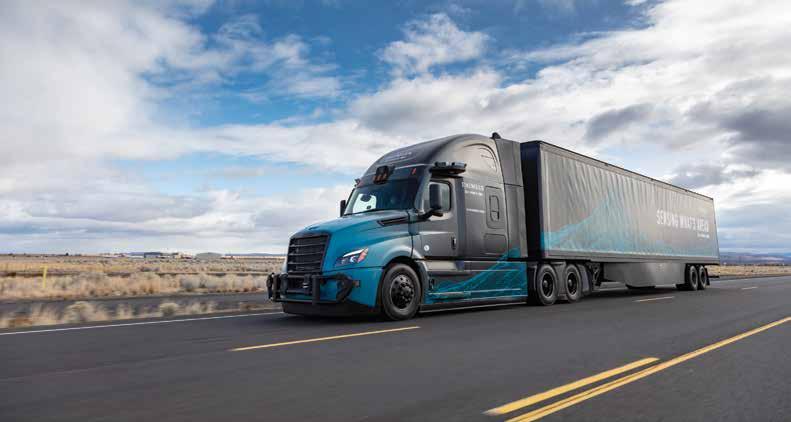
kilometres per hour). For safety reasons, during road tests, a human safety driver, assisted by a Torc Robotics engineer, is always ready to take complete control of the articulated truck and trailer combination if a risky situation arises. The safety driver also has a crucial role in providing the software specialists with the feedback to program the onboard computer according to a prudent, safe, and fuel-conscious driving style, without hard braking and harsh accelerations.
W HY IN THE U NITED S TATES?
Daimler Truck’s decision to develop autonomous driving solutions first in the United States depends on multiple factors. Firstly, the ‘States has the most branched and extensive motorway network globally, and the speed difference between trucks and cars is not as high as in the EU. In addition, US highways represent a more structured environment than an urban situation. There are lanes headed in the same direction, and it’s easier to predict where
FLEETTRANSPORT | MAY 23
72 | PROTOTYPE
cars are supposed to be going. In this environment, the Freightliner Cascadia can handle most traffic situations including lane mergers, merging into traffic from a ramp, changing lanes, and slowing down or speeding up. The US legislative framework is also favourable since the only counterpart of the truck manufacturers is the US Department of Transportation (DoT), which is proactive in facilitating the introduction of technical innovations.
Furthermore, self-driving eighteen-wheelers respond to clear business cases and market needs, such as a continuous increase in freight demand transported by road (a 30% increase is expected by 2030) and a growing shortage of heavy vehicle drivers. According to the American Trucking Association estimates, unfilled driver jobs slid to nearly 78,000 units in 2022, down about 4% from more than 81,000 in 2021. It’s still a considerable number that is bound to skyrocket – according to ATA forecast - to more than 160,000 units in 2031. This shortage is due, among other reasons, to a significant number of retirements and the industry’s failure to recruit more women, who account for 8% of the overall workforce. In developing autonomous driving solutions for the ‘States, Daimler Truck has focused on a specific business case: connecting one logistics centre to another (hub-to-hub mission) along a motorway. When the truck arrives at the destination hub, a professional truck driver takes it to the final unloading point.
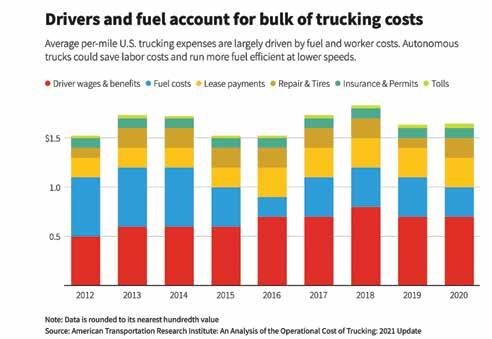
In March 2022, Torc Robotics created a special advisory board –TAAC, Torc Autonomous Advisory Council - with leading companies in the sector, such as Schneider, Covenant Logistics, Penske Truck Leasing, and Ryder System, to foster collaboration

and better understand the challenges faced by logistic companies. The TAAC comprises key freight industry players who will provide strategic guidance to Torc as it integrates with the freight network and tackles challenges beyond highway driving. The goal is to introduce Level 4 series vehicles by 2030. The platform used to develop autonomous driving solutions is the Freightliner Cascadia. With an annual sales volume of around 85,000-100,000 units in a normal market situation, it’s the best-selling Class 8 tractor in North America.
In 2022, Freightliner had a market share of 42% in the heavy-duty segment, which reached a full-year total sale volume of more than 254,000 vehicles (compared with about 222,000 units in 2021). For safety reasons, the experimental Cascadia has many redundant (and independent) systems for the foundation brakes, steering actuation, vehicle data transmission network (CAN-Bus), and parking brake. The primary and secondary Electronic
Braking System (EBS) Controllers, in particular, offer precise and reliable controls to decelerate the truck and the trailer. Should the primary EBS encounter any critical faults, the secondary EBS will take over to execute a safety procedure called Minimal Risk Manoeuvre (MRM). Two servo motors electronically assist the steering gear. Should any one of the servo motor experience a fault, the second unit entirely takes over to provide the required steering commands to execute the MRM procedure. Finally, anti-hacker protection (Cyber security), which is of paramount importance in developing autonomous driving solutions, has been fully addressed by Torc engineers. Although Daimler Truck North America did not disclose any figures about autonomous driving vehicle sales forecast, it expects that
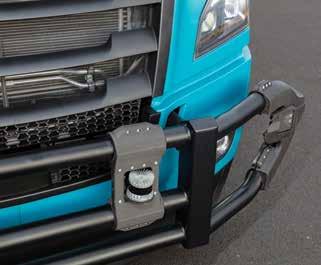
www.fleet.ie PROTOTYPE | 73
self-driving vehicles will manage 6% of freight volume by the end of this decade.
Text: Gianenrico Griffini









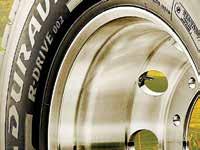



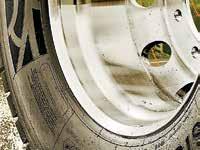
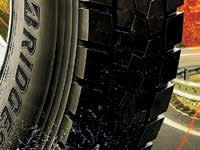










 Edited by Cathal Doyle - cathal@fleet.ie
Edited by Cathal Doyle - cathal@fleet.ie
EGM to close ALD acquisition of LeasePlan postponed to May
A scheduled Extraordinary General Meeting (EGM) of ALD to close its acquisition of LeasePlan has been postponed from 28 April to 22 May 2023. The deferment is because the company is awaiting final agreement from the European Commission for the sale of subsidiaries in six markets including Ireland.
French company ALD agreed to buy LeasePlan for €4.9 billion in January 2022, with the new leasing company to be known as NewALD. In November, EU

antitrust regulators cleared ALD’s bid for LeasePlan subject to the new entity agreeing to divest some businesses across Europe to address competition concerns.
ALD’s subsidiaries in Ireland, Portugal and Norway, and LeasePlan’s subsidiaries in Luxembourg, Finland and the Czech Republic are to be sold to Credit Agricole Consumer Finance and automotive manufacturer, the Stellantis Group. The combined fleet of these six entities represented approximately 100,000 vehicles or 3% of the total combined fleet of ALD and LeasePlan as at 31

December 2022.
ALD Automotive is the fleet management arm of French Bank Société Générale. It purchased what was Merrion Fleet Management in 2017, at the time the second largest leasing and fleet management company in Ireland. It currently has 9,000 vehicles under management. LeasePlan manages in excess of 21,500 vehicles in Ireland.

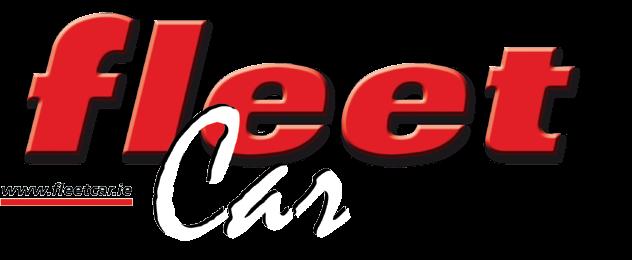
EV Charge Points installed at 13 hotel locations by ePower

Plaza Hotel Tallaght, Tallaght Cross Hotel, Mount Wolseley Hotel, Park
90 new electric vehicle charge points are being installed at 13 hotel locations throughout Ireland by hotel operators, Windward Management. The charging infrastructure was installed by ePower who supply, install, support and manage electric vehicle chargers throughout Ireland.
EV charging stations are now available at the following 11 hotels:
Connemara Coast Hotel, McWilliam Park Hotel, The Radisson Blu Dublin Airport,
Inn Shannon Airport, Aghadoe Heights, Cavan Crystal Hotel, Farnham Estate, and Harvey’s Point. Facilities at two additional hotels, The Fitzwilton Hotel and The Anner Hotel, are due to go live shortly.
The 22kW AC electric vehicle charge points are visible on several EV charging apps such as Plugsurfing, the ePower app and on the internationally used app, PlugShare.
Group General Manager at Windward Management Charlie Sheil believes
it’s a good investment for the future: “We are delighted to offer ePower Car Charging Facilities across our portfolio of hotels, feedback from customers has been fantastic so far and we are looking forward to expanding the facilities in line with our sustainability initiatives”.
Executive Director of ePower Hugh Hall says he’s delighted to be partnering with Windward: “The ePower team was pleased to install EV chargers for the Windward Managed hotels as they work to improve their approach to sustainability. As well as installing the equipment, we’re looking forward to growing our partnership as we manage and maintain the chargers at these Windward properties in the future”.
www.fleet.ie Volume 21 No. 3 May 2023 www.fleetcar.ie IRELAND’S FOREMOST FLEET & CORPORATE SECTOR GUIDE
Over one hundred years ago, Aloha Wanderwell became the first woman to drive around the world on an epic journey that took her through 43 countries. Partially sponsored by Ford Motor Company, she set the record in a Ford Model T between 1922 and 1927. Now, as Ford accelerates in its mission to lead the electric vehicle revolution, the company has joined forces with travel adventure influencer Lexie Alford – known to millions online as Lexie Limitless – to continue Wanderwell’s legacy of redefining exploration with an ambitious roundthe-world journey in the new all-electric Ford Explorer.
Beginning later this year, Lexie will lead an expedition around the globe, overcoming challenges, meeting people from many cultures, and visiting places of outstanding beauty, all supported by the zero-tailpipe emission Ford Explorer.
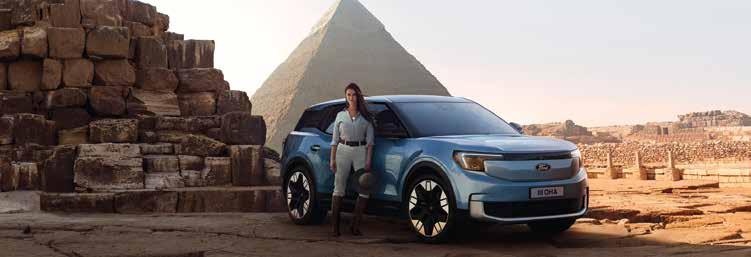
“We’re excited to see what our new all-electric Explorer and Lexie Alford can do together on this expedition – inspired by Aloha Wanderwell’s ground-breaking trip,” said Martin Sander, General Manager, Ford Model e, Europe at the launch event in London. “We were a part of Aloha’s journey all those years ago
Limitless! Ford teams up with Lexie Alford on historic journey round the world in all-new electric Explorer
and have been helping people take on ambitious adventures ever since – we can’t wait to see how our electric future will keep that rebellious spirit going.”
Lexie broke the world record by becoming the youngest person to visit every country in the world by 21 years old. She now continues to explore the planet, showcasing the wonders of the world, while encouraging others to do the same. Lexie leads the way for a new breed of explorers with an uncompromising curiosity and driven by the same rebellious attitude as Wanderwell.
Just as Ford supported Ms. Wanderwell in the 1920s, the automaker is collaborating with Lexie Alford on this 21st century journey to celebrate the modern-day explorer with a passion for sustainable travel, and also to showcase what is truly possible in an electric vehicle.
“Aloha Wanderwell’s story is particularly inspiring for female travellers, but it truly encourages everyone to push their limits and explore new places,” said Lexie Alford. “I am excited to follow in the tyre tracks of this legendary trailblazer, while showing what the electric future of overland travel can look like. There’s going to be many obstacles and
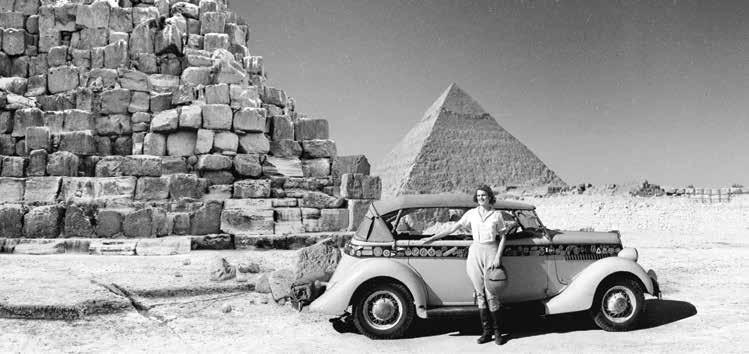
challenges, but that’s part of the fun of travel and I’m going to be documenting it all online!”
The futuristic new Explorer combines German engineering with striking American style, and is packed with smart technology and clever ideas to help drivers and passengers stay connected and comfortable on their own adventures. Features includes a supersized movable touchscreen that can also conceal a secret locker; generous storage up front; and wireless connectivity with smartphones. All this comes together with electric powertrains that can charge from 10 to 80 per cent in just 25 minutes.
Aloha Wanderwell was an explorer, a filmmaker, a wife, and a mother. She began her journey around the world at age sixteen, and visited places that no western man or woman had ever seen before. Ms. Wanderwell’s daring voyage began in Nice, France, and she would eventually sail homeward from Kilindini Harbour, Mombasa. Throughout the journey she had to adapt to challenging circumstances; kerosene replaced gasoline, and crushed bananas were used as grease for moving vehicle parts.
FLEETCAR | MAY 23
76 | NEWS II
David Savage is Vice President, UK & Ireland for Geotab, the leading IoT and connected vehicles provider. At the official opening of the company’s Innovation Hub in High Wycombe in the UK (see story on page 60) we caught up with him about Geotab’s plans for Ireland, competing against OEMS, and how data can help in the transition to an electric fleet.
geotab is a global player operating in over 100 countries but what are your plans for the Irish market?

Ireland is an important market for us. Our vision from a UK and Ireland business perspective is to be the number one telematics player in both of those markets. However we’ve only really launched into the market this year - we have had an aborted start because of Covid. So last year was about laying the foundation and building the brand awareness, identifying where we can add values in the market. We see sustainability in fleet electrification as being one of those key areas. We now have someone on the ground in the Irish market who has the experience but also knows the market very well. The feedback he has been able to give us on the technology, product and marketing sides, and the relationship side of it has been invaluable.
What’s your approach to getting new business?
We operate an indirect sales model. We don’t sell direct to end users, rather we have partners who sit in the middle to contract fulfil. We have a very strong partner network across the UK and Ireland. I would typically dissect those partners into two verticals - the ones we
One-to-one with David Savage, Geotab
would call our strategic partners, who are blue chip household brands, for example the likes of Renault and Mercedes-Benz. Then we have our value added resellers who are typically smaller businesses selling into smaller sized opportunities, again relationship led.
How do you compete against OEMs who offer their own telematics solutions?
You’re correct that OEMs are trying to monetise their own data. We work with probably a majority of the OEMs within the European market. And yes, there was reticence from them a few years ago to really work with a third party telematics company. But customer needs have driven greater collaboration between OEMs and ourselves. The key driver behind that has been the data. So typically our device will plug in to a vehicle’s OBD2 port and provide very rich data (obviously with EVs there is no OBD2 port so it’s a different set-up). That’s not data that the OEMs necessarily can access or can share at the moment.
So I think on the OEM side of it, it is improving, but if you’re a fleet manager sat in your office anywhere in the world, you want a single pane of glass. You want that single view of all the different makes and models you might have, from your light commercial vehicles to your pool cars to your trucks. And if you were to do it on an OEM level, if you’ve got three or four OEMs you work with, you need three or four different platforms. So you cannot work like for like. That’s where we see ourselves now, and becoming more integral in the future - as being the platform for all of that data to come in to to provide the fleet manager with that single pane of glass.
Have the attitudes of fleet managers changed in recent years in relation to telematics?
I think it’s evolved greatly. There’s
been a real shift to digitalisation over the last half a decade or even before that. What we’ve done at Geotab is really show the value that the insights from data can derive for a company to address whatever their challenges may be, whether sustainability, reducing carbon footprints, tailpipe emissions, driver safety efficiency, etc.
How can telematics help fleets looking to move to electric vehicles?
The view of Geotab is that you cannot transition [from an ICE fleet to electric] without telematics data. What telematics data does is really help inform where you are. The extraction of data can help you understand usage patterns from your current vehicles, the current range they are doing, the impact of weather, etc. By looking at some of those key requirements we have a tool called the Electric Vehicle Suitability Assessment. That can take the data from those internal combustion vehicles and do a benchmarking exercise with electric vehicles that exist in the market to allow a fleet manger or company to say ’I can transition x vehicles to electric vehicles on a like-for-like basis.
And then, once those vehicle have transitioned, the data points change when you are looking at electric vehicles. So if you’re a fleet manager you’re going to be looking at what’s the current state of charge, if that vehicle is going to be able to complete its scheduled delivery pattern for the day. You also want to be looking at the driver inputs and how they impact on the range.
I think transition is an important word when you are looking at the move towards electrification. You can’t make knee-jerk decisions. It has to be a phased approach. You have to accept that maybe there’s not going to be an electric vehicle that’s going to do what you need it to do just now. Don’t be rushed into a transition would be my advice to a fleet manager. Telematics data is really going to help you mitigate the risk in decision making but if the data is telling you that a transition plan should take five years, don’t try and rush it in three years. because the cost could be prohibitive. So trust the data.
With Cathal Doyle - cathal@fleet.ie
www.fleet.ie INTERVIEW | 77
Renault hits the mark with all-electric Megane E-Tech
This is quite a brave step by Renault. As quickly as we’re moving to a world of electric motoring, most manufacturers are continuing to hedge their bets by either offering petrol and/or diesel versions of their mainstream models alongside electric versions of the same car, or introducing separate electric models while continuing to offer equivalent ICE engined products.
Renault, though, has bitten the bullet with the latest generation Megane, dropping all ICE engined versions and instead putting all its eggs into the basket that is the all-electric Megane E-Tech. Whether that’s a step too far too soon will probably only be known once current supply chain issues are a thing of the past, though Renault will point to other models in its line-up such as the Arkana for those erstwhile Megane customers unwilling for now to go full-electric.
S TYLIN g
Now in its fifth generation, there have been previous iterations of Renault’s mid-sized family car that have had distinctive appearances, notably the Megane II of 2002 with its vertical rear window. This new model though certainly scores well in the style stakes, with a hint of SUV robustness about it, but lower and sleeker. Features like the flush door handles and strong LED light signatures give it a distinctive visual identity.
I NTERIOR
Renault interiors would rarely be reviewed using the word ‘plush’ but the new Megane’s cabin is a definite step up from recent efforts from the brand, using a mixture of cloth like materials and good quality plastics. The view in front is dominated by two big screens that meld into one. The smaller one controls the multimedia functions while the main screen in front of the driver has clearly laid out information. A Multi-Sense
button on the steering wheel allows you to easily switch between driving modes.

Legroom in the back is adequate rather than palatial, but headroom is more generous than you might expect. There are lots of handy storage areas including an easily accessed wireless charging dock for your phone. The boot has quite a large lip to surmount but is deep with plenty of storage space.
B
ATTERY, R AN g E AND C HAR g IN g
The Megane E-Tech is offered in Ireland with two battery options - a 40kWh version (EV40) and the EV60 model tested here featuring a 60kWh battery. It comes with a 220 hp motor and 300Nm of torque (the smaller battery model is matched to a 130hp / 250Nm motor).
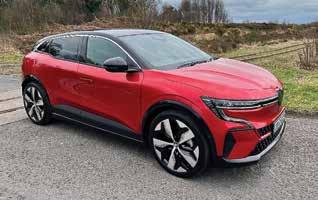
Stated range figures based on the WLTP cycle are 300km and 450km respectively, though in practice we didn’t see a range capability beyond 300km during a week with the EV60. In mitigation the weather was cold so a better figure is likely in more clement conditions.
Where the Megane E-Tech scores over many rivals is in its charging capabilities. While it can accept DC charging at speeds of up to 130kW, it can also charge at AC speeds of up to 22kW. Most rivals only offer up to 11kW AC charging as standard. With the relative proliferation of 22kW AC public charging stations compared to DC units, this gives the Renault much more flexibility when having to charge away from home.
A week driving the Megane E-Tech returned an average consumption figure of 19.5 kWh/100km over a mix of urban, rural and motorway driving. Low 18s were recorded on some journeys, making this one of the most efficient EVs we have tested to date.
R IDE AND H ANDLIN g
With 220hp on tap, there’s no problem making rapid progress in the Megane E-Tech, though happily power is delivered in a linear manner unlike some EVs which can catch drivers unaware with their acceleration at low speeds. While there’s a little rigidity in the chassis on bumpy surface courtesy of the floor mounted batteries, it’s not a signifiant issue. Equally the Megane, which comes with multi-link suspension, handles and grips very nicely with more driver feedback than found in many crossover SUVs. A car you might actually enjoy driving!
P RICES
Pricing starts at €37,495 for EV40 versions featuring a 40kWh battery, and at €41,995 for EV60 versions featuring a 60kWh battery.
V ERDICT:
Renault should have a winner with the new Megane E-Tech. Reasonably priced (for an EV) with respectable range and flexible charging solutions, it’s good to drive and stylish to boot. What’s not to like!
FLEETCAR | MAY 23 | NEWS 1
Text: Cathal Doyle, Photos: Jarlath Sweeney
78 | TEST I SPEC CHECK - R ENAULT M E g ANE E-Tech EV60 Price as tested €46,345 (inc govt grants) Drivetrain Front wheel drive, 1 speed automatic Electric Motor Output 220 bhp Torque 300 Nm Battery Useable capacity 60 kWh Charging speed capabilities Up to 130kW DC, 22kW AC Maximum quoted range (WLTP) 450 km Quoted energy consumption 16.1 kWh/100km Towing capacity 900 kg braked
Nissan X-Trail E-Power - a hybrid with a difference!
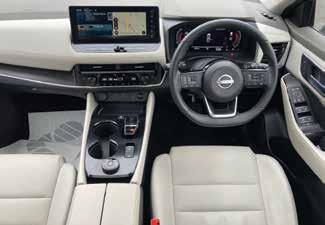
A new fourth generation of Nissan’s large family sized SUV has gone on sale. It boasts one significant difference to its predecessors….diesel versions have been dropped, while the X-Trail now comes with hybrid power.
Unlike the outgoing model which looked like a slightly larger Qashqai, the new X-Trail has a much strong visual identity. Wider and taller than before, it boasts stronger lines and strong shoulders giving it an assertive and distinctive identity. It’s one of the better looking SUVs on sale at present.

Nissan’s hybrid power is different to the normal technology seen in these kind of vehicles. Whereas normally an electric motor provides assistance to the internal combustion engine to power the wheels, Nissan’s system, which it calls ePower, uses the petrol engine - in this case a turbocharged 1.5-litre petrol unit - to provide charge to the electric motor (or motors depending on whether it is a two or four wheel drive model). Crucially though, it’s the electric motor that provides power to the wheels at all times, even when the petrol engine is running.
The main benefit of this system is that it brings the refined driving characteristics associated with pure electric vehicles such as a seamless gearshift via a 1-speed reduction gear, and the option of using E-Pedal - Nissan’s regenerative braking system that allows you to largely control the vehicle without recourse to the brake pedal.
The downside is that while it may drive like an EV, it won’t be a stranger to the petrol forecourts. On the fuel consumption front we averaged 7.0 l/100km (40.3mpg) after a week of largely gentle driving. That’s by no means disastrous but is arguably worse than you would expect from a conventional hybrid system. Official emissions are 148
g/km putting it into tax band 10 at €270 per annum (Band 9 for the front wheel drive only model).
Don’t expect either to spend too much time driving on electric power as we found the petrol engine is active most of the time. It’s pretty unobtrusive though, and because it is there as a generator, you only will really notice it if you are pressing on and the engine needs to work harder to generate sufficient energy.
The X-Trail rides bumpy surfaces well and performance is more than adequate with a 0-100km/h time of 7.2 seconds. It’s not necessarily a car you will want to push on in too much, but having that power available just in case is reassuring. Driving modes of Sport, Eco, Standard, Snow and Off-Road give extra options to meet specific driving demands.
Powertrain aside, there’s quite a lot to like about the new X-Trail, not least its upmarket feel, at least in the range-topping 7-seater model in SVE trim tested here. In this specification the X-Trail can stand shoulder to shoulder with rivals from more prestigious brands. Soft touch materials and an ergonomic layout give the cabin a premium ambiance and make the cabin a pleasant place in which to spend time. We found the seats
comfortable as well on longer journeys. The rear seats slide forward and back by generous amounts giving extra flexibility depending on whether you need extra space in the back for luggage, or to accommodate passengers in the third row of seats. On that point, Nissan is presently offering the X-Trail ePower in either front wheel drive with five seats, or as a 4WD seven seater. However there is a significant jump in price of circa €10k if you need those extra two seats, while it should be noted that, like many SUV seven seaters of this type, those third row seats are really only suitable for smaller children.
V ERDICT:
This latest X-Trail brings fresh life to Nissan’s large family SUV, with a style and finish that compares favourably to premium level rivals. Kudos too to Nissan for coming up with a different approach to hybrid technology, one that offers EV-like driving refinement with instant linear acceleration, though fuel economy is a little on the disappointing side. While the option of seven seats is useful, it does add significantly to the price, so for most buyers we feel the front wheel drive five seater will make most sense.
Text & Photos: Cathal Doyle - cathal@fleet.ie
Price as tested €66,245
Price range for X-Trail €49,495 - €66,245
Drivetrain
Four wheel drive, 1 speed automatic. Dual electric motors - one on each axle
Petrol motor generator 1.5-litre 3-cylinder turbo with a variable compression ratio
Electric motors power output 210 bhp 0-100km/h 7.2 seconds
Stated fuel economy (WLTP) 6.6 l/100km (42.8 mpg)
CO2 Emissions 148g/km
www.fleet.ie TEST II | 79
S PEC C HECK - N ISSAN X-T RAIL E P OWER SVE 7 S EATER 4WD
Now under Stellantis Group ownership, as well as part of the burgeoning Gowan Group distributors in Ireland, there are genuine reasons to hope for a revival in the fortunes of the Alfa Romeo brand. Ultimately that will come down to the quality of product and the strength of the dealer network, Currently Alfa operates three
Alfa Romeo makes a fresh start with new Tonale
dealerships in Dublin, Cork and Waterford, but has plans to significantly expand that in the next couple of years.
Available in mild hybrid and plug-in hybrid variants, the mid-sized crossover Tonale is the first Alfa to come with electrification, but it won’t be the last - by 2027 the company plans to be an electric-only brand. The 48 Volt mild hybrid MHEV uses a 1.5 petrol with variable geometry turbo that develops 160hp and has 115 g/km of CO2 emissions. Opt for
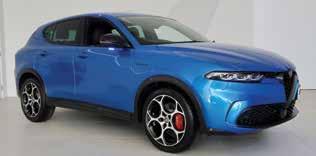
BYD enters Irish market with ATTO 3 SUV
Best known for its electric buses which are in operation in numerous cities around Europe, Chinese corporation BYD (Build Your Dreams), a leading leading manufacturer of new energy vehicles and power batteries has now launched in Irish market with the arrival of the all-new, all-electric BYD ATTO 3 C-segment SUV.
Created by former Audi Group head designer, Wolfgang Egger, this new BYD ATTO 3 is styled with European customers in mind and comes equipped with exceptionally high levels of standard equipment, including a Panoramic Sunroof, BYD’s attention to detail can be seen throughout, extending to its unique interior to give the ATTO 3 an added dimension of youthful flair and
personality.
The ATTO 3 range consists of ‘Comfort’ and ‘Design’ trim levels to be followed by an ‘Active’ model variant – all part of the Phase One scheduling of BYD’s launch into the Irish market. Taking account of its high level of standard specification, its many innovative features, and its extensive range of high-tech elements, the ATTO 3 is introduced at what its distributor says is ‘an appealingly-competitive price level’ beginning from €37,128. GPS Navigation features as standard. A focal feature is its unique 12.8 inch rotatable touchscreen (15.6 inch on Design versions) with voice recognition delivering an abundance of connected experiences and integrated
the plug-in hybrid (PHEV Q4) and you get all wheel drive, a total power output of 280hp from a 1.3 Multijet petrol engine and 90kW electric motor, and a promised range of up to 60km on electric only power. Official emissions are 29 g/km. There are two standard trims - TI and Veloce, as well as an exclusive Edizione Speciale spec available with the PHEV only. Prices for the MHEV start from €49,995, while those for the PHEV are from €53,495.

Volkswagen has unveiled the latest model in its all-electric family - the ID.7. Set to arrive in Ireland by the end of the year in time for the 241 registration plate, it’s a traditional styled saloon unlike the more upright SUV styled ID 3,4 & 5 models.
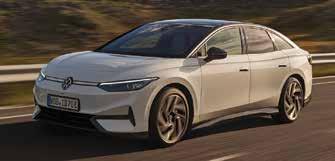
That lower styling gives the ID.7 an impressively low Cd rating of just 0.23, which combined with Volkswagen’s
Apps.
BYD ATTO 3 promises a (WLTP combined) electric range of 420km, with energy consumption as low as 16.3kWh/100km or less. It will initially be available through dealerships in Dublin and Cork – BYD North Dublin, Navan Road; BYD South Dublin, Deansgrange and BYD Cork Eastgate Business Park, Little Island. Additional sales dealerships to be announced shortly.
Jarlath Sweeney
Volkswagen expands electric product offerings with ID.7
biggest battery to date - an 86kWh unit that combined with the slippery shape of the low slung car, promises a range of up to 700km. That battery can also accept fast charging at speeds of up to 200kW and comes with a new electric motor developing 286hp that powers the rear wheels. The familiar 77kWh battery seen in current ID models will also be available, with Volkswagen saying it will deliver a range of up to 613km.
The ID.7 features a new operating
and display system that includes a 38-centimetre infotainment system screen with a now thankfully back-lit touch slider, and an augmented reality head-up display. There’s a more intuitive voice control system a new air conditioning operating system is integrated on the top level of the infotainment system with freely assignable favourites buttons. Other notable features include seat Climatronic with massage function and a panoramic sunroof with switchable smart glass.
Cathal Doyle
FLEETCAR | MAY 23 | NEWS 1
Cathal Doyle
80 | LAUNCH PAD
It may not be a new name in the car industry but Jeep has called its new compact electric SUV the Avenger. Bearing no relation at all to the Hillman Avenger from the ‘70s, the fully electric Jeep Avenger is designed and produced in Europe and has been designed to perfectly fit the needs of European customers.

New Jeep Avenger set for new Adventure!
Avenger offers a range of up to 400km WLTP, while its standard fast charging mode allows it to recharge 30km (average daily need) in 3 minutes, and to go from 20 to 80% in 24 minutes. Its energy consumption is estimated at 15.4 kWh per 100 km in the WLTP cycle. This new adventurer features a 10.25” infotainment display offering ‘i-Phone-like’ experience. It comes with ‘Selec-Terrain’ driving modes and Hill
New E-Class breaks cover
Mercedes-Benz has taken the wraps off the next generation E-Class. The W214 model is expected to go on sale this autumn. It will sell alongside the all-electric EQE and will include a number of hybrid options in its line-up as well as petrol or diesel options.

The new E-Class retains the classic saloon styling of its predecessors with styling cues from the flagship S-Class. Inside there’s the latest version of Mercedes-Benz’s MBUX infotainment operating system, with the central screen integrated into the dashboard. There’s an optional extra screen available in front of the passenger which integrates with the central display.
Six engines will be available at launch
(though not all may be on sale in Ireland). Of those, three are plug-in hybrids, with volume sales to be expected from the E 300 e model which combines a plug-in hybrid electric motor developing 95kW with a 204hp 2.0 petrol, giving a total power output of 312hp. Available in rear wheel or 4Matic 4WD, Mercedes says the E 300 e can travel on electric power for up to 115km (109km for the 4Matic version).
Among the features offered on the new C-Class is an artificial intelligence system which can pre-set the cabin to
Descent Control for all-road, all-weather driving, which is a ‘given’ on a Jeep.
At the launch Eric Laforge, newly appointed Head of Jeep Brand in Europe, said: “Avenger is the right choice for those looking for a compact, robust, and “cool” car which offers state-ofthe-art technology, space and comfort while delivering lots of fun. Ideal for commuting as well as for going on vacation, for shopping, for trailing, for clubbing and for sharing. With Avenger you can do anything and go anywhere.”
Jarlath Sweeney
Designed and developed in Barcelona, the CUPRA Tavascan, is derived directly from the Tavascan concept from 2019, and continues the Spanish brand’s electrification journey.
CUPRA Tavascan was created to perfectly match electrification and performance; the most powerful version delivers 250kW, with dual-motor all-wheel drive system. There is also a
your preferred settings as you approach the car. You can also lock and start the car using an iPhone or Apple Watch. Entertainment wise, third party apps such as TikTok, Angry Birds and Zoom can be installed on the infotainment system, while for those who prefer to focus on driving enhancements, Airmatic air suspension and rear-axle steering are options.
Cathal Doyle
CUPRA Tavascan: From dream to reality
rear-wheel drive variant delivering 210kW (286PS) with an electric motor placed on the rear axle. All the vehicles’ performance is matched by the battery technology, with enough energy storage to travel around 550km on a single charge.
“The brand’s journey towards electrification is its unstoppable impulse – it’s at the heart of everything we do. CUPRA is transforming itself towards a fully electrified brand by 2030. There are so
many purely rational electric cars coming to the market. That’s not what CUPRA is about” said Wayne Griffiths, CUPRA CEO at the reveal. “In 2019, we had a vision to reinvent electrification: we wanted to show with Tavascan that it’s not a vehicle responding to change, but a car that creates it. Back then maybe it was only a dream. Now with the CUPRA Tavascan, our dream comes true.”
The Tavascan will be produced at the Volkswagen Group’s Anhui factory in China, and will be launched in 2024, with a yearly sales target of more than 50,000 units.
 Jarlath Sweeney
Jarlath Sweeney
www.fleet.ie L AUNCH PAD | 81
The Government’s confused thinking on company car policy has been highlighted by its decision to change benefit-in-kind (BIK) tax bands with effect from the start of the year.
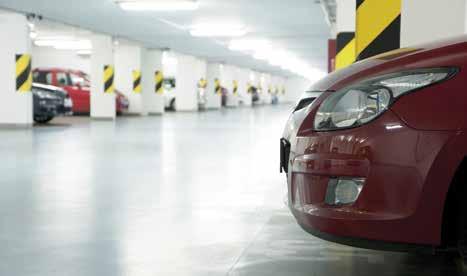
The official line is that the move to incorporate CO2 emissions into the BIK calculations (along with the car’s original market value (OMV) and annual mileage covered) will encourage business employees into electric cars and less polluting and greener vehicles.
However, leasing market experts are adamant that the move will have the opposite effect, and that the overall less favourable BIK rates across the board will force more people to walk away from their company car altogether, and instead opt for an older and more polluting privately owned vehicle.
The fact that the threshold below which 0% BIK is applied on electric vehicles is being lowered - from the previous €50,000 to €35,000 this year, and down to €20,000 in 2024 and €10,000 in 2025 - further undermines the Government’s assertion of wanting to encourage company car drivers to make the switch to EVs.
While the subsequent announcement in March of a temporary (until the end of the year) reduction in OMV for BIK calculation by €10,000 on all but the most polluting cars will be welcomed, anecdotal evidence seems to back up the fear that employees will increasingly choose to walk away from their company cars. In the past month I have spoke to
Car
three company employees, two of who have already opted out of their company car scheme this year, while the third told me that while he is continuing with his company car for now, it no longer makes financial sense for him to do so and he is looking at his options for 2024 when his lease is up and the temporary OMV reduction is due to lapse.
Of the two who opted out, both have exchanged their company cars for older models, with one purchasing a seven year old Škoda Octavia diesel to replace his previous one year old company diesel.
Others have stated that while they are open to the idea of going electric, there just isn’t the availability of suitable cars within their price brackets, while the issue of range and public charging limitations remains a factor particularly for those covering longer distances.
Even those thinking of opting out of a company car scheme to buy an electric car privately will have been disincentivised by the announcement that the Government is reducing the SEAI administered grant offered on such vehicles from €5,000 to €3,500 from July. Though in fairness, if the money saved from this grant reduction is, as mooted, instead ploughed into developing an improved charging infrastructure, that may prove to be a benefit for the greater good in the long term.
Given that the Government is actively looking at plans to reduce private car usage, you would also have to question the logic of continuing to include business mileage as a factor in calculating BIK rates so that the greater distances you cover, the less BIK you pay. Agreed, having company cars parked up doesn’t make huge business sense, but when you hear anecdotal stories
of drivers taking elongated routes to destinations just to bring their mileage up to the next (lower) tax threshold, or, for the same reason, opting to use their car on journeys across town when alternative transport is readily available, this policy seems rather counterintuitive. Surely at a time when the Government is encouraging people to get out of their cars and do more journeys via public transport and other means, offering incentives to use your car unnecessarily should be the last thing it is doing?
And of course there is a third element to the mixed messaging coming from Government. While diesel is increasingly portrayed as the devil incarnate fuel, it remains the only energy source that the Government offers VAT rebates on to business users. Drive a modern clean petrol or hybrid car and you pay full prices at the fuel pumps. But rock up in a 20 year old Euro 3 diesel and as long as you are VAT registered you can claim the 23% tax back on your business mileage…..go figure.
It’s so obvious that it shouldn’t even need saying, but offering business users genuine incentives to switch to electric company cars is one of the quickest and most effective ways to increase our EV carpark. Not least because those same new EVs will, in a couple of years, feed down into the used car market where currently there is a severe shortage of product for people looking to move into affordable electric motoring.
In carrot and stick terms, the Government’s company car strategy for moving to green vehicles seems to be one of offering a very small carrot while wielding a rather limp stick. A rethink of current policy is urgently required.
Doyle - cathal@fleet.ie
FLEETCAR | MAY 23 | NEWS 1
Cathal
82 | CONTEMPLATIONS
Government’s mixed messaging on Company
usage needs a rethink






Networking is an investment in your business! THURSDAY NOVEMBER 9 www.fleet.ie Attend the Fleet Transport Awards & Networking Event and yield great results for years to come... your road to success F OR S PONSORSHIP AND T ICKET B OOKIN g S PLEASE CONTACT: O RLA S WEENEY | T: +353 86 2439239 | ORLA @ FLEET.IE MARY M ORRISSEY | T: +353 87 2178495 | MARY @ FLEET.IE TRANSPORT Engaging Connectivity www.fleet.ie AWARDS 2023 Thursday 9 November 2023, Johnstown Estate Hotel, Enfield, Co. Meath
Your local funding experts.
At Close Brothers, we’re proud to provide a people-led service. From hire purchase and leasing, to invoice finance and asset based lending, our commercial funding experts can help you access the finance your business needs. For more information contact us today.
Northern Ireland
Donegal, Derry / Londonderry
Cathy McGale +44 (0)7500 038922
Antrim
Frank Coffey +44 (0)7725 550705
Tyrone, Fermanagh, Armagh
Garvan McCauley +44 (0)7526 623012
Armagh, Down
Jenna Gass +44 (0)07880 757977
Republic of Ireland
Connaught
Robert Keane +353 (0)87 337 7133
Leinster
Jennings +353 (0)87 147 7841
Kilkenny, Carlow, Laois, Offaly Anthony Aylward +353 (0)86 387 0726
Kilkenny, Waterford, Wexford
Frank Byrne +353 (0)86 662 7760
Limerick, Clare, Kerry
Pat Barry +353 (0)87 195 3971
Cork, Tipperary, Kerry
Willie John Manley +353 (0)87 638 7851
Close Brothers DAC (being an Irish registered designated activity company having registration number 706530) trading as Close Brothers Commercial Finance, Close Brothers Asset Finance, Close Brothers Motor Finance and Braemar Finance is regulated by the Central Bank of Ireland. Registered address: Swift Square, Building 1 Santry Demesne, Northwood, Dublin 9, D09 A0E4, Ireland. Close Brothers Invoice Finance and Close Brothers Commercial Finance are registered business names of Close Invoice Finance Limited, a UK registered private limited company (and its Irish registered branch of the same name having registration number 908024).
Donegal Mayo Clare Limerick Kerry Tipperary Cork Kerry Waterford Kilkenny Kilkenny Carlow Laois Galway Roscommon Sligo Cavan Tyrone Derry / Londonderry Antrim DUBLIN BELFAST Armagh Armagh Fermanagh Monaghan Down Westmeath Offaly Kildare Wicklow Wexford Meath Louth Longford Leitrim
Karl
Visit closecommercialfinance.ie






















































































































































































































































































































 Edited by Cathal Doyle - cathal@fleet.ie
Edited by Cathal Doyle - cathal@fleet.ie
















 Jarlath Sweeney
Jarlath Sweeney

